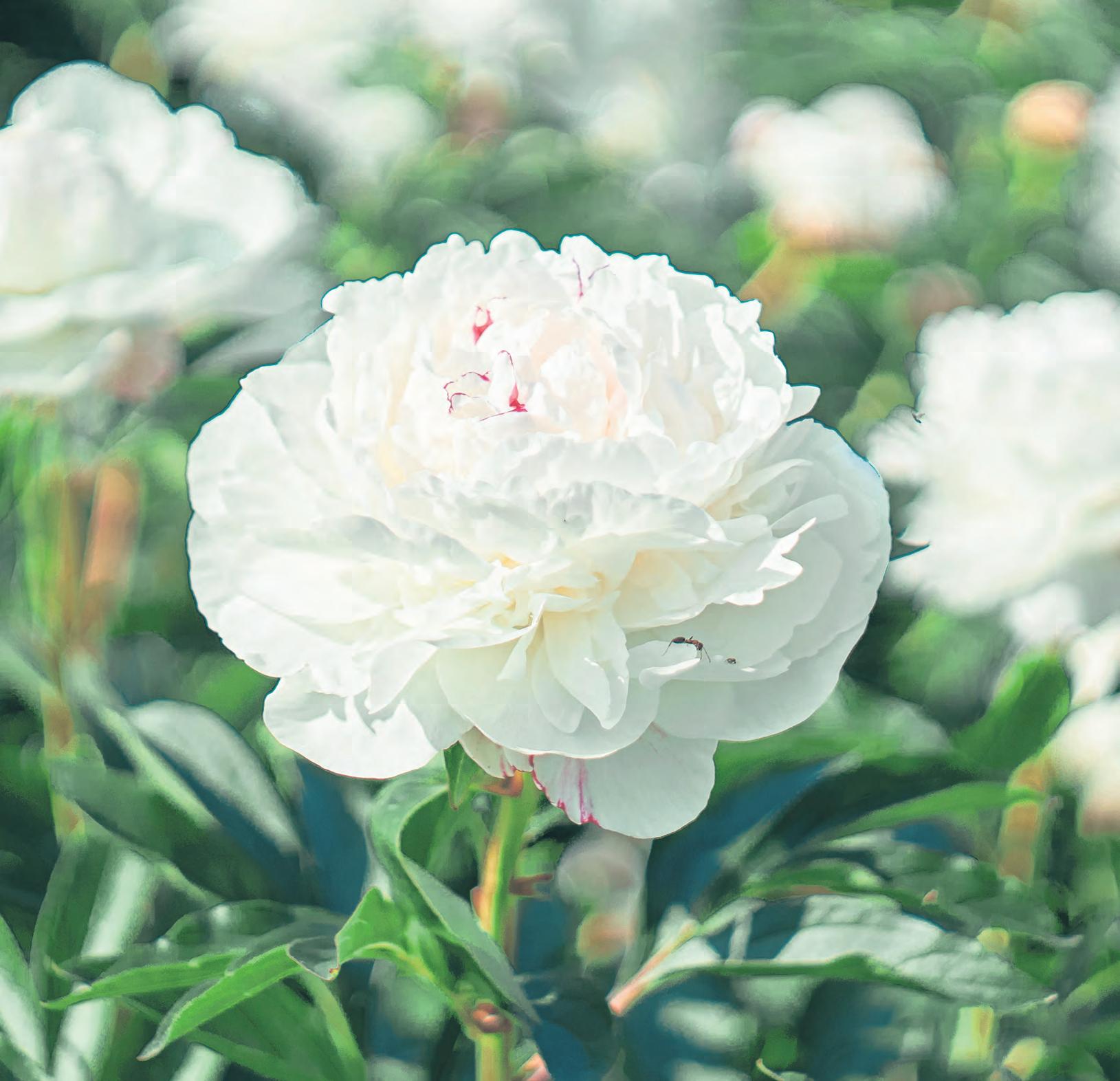


Hampshire www.countrygardener.co.uk Issue No 148 May 2023 FREE How to grow organic Readers share their gardening myths and magic Perfect sweet peas ALL THINGS WHITE AND WONDERFUL The power of one colour gardening PLUS: COUNTRY GARDENER 1998-2023 GROWING FOR COUNTRY GARDENER1998-2023 WIN! A GORGEOUS AFFINITY SWING SEAT www.garsons.co.uk Fontley Road Titchfield Hampshire PO15 6QX 01329 844336 GARDEN CENTRE • FARM SHOP • OWTON’S BUTCHERS • THE NATURE COLLECTIVE • THE ORANGERY TEA HOUSE
A FAMILY RUN NURSERY FOR THE EXPERIENCED AND NOVICE GARDENER
Good range of OUTDOOR
POTS - all frost proof
GREAT OFFERS
ON COMPOST (all compost we supply we use ourselves, so we can recommend it) DAHLIAS
Our own Dahlia tubers now available for sale
Arboricultural Consultants TREE ADVICE & REPORTING ■ Tree Condition Advice and Surveys ■ Tree Liability Assessments and Management Plans ■ Tree Preservation Order Advice ■ Planning Applications - Advice and Reports (to BS5837 standards) ALL ENQUIRIES WELCOME 01202 876177 www.treeadvice.info enquiries@treeadvice.info We are a Dorset based company offering a friendly, professional tree consultancy service for all areas of the South. WE SPECIALISE IN: MSc.Res.Man.(Arb), OND (Arb), F.Arbor.A MARK HINSLEY


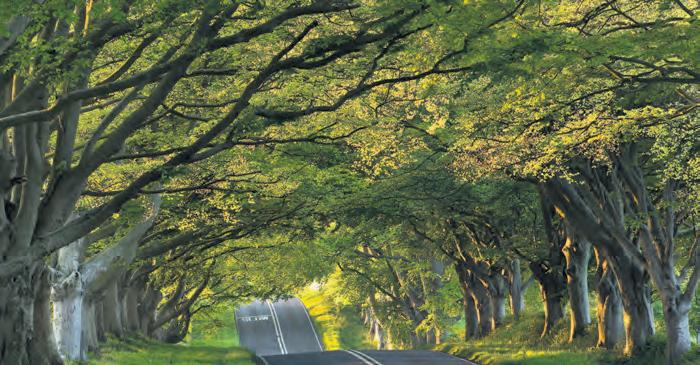
www.basketsnblooms.co.uk OPEN 7days Week


392 Christchurch Rd. West Parley, BH22 8SW 9am - 5pm Mon - Sat 10am - 4pm Sundays Tel: 01425 655150


For YOUR PLACE 4 PLANTS
Bedding plant trays/packs Lobelia, Petunias, Marigolds, Begonias, Impatiens, Nemesia, Verbena, etc. £2.99 per pack
Patio/Basket plants more than 100 varieties £1.49 each. 18 pots for £25
Dahlias, Osteos, Marguerites etc. in 1 litre (large) pots £2.49 ea.
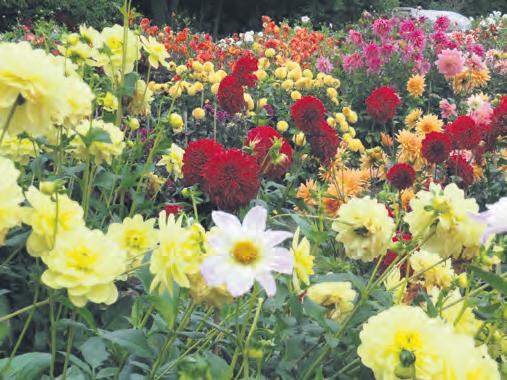
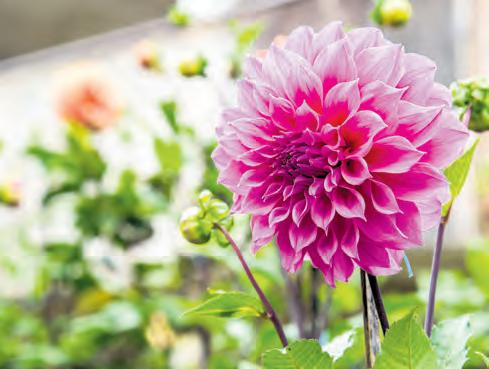
Ivy leaf Geraniums £1.99
Vegetable plants and strips from £1.75 Geraniums (zonal Pelargoniums) £2.99
Alpines & Cottage Garden Plants
Bush and Climbing Roses: £9.99
Seeds: biggest selection ever from £99p per packet
Hanging baskets - traditional mixed and single variety, various prices.
Country Gardener 2
Stuckton, Fordingbridge, SP6 2HG 10am - 4pm everyday updates and news join our eMail list on our web site.
Blooms Cafe at our West Parley branch - tasty local produce for an even more pleasurable visit
Large Selection of Perennials (Cottage Garden Plants),Trees, Shrubs, Herbs, Alpines and Vegetable Plants. Plus large selection of Ornamental Trees, Fruit Trees and Climbers.
Up Front!
OUR HIGHLIGHTS OF THE GARDENING CALENDAR OVER THE COMING WEEKS IN HAMPSHIRE
Head gardener leads guided tour of Chawton House gardens
There’s a date in May and in June to learn about the fascinating history of the gardens at Chawton House with a guided tour with the head gardener. The two guided tours are on Friday. 19th May and Friday 16th June. From Elizabeth Knight’s completion of the formal garden in the early 18th century to Edward Austen Knight’s construction of the Walled Garden and Montagu Knight’s addition of the Library Terrace you will discover how the gardens have been altered over the years to reflect the fashions of the time.
Chawton House,Chawton , Alton GU34 1SJ
Allium attraction at Arundel Castle
NATURAL WORLD CELEBRATIONS AT GILBERT WHITE’S GARDENS
Gilbert White’s House and Gardens hosts a Nature Day on Sunday, 14th May which is being classed as a ‘celebration of the natural world’. Throughout the day there will be a range of activities led by environmental experts from pond dipping to bug hunting to bird spotting walks. Nature and conservation groups from all over the country will be in attendance including Alton Natural History Society, Hampshire Bat Group and the River Wey Trust. 10.30am to 5pm. Children are free and adults £9.
Gilbert White’s House & Gardens, High Street,, Selborne Alton GU34 3J

BANK HOLIDAY DATE FOR SHERBORNE COUNTRY FAIR

Arundel Castle’s award-winning gardens have a number of highlights throughout the spring and summer. One of them features the beauty of thousands of alliums which pop up during May throughout the gardens. Visitors get the chance to see many of the long-stemmed plants with their pom pom heads in the English herbaceous borders. Arundel Castle, Arundel, West Sussex BN18 9AB
Sculpture exhibition back until early June
The award-winning sculpture show at Sculpture by the Lakes is back and running until 4th June with a variety of sculpture from small pieces on display in the gallery to monumental works in the park. 120 incredible pieces of sculptures displayed in 26 acres of parkland along Dorset’s River Frome. Art, landscape and tranquillity. Talks, artist Q&A’s and workshops will run alongside the exhibition daily 10am to 5pm. Tickets £14.50.
Sculpture By the lakes, Pallington Lakes, Dorchester DT2 8QU
Four Seasons exhibition at Exbury Gardens
There’s an imaginative exhibition to view in the Arrow Gallery at Exbury Gardens based on the theme of the Four Seasons. A total of 11 artists are displaying their work in an exhibition which runs from 27th April through to 7th June.

Open Monday to Sunday 10am to 5pm. Five Arrows Gallery, Exbury Gardens, Exbury, Southampton SO45 1AZ
Gorgeous gardens opening in Hampshire during May for the National Garden Scheme
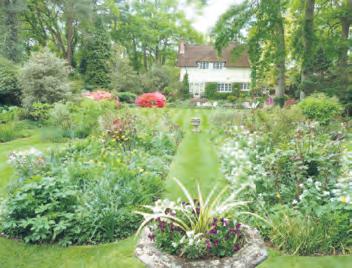
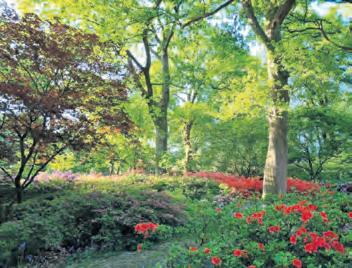
There’s a selection of gorgeous gardens opening in Hampshire for the National Garden Scheme during May.
A new opening for the NGS, on Sunday 14th May from 10.30am until 7.30pm, COLES at Basing Dean, Privett, Alton GU34 3PH is a historic 25-acre garden that’s being renovated, with dazzling rhododendrons, azaleas and bluebells, Japanese acers among ancient oak woodland, koi, wildlife and Japanese ponds, lawns and contemporary beds of grass and perennials.

Admission is £10, children free; homemade teas will be available, dogs allowed, wheelchair access, plants for sale and visitors can bring their own picnic to
Sherborne Castle Country Fair is being staged on Spring Bank Holiday Monday, May 29th. It’s a special day in a spectacular setting and has an horticultural theme as well as the best of a traditional country fair. The event every year attracts over 250 high quality craft, trade, plant and food stands. There are rural craft displays highlighting lots of skills from stick carving to hedge laying. The fair starts at 9am and runs thorough to 5pm Adult tickets £15 - £12.50 in advance. Under 5’s free . Car parking free.
Sherbourne Castle, New Road, Sherbourne DT9 5NR
enjoy in the extensive acres. The garden also opens for the NGS by arrangement with the owners through to November for groups of ten and upwards; contact Mike and Shuna MacKillop-Hall on 07423 541105 or email mikemackillophall@gmail.com
THE COTTAGE at 16 Lakewood Road, Chandler’s Ford, Eastleigh SO53 1ES opens for the NGS on Sunday 30th April, Bank Holiday Monday 1st May and Sunday 7th May, 1.30pm-5.30pm each open day. There are cottage style borders, azaleas, camellias and other seasonal delights under old oaks and pines, bog garden, ponds, wildlife areas and kitchen garden.
16 Lakewood Road
Admission is £4.50, children free, homemade teas will be available, plants for sale and coaches welcome. The garden also opens to groups in April and May for the NGS by arrangement with the owners Hugh and Barbara Sykes on 02380 254521 or email barandhugh@aol.com
www.countrygardener.co.uk 3
‘If you’ve never experienced the joy of accomplishing more than you can imagine, plant a garden - Robert Brault
‘You can have all the rest of the year if you will give me April and May - Spanish proverb
Coles
Large traditional family-run nursery
Wide selection of trees, shrubs, perennials & fruit bushes

4-acre woodland garden & Tea Rooms
Many unusual plants
Hours: Mon-Sat 9am-5pm Sun & Bank Holidays 10am-5pm
Closed on the Coronation day
MACPENNY’S NURSERIES BRANSGORE


Burley Rd, Bransgore, Nr Christchurch BH23 8DB Tel: 01425 672348 www.macpennys.co.uk
EVERYTHING FORASMALLWATER FEATURETOA LARGEKOIPOND
Reach a passionate and affluent audience of gardening enthusiasts
Over 100,000 copies distributed every month
If you would like to advertise your business or service in our Hampshire magazine, please contact ava@countrygardener.co.uk Tel: 01278 786139
Cedar Nursery, Sandy Lane, Romsey SO51 0PD Tel: 01794 367511
Web: www.southernwaterscapes.net

Email: swac.1@virginmedia.com
10% OFF PLANTS WITH THIS ADVERT
EVERYTHING FOR YOUR GARDEN POND
• Extensive range of quality aquatic and bog plants
• Large range of cold water fish from goldfish to high grade Japanese Koi

• Expert technical advice on pumps, filters, water quality and fish health
• Everything for building and maintaining your pond • Experienced and knowledgeable staff
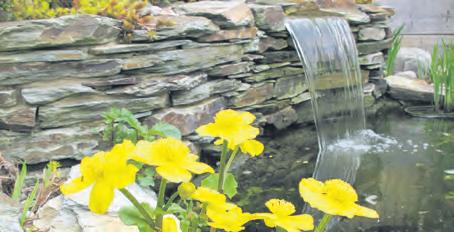

Nightingale Nursery Ltd
Gardeners Lane, East Wellow, Romsey, SO51 6AD Tel: 02380 814350 | www.nightingalenursery.co.uk
A family run, wholesale & retail traditional nursery specialising in Clematis.

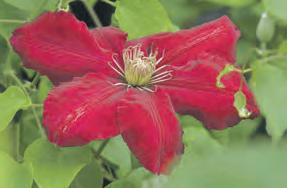
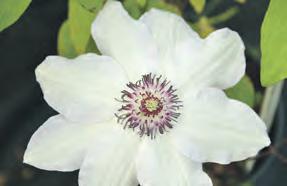

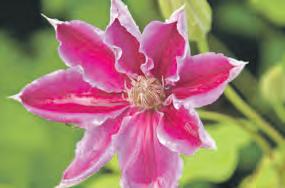
In house British grown high quality plants, exceptionally priced and affordable for all.
We also offer a wide range of Climbers, Shrubs & Herbaceous Perennials.
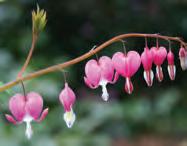
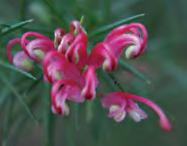

Every year we grow an extensive array of Seasonal Patio & Basket plants along with pack Bedding.
Expert growers for over 40 years with friendly knowledgeable staff.
With over 200 varieties of Clematis to choose from, you’ll be sure to find one that is perfect for you.
BringingBeautyintoYourGardens
Open Monday to Friday 9am – 4pm | Open Weekends from mid-March to June 10am – 4pm.
Our annual catalogues are available for viewing on the retail section of our website.
Country Gardener 4
Gardeners cuttings in Hampshire
Sparrows the most spotted birds in our gardens
House sparrows are the most spotted birds in UK gardens for the 20th year in a row, according to new data. This comes despite the decline of the bird’s population, with nearly 22 million house sparrows lost from the country since 1966.

Roughly 1.5 million house sparrows were spotted in gardens between 27 and 29 January this year, according to people who took part in the Big Garden Birdwatch, the garden wildlife survey conducted by the Royal Society for the Protection of Birds (RSPB).
However, RSPB data shows that the number of house sparrows spotted in UK gardens has dropped by nearly 60% since the survey began in 1979.
This year, more than half a million people in the UK took part in the Big Garden Birdwatch, and more than 9 million birds were spotted.
The results also identified problems faced by other common bird species, including chaffinches and greenfinches. These birds have been affected by the disease trichomonosis, which can cause wounds in the throat.
Transform your lawn for nature
Use your lawn to support native wildlife. That’s the challenge to Hampshire gardeners from a new Wild About Gardeners Campaign , a joint initiative between the RHS and the Wildlife Trust. The UK has lost more than 97 per cent of its wildflower meadows since the 1930s, destroying once thriving plant, animal and insect populations. The campaign will show how to increase biodiversity in green spaces. Ideas include recording species in our lawns throughout the year, planting wildflower plugs or sowing wildflower seeds to boost plant diversity and experimenting with different lawn lengths to create varied habitats.
“We want people to get up close and personal with their lawns this year,” said RHS Senior Wildlife specialist Helen Bostock.
“Hold back on weedkiller and fertiliser and bring your lawn to life.”
SEARCH STARTS FOR TOP PARTNER GARDENS
Voting is now open for the RHS Partner Garden of the Year Following the success of the first two years, people will once again have a chance to name their top ‘Feel Good Garden’ out of more than 220 RHS Partner Gardens.
Thousands of votes were cast in 2022, when Nant y Bedd garden in Monmouthshire was crowned winner and the RHS is hoping that more and more people will want to show their appreciation of their favourite gardens by clicking to vote.
Votes can be cast via the RHS website rhs.org.uk/pgoty until 29th September and visitors can choose their favourite garden from one of the following six regions: Midlands and East Anglia; North and Northern Ireland; Overseas; Scotland; South East and Channel Islands; and South West and Wales
Watercress celebrations at Alresford
The Alresford Watercress Festival returns to the streets of Alresford on Sunday 21st May for another unique celebration of watercress. The festival cavalcade gets things going and there’s music, song and dance taking place all day on the main stage inside St John’s Church and on the streets. Well known chefs demonstrating their skills is one of the highlights of the traditional festival

Broad St, West St and East St, Alresford Winchester SO24 9AR
A LOOK AT NEWS, EVENTS AND HAPPENINGS IN YOUR AREA
PROFESSIONAL GARDENING OPPORTUNITIES WITH THE NATIONAL GARDEN SCHEME
Trainee professional gardeners are being helped by the National Garden Scheme, with placements at historic gardens, thanks to a partnership between the NGS and English Heritage.
Since 2006 English Heritage has run the annual Historic and Botanic Garden Training Programme which offers up to 20 would-be gardeners a 12-month placement at one of their estates. A new commitment by the NGS will support seven apprentices per year for the next three years.
Hampshire Time Off
We are now well into a new gardening season and with it our Time Off section continues to expand as more garden clubs return to a full schedule of meetings. If your club would like Country Gardener to carry details of your club or societies’ activities then either email us at editorial@countrygardener.co.uk or send details to Time Off, Mount House, Halse, Taunton TA4 3AD
May

2ND
Medstead Gardeners Club
‘GARDENING IN CLIMATE CHANGE’ - KELVIN MASON
www.medsteadgardenersclub.xyz
9TH
Lymington Gardeners Club
‘ALL YEAR ROUND COLOUR’ - GEOFF HAWKINS
Details on 01590 672909
10TH
Totton & District Gardener’s Society
‘BUGS & BEETLES’ - PAULINE WEEKS
Details on 023 80292761
11TH
Romsey Organic Gardeners
‘COTTAGE GARDENING’ - DAVID STANDING email: johnv61@btinternet.com
13TH
Medstead Gardeners Club PLANT SALE OUTSIDE MEDSTEAD GREEN www.medsteadgardenersclub.xyz
Warsash Horticultural Society PLANT SALE www.warsashhorticulturalsociety. chessck.co.uk
17TH
Milford Gardeners’ Club
‘LESS WORK, MORE COLOUR: SUSTAINABLE LOW MAINTENANCE GARDENING’ - GILLIAN TAYLOR www.milfordgardenersclub.co.uk
20TH
Milford Gardeners’ Club
21ST ANNUAL PLANT FAIR
Village Green 8.30am - 1.30pm email: milfordgardeners@gmail.com
24TH
Uplyme & Lyme Regis Horticultural Society
‘MAKING A BUTTERFLY GARDEN’ - MARTIN YOUNG
Details on 07767 261444
31ST
Warsash Horticultural Society
‘MAKE A BUTTERFLY GARDEN’ - MARTIN YOUNG www.warsashhorticulturalsociety. chessck.co.uk
June
6TH
Medstead Gardeners Club
‘MY GREENHOUSE YEAR, PROPAGATION OVER WINTERING & DESIGN’ - GILLIAN TAYLOR www.medsteadgardenersclub.xyz
14TH
Cotton & District Society
‘HONEYBEES IN THE GARDEN - KRYSIA WATSON
Details on 023 80292761
21ST
Milford Gardeners’ Club
‘A ROSY START TO THE YEAR: TYPE OF ROSE, MAINTENANCE AND PROPAGATION’ - MARTIN PERRY
24TH
Hayling Island Horticultural Society COMMUNITY FAIR AND SUMMER SHOW www.hihs.org.uk
28TH
Uplyme & Lyme Regis
Horticultural Society
‘EDIBLE FLOWERS AND LEAVES - SIAN DAVIS
Details on 07767 261444
Warsash Horticultural Society
‘THE WHITE GARDEN’ - CHRIS BIRD www.warsashhorticulturalsociety. chessck.co.uk
CUTTINGS
www.countrygardener.co.uk 5
Legal victory set to change how we see JAPANESE KNOTWEED
Fast-growing invasive Japanese knotweed is perhaps the most reviled plant in the UK but why is it such a problem and what does the latest research say and how does a recent court ruling change things
kept in check by the climate and thinner soil. In Japan, for instance, it’s found naturally on sloping sites that consist of well-drained volcanic lava. However, when it’s grown in richer conditions in a mild climate it becomes a thug. The book Alien Plants (Clive A. Stace and Michael J. Crawley) records that it shades out native species and also alters the soil’s chemistry by releasing allelochemicals that inhibit the root growth of other plants.
How did Japanese knotweed get into the UK?
Japanese knotweed came to the UK in the mid-19th century after a Bavarian doctor named Philipp Franz Balthasar von Siebold (1796-1866) sent back Japanese specimens to leading botanic gardens and societies, including Kew and the RHS. By 1850 Kew Gardens were selling this new ornamental to private buyers. The clone was female and it’s thought that all the Japanese knotweed in the UK (and possibly the world) is genetically identical to the original collection made by Siebold.
By 1886, it had escaped from gardens and was colonising the cinder tips of Maesteg near Cardiff. Some estate owners planted it to stabilise sloping banks and this included some railways cuttings and rivers as well.
A significant legal victory in a case brought by a householder affected by Japanese knotweed has raised the prospect of an increase in claims from people stricken by the hazardous plant.
The court of appeal ruled that a homeowner could recover damages for a loss of value of their property from having had Japanese knotweed, even if it had been treated.
Marc Davies was awarded £4,900 from Bridgend council in south Wales in a judgment that his lawyer, said established that one could recover damages for the stigma attached to the house, even after knotweed had been eradicated, and not just physical damage caused by it.
Japanese knotweed can take five years to treat. It can grow to three to four metres in just 10 weeks and its rhizomes can spread seven metres horizontally underground and compromise the structure of buildings.
The species was introduced by botanists into Britain in the 19th century as an ornamental plant, with Victorian engineers purportedly using it to stabilise railway embankments. Network Rail – along with local authorities – finds itself as the defendant in many cases. The rapacious growth of Japanese knotweed, some 10cm per day, can damage buildings, paths and tarmac and it has popped up through flooring and cavity walls.
Those on the western side of Britain, in places where the climate tends to be warmer and wetter, as well as those in inner city areas with warmer microclimates, are most affected.
It’s also a problem in the north-west. Bolton is said to be the Japanese knotweed hotspot of the UK, according to invasive plant specialists Environet, although no one quite knows why. Environet offers a free photo identification service.
Why is Japanese knotweed Invasive?

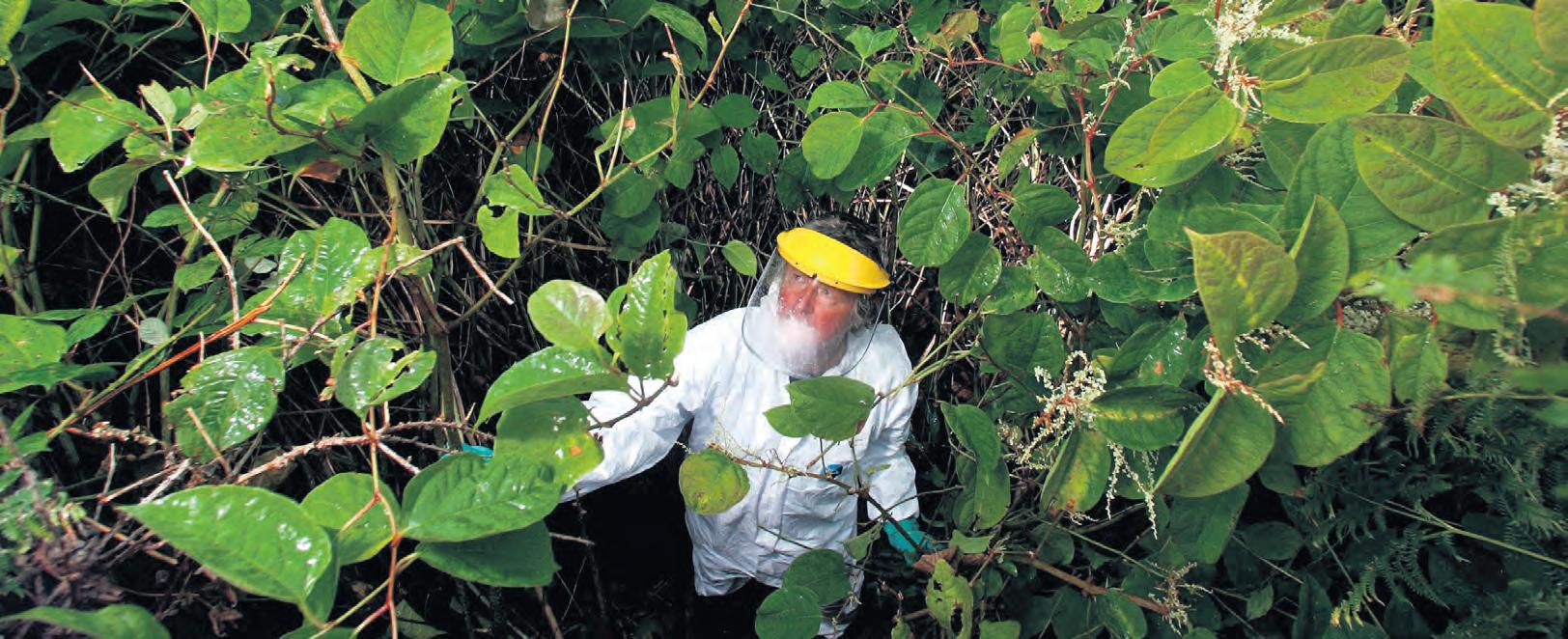
Japanese knotweed (Reynoutria japonica), also known by its old name Fallopia japonica, is native to Japan, Taiwan and northern China. It’s a well-behaved plant in its native habitat,
In 1870, William Robinson actively encouraged gardeners to plant it when he published The Wild Garden, one of the most influential gardening books of the Victorian era. These days we are far more careful about introducing alien plants than we were, because we understand that they can (and do) behave quite differently when exposed to different climates and soils.
What’s the law about Japanese knotweed?
In 1981 The Wildlife and Country Act made it an offence to introduce Japanese Knotweed into the wild. It is not illegal for you to have Japanese knotweed on your property, but it is against UK law to cause or allow the plant to spread in the wild. If you do spot it in your garden, it’s best to eradicate it before it travels into a neighbouring garden. If you see it in the wild near you, report it to your local council. Network rail can be contacted on Network Rail their helpline (03457 11 41 41). It’s a much more complex affair to report it on waterways, because different areas of the country are managed by different authorities. However, it is known to escalate flooding because it blocks up drainage channels. See gov.uk for more on disposing of Japanese knotweed.
A survey of professionals
The researchers also conducted a survey of members of the Royal Institute of Chartered Surveyors and the Property Care Association. Their members have been involved in property surveys and they have supervised the treatment or removal of Japanese knotweed in the UK. They were asked to report whether they had observed damage to buildings occurring with Japanese knotweed. The conclusion was that where Japanese knotweed was associated with damage, it was likely that the plants had exacerbated existing damage, rather than being the initial cause of the damage. Overall, their study “found no support for the commonly suggested ideas that Japanese knotweed routinely damages buildings and that its influence extends seven metres from plants above ground. Nor did we find evidence that it poses a major risk to built structures.”
Country Gardener 6
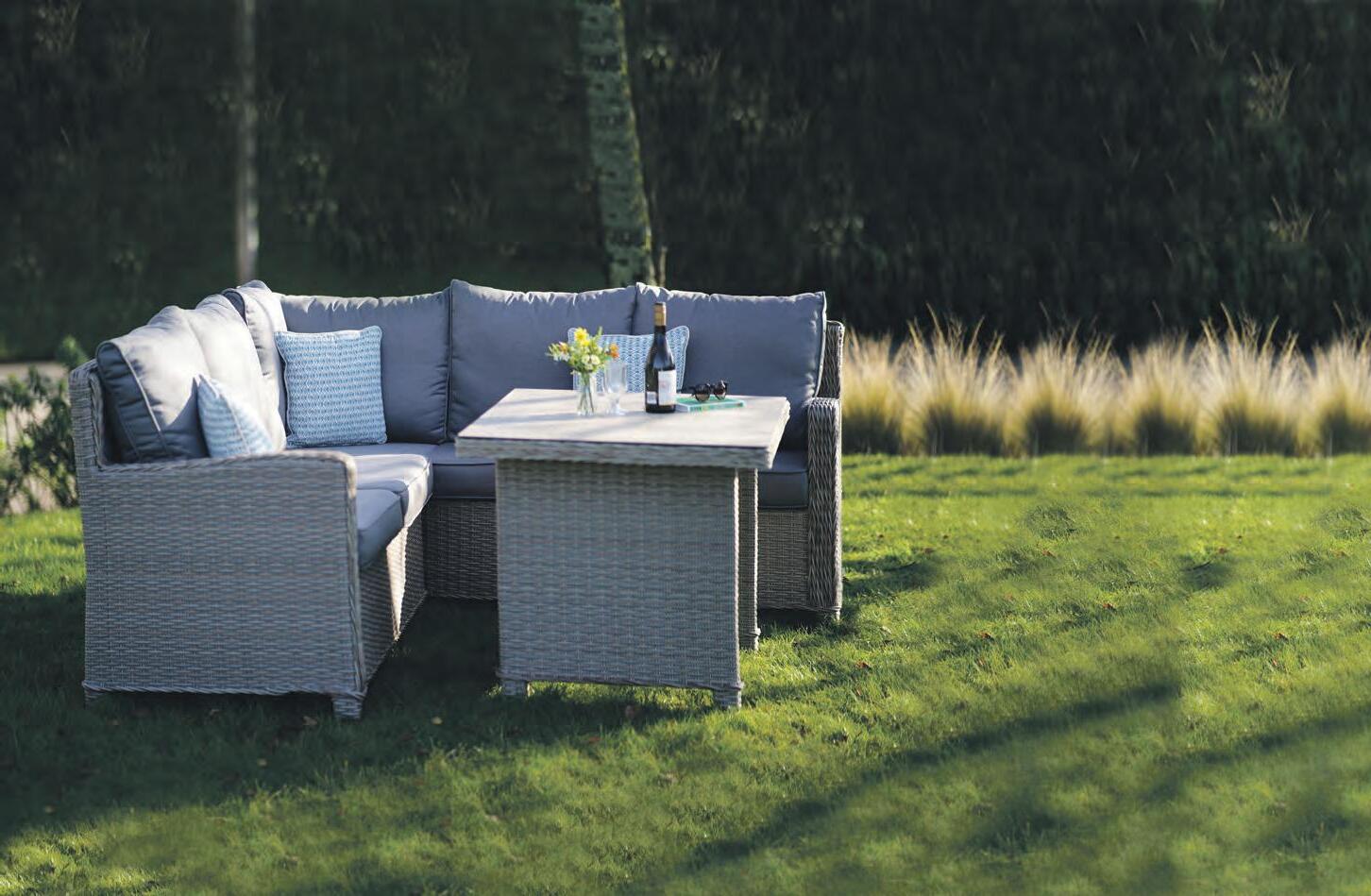





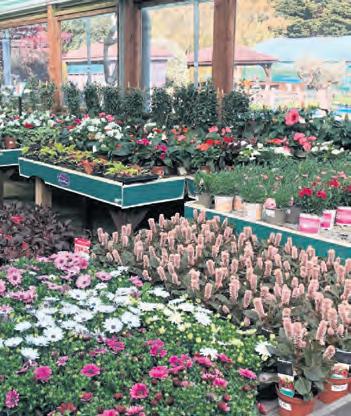


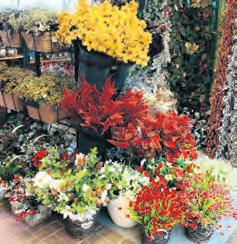
www.countrygardener.co.uk 7 Stewarts Christchurch Garden Centre, Lyndhurst Road, Christchurch, BH23 4SA Tel: 01425 272244 Stewarts Broomhill Garden Centre, God’s Blessing Lane, Broomhill, BH21 7DF Tel: 01202 882462 Stewarts Abbey Garden Centre, Mill Lane, Titchfield, Fareham, PO15 5RB Tel: 01329 842225 Holiday at home this summer with our new Outdoor Furniture @StewartsGardenCentres /StewartsGardenCentres www.stewarts.co.uk Scan the QR code to shop online Our Outdoor Furniture is selected for its quality & durability Tel: 01329 834407 www.mudislandgardencentre.com Southwick Road, Wickham, Hampshire PO17 6JF Open 7 days a week, inc Bank Holidays 9am-5pm Mud Island Garden Centre Excellent range of seasonal plants now in Plant Centre Giftware Garden Furniture All the gardening sundries you need in our shop, as well as beautiful gifts. Why not pay us a visit... Artificial Flowers
HOW TO GROW A TREE IN A POT
PLANTING TREES IN
AND GROWING
Growing even one tree in a pot can add blossom, fruit, shelter shade and scent to your patio.
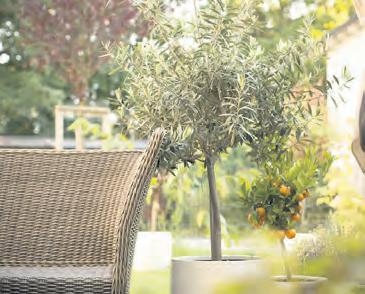

Planting trees in containers is becoming more popular, especially in gardens with little or no outside space. You don’t need a large area to grow a tree. If you have a porch, patio, or balcony, you can grow a tree in large container or pot.

Container-grown trees can be used to frame entryways or to provide interesting focal points. They are well suited to small spaces in the landscape such as patios and decks and can be used alongside other container-grown plantings as well.
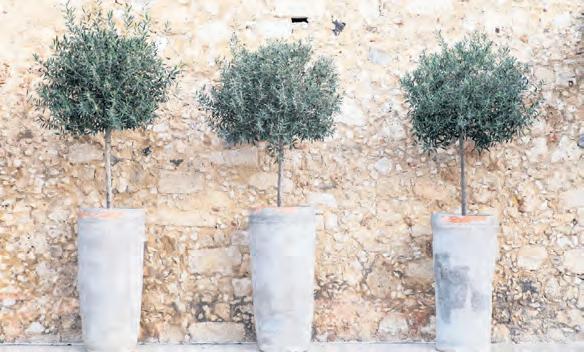
Trees need large pots although tiny saplings are best grown in smaller pots and potted into slightly bigger ones each year as they progress and establish. Trees can be planted in regular, moveable containers as well as in large, permanent planters. Containers and planters for landscape trees are available in numerous styles, shapes, and colours. Containers should always complement their surroundings as well as the trees that are placed in them. Therefore, the mature size of the tree should be considered in order to choose a container with adequate space to accommodate both the growing tree and its roots. Containers should also be as wide as they are high in order to provide the best possible insulation to the roots.
The overall weight of a container is important too, and this should be taken into consideration as well. Not only is the weight of the container itself a factor, but consider how much weight the soil, tree, and water will add to it, especially if the container will be used in areas such as balconies or rooftops, where structural weight capacity may be an issue.
TREE SOIL IS VERY IMPORTANT TO THE HEALTH OF TREES
The soil should maintain sufficient aeration and drainage while retaining suitable amounts of moisture.
Good container soil retains adequate levels of water without becoming waterlogged. Do not use soil directly from the garden or surrounding landscape. Regular soil may not drain well in containers and could be more prone to weeds, insects, and diseases.
Instead, use soil-based compost. This is widely available at nurseries and garden centres, or you can make your own using premium potting soil and amending it with compost, sand, and perlite.
Caring for a container-grown tree
is different from a tree growing in the landscape. They are more prone to drying out, therefore, containergrown trees need regular and thorough watering. Container-grown trees should be supplemented annually with slowrelease fertiliser or use a liquid feed at regular intervals. Refresh the soil each spring by removing the loose, dry topsoil and replacing it with fresh, compostenriched soil.
THE RIGHT CHOICE OF TREE IS ESSENTIAL
The greatest challenge in selecting trees for containers is in choosing those that are hardy enough to withstand extremes in temperature and can establish roots in a limited amount of soil. Temperature is one of the major determining factors. When trees are in the ground, the soil shields them from extremely cold temperatures.
Top tips
• Remove the top five cms of compost each spring and replace with fresh plus compost add more controlled release plant food.
• Grow your tree in pots of soil-based compost. Multipurpose will dry out too quickly, be too light and need replacing every year.
• Select a pot which is heavy enough that it won’t get blown over in the wind.
• Don’t choose trees that have roots bursting out of the pot they are being sold in - they might not establish well.
• Choose hardy plants so they can be placed in the garden if at some time they outgrow their pot.
• Select plants that peak at different times of the year so that the container has lots of highlights as the season progresses.-
Tree roots are less cold hardy than the rest of the tree. As a result, the roots of trees that are planted in containers may die when temperatures drop below freezing.
When the soil freezes, the roots cannot absorb water. Choosing a suitable tree for a potted environment varies depending on its overall size, growing requirements, and location. Naturally, if the mature size of a tree falls on the small side, it is better suited for container growing. Smaller species and dwarf varieties are good candidates for containers. Trees that will remain situated in permanent locations should be chosen for their year-round appearance, size, and maintenance requirements.
Evergreens and nearly any other dwarf conifer can be grown in containers. Good choices include: boxwood. English yew, dwarf camellias, holly, and spruce.
Trees should also be compatible to their container as well as their surroundings. Since the size of a tree is usually proportional to the size of its root system, containers, in most cases, will restrict its ultimate size. However, if a tree does begin to outgrow its container, there are options.
PRUNING CORRECTLY WILL ENSURE LONG LIFE AND HEALTH
You can prune the roots back and replant it into the same container or transplant it in another location. Root pruning is a similar technique to bonsai and will help to keep the tree small. Remove the tree from its container, tease out and trim the roots, and then repot. Rather than having to resort to the intense task of root pruning, you should consider transplanting the tree to a larger container or if space permits, within the landscape. Tender evergreen or citrus trees should be moved indoors for overwintering. Protect the tree roots from winter cold by keeping the container in a protected area or use an insulating material specifically designed for containers during the coldest months.
Country Gardener 8
POTS
ON PATIOS IS NOW HUGELY POPULAR BUT THE WRONG CHOICE OF CONTAINER, SOIL AND EVEN TREE CAN MAKE IT AN UNHAPPY EXPERIENCE
Magnolia
Acer
Potted olive trees
Potted trees are an important design aid
Bluebell walk aiming for a 2023 record breaking year
Iconic colourful walk celebrates 50th anniversary and aims to attract more visitors than ever before
The iconic Arlington Bluebell Walk is now open for its landmark 50th season. And owner John McCutchan is hoping for record numbers in what is a very special year for him personally and his talented and devoted team.
The most visitors in any one year was 23,000 in 2019 - and John is confident this can now be beaten.
He said: “Being our 50th anniversary makes it a very special year indeed on the Arlington Bluebell Walk.
“We will be open daily for four weeks until May 10, and of course supporting local charities is at the heart of what we do.
“There will be 19 charities managing the walks and providing the refreshments, and they will each receive a substantial donation from the overall proceeds.”
The garden is very special to John. He works on the land 365 days a year.
His late wife Carolyn created the most wonderful garden around the Farmhouse which has been renovated since her death and for the first time has been honoured to be a Royal Horticultural Society Partner Garden 2023.
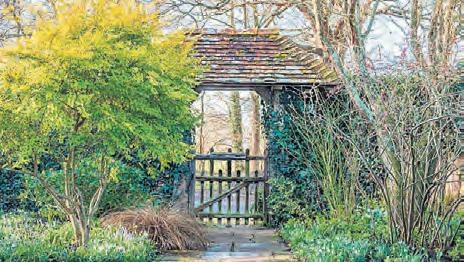

John wanted to do something extra special for the 50th anniversary.
He said: “We have created a bird feeding station and we will be using a large screen to beam it into the catering area.
“What could be better than having a cup of tea listening to the birds? It will be so lovely.
“We aim to make improvements every year, and this year we are making 18 mobility scooters available. Back in 2019, they were used 500 times so I am confident this will be popular.
“We also have an excellent new catering team on site, which will give us a real boost too. “Over the years we have raised £890,291 for local charities. That was always so important to Carolyn and myself.”
The garden is an attraction, one and a half acres adjacent to a six-acre wildflower meadow with mown paths, seating and views of the South Downs.
John said: “After my wife died, Emma Reece and her team have done an amazing job renovating it.
“It is so tranquil, relaxing and very good for one’s mental health. “
Since 1972 the Arlington Bluebell Walk and Farm Trail has developed into seven interesting walks over three working farms involving local charities.
One walk of two thirds of a mile (1100 meters) through Beatons Wood has been made suitable for wheelchair users. This is where you see white anemones followed by the vistas of
bluebells, established over centuries. On this walk there are seats for you to enjoy the peace and tranquillity of this oak and hornbeam wood. Along the walks there are signs illustrating the flora and fauna of the countryside for your information.

At neighbouring Parkwood Farm, milking of the large dairy herd can be seen from a special viewing gallery every afternoon between 3:00pm and 5:00pm. To get there involves a walk of about 1.5 miles, and you will have to walk back!
At Primrose Farm there is a horse livery, also this is where the young cattle are reared. The garden is open every Wednesday from 10am until 4pm, also every day the Bluebell Walk is open.
The Bluebell Walk runs daily from 10am until 5pm to May 10.
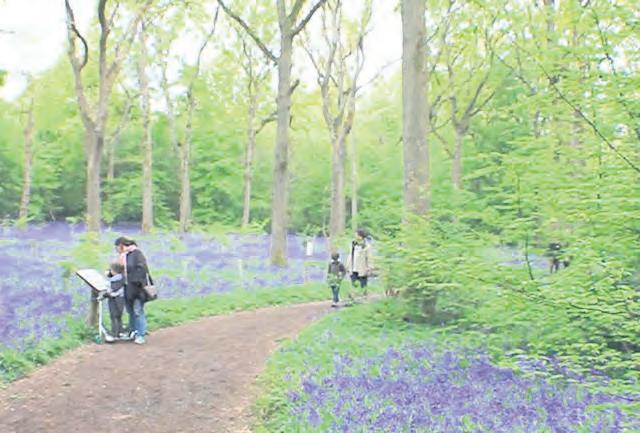
Entrance is £6 per adult, £3 for children aged between 3 and 16, and £16 for a family ticket, two adults and up to four children.
You do not need to book online - you can turn up on the day.
Go to www.bluebellwalk.co.uk or email info:@bluebellwalk.co.uk
Add Bates Green Farm on to your list of must visit gardens
In addition to the Bluebell Walk, Bates Green Farm is also home to one and a half acre garden open to the public every Wednesday until October.
Bates Green Garden is typical of the English style of gardening. It is planted in a relaxed and naturalist way with self-seeders positively encouraged. The garden sits comfortably surrounded by fields and woods, and is always full of birdsong.
For details of visiting this Planstwoman’s paradise, including prices and available refreshments, please visit our sister website at www.batesgreengarden.co.uk
www.countrygardener.co.uk 9
The walk has raised a total of £890,291
Arlington Bluebell Walk now includes seven different walks
Welcome to woodpeckers
Woodland sounds come in many forms; the creaking and rubbing of trees against themselves; the rustle of a roe deer’s hoof in the leaf litter; the tittering and chirruping of small forest birds. But one of the most distinctive sounds must be that of a woodpecker drumming its pointed bill against the trunk of a tree.
It’s an evocative sound with the distinctive ‘chip-chip’ as they strike their beaks against wood. Their relatively small head allows them to hammer at wood aggressively without damaging themselves making nest holes in trees and extracting beetle larvae from under the bark with their long flexible tongues. Spiders, adult beetles and caterpillars are also in the menu but increasingly they are attracted to bird feeders, bird seed and peanuts. One at the feeding station they tend to be very nervy, and it takes hardly anything for them to be spooked.
Great spotted woodpeckers are distinctive and easy to identify with black and white plumage and a red area beneath the tail. Juveniles and males also have a red patch or cap on their heads.
Less obvious amid the chorus of other woodland birds, though still distinctive, are the calls of Britain’s woodpecker species.
Species of woodpecker to spot:
GREEN WOODPECKER Picus viridis
With its red crown and green-yellow body, this species is often mistaken for an escaped parrot. Though it nests in woods, it tends to forage in parkland and meadows where it probes anthills to eat ants and their larvae. Laughing, shrieking call –known as the ‘yaffle’.
GREAT SPOTTED WOODPECKER
Dendrocopos major
Largely black and white with flashes of red on the back of its head and rear, this is the size of a blackbird. Its bursts of drumming in spring are a courtship call. Its emits a high pitched ‘kik’ sound and has distinctive undulating flight. Of the four, it’s most likely to visit garden birdfeeders.
Q&A on woodpeckers
WHAT TIME OF YEAR DO YOU HEAR WOODPECKERS?
Hearing a drumming woodpecker in your local woodland or from your garden is usually one of the first signs spring is on its way. Great and Lesser Spotted Woodpeckers start drumming to stake out their territories in February, with activity peaking in March and early April.
So now you know they’re there. But seeing them is another matter. If you’re lucky enough to spot one, your next challenge is to identify them. Here’s how to tell Britain’s woodpeckers apart.
There are three species of woodpecker in the UK and one species of wryneck (a group of small Old World woodpeckers), which appears as a passage migrant in spring and autumn. Worldwide, there are more than 200 species of woodpecker and just two species of wryneck. Woodpeckers can be heard drumming in early spring. It’s at this time of year that their calls are also most pronounced. Great spotted woodpeckers produce sharp ‘kik’ calls, sometimes in quick succession. Lesser spotted woodpeckers have similar ‘kit’ calls, though a little softer than the great spotted woodpeckers. Green woodpeckers have a loud, ‘laughing’ call.
If you want to encourage these exciting birds, keep feeders topped up and leave dead wood habitats for wood boring insects and areas of long grass for green woodpeckers.
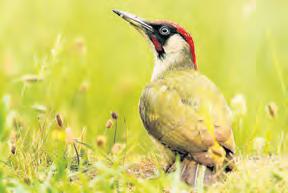
LESSER SPOTTED WOODPECKER
Dendrocopos minor
This tiny sparrow-sized bird is now extremely scarce in the UK, and even harder to see as it lives high among the outer twigs of trees. It lacks the great spotted’s white shoulder patches and drums much faster – 15 blows a second compared to the 8-10 of its larger cousin.
WRYNECK
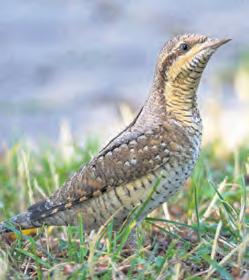

Jynx torquilla
This tiny mottled brown woodpecker is extinct as a breeding bird in Britain but still appears on passage in spring and autumn – especially in gardens. It hunts ants and, unlike other woodpeckers, lives mainly on the ground.
WHAT IS THE MOST COMMON WOODPECKER IN UK?
Great spotted woodpecker. ‘Great spots’ are our most common woodpeckers and the best drummers by a long way. They beat their beaks against hollow branches or tree trunks at a stunning 40 hits per second.
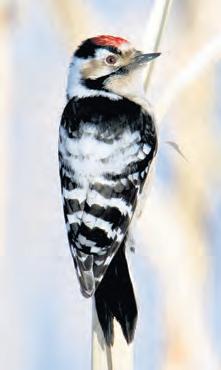
IS IT COMMON TO SEE A WOODPECKER IN YOUR GARDEN?
Great spotted woodpeckers are increasingly common as garden visitors: put out a peanut feeder to tempt one onto your bird table. They are very inquisitive birds.
WHAT ARE THE OMENS ASSOCIATED WITH A WOODPECKER?
Look at the bird’s rapping as an omen revealing the upcoming opportunities on the horizon. Woodpecker encourages you to remain ever-alert, aware, and at the ready to embrace all the good things coming your way.
WHAT DOES IT MEAN WHEN A WOODPECKER IS PECKING?
They peck in order to find food, excavate areas for nesting, or mark their territory. If the birds are looking for insects, the holes will be small and irregular. Woodpeckers are particularly fond of the larvae of carpenter bees, leafcutter bees, and grass bagworms
WHAT IS THE MYTH OF THE WOODPECKER?
Picus, in Roman mythology, was a woodpecker sacred to the god Mars. It was widely worshipped in ancient Italy and developed into a minor god. Picus was an agricultural deity associated particularly with the fertilisation of the soil with manure.
WHAT ATTRACTS WOODPECKERS TO YOUR GARDEN?

They will happily tuck in at feeders containing peanuts, sunflower seeds and fat, and sometimes peck at apples in search of grubs inside. In late spring, adult woodpeckers often bring their offspring to feeders.
DO WOODPECKERS STAY AROUND ALL YEAR?
Red-headed woodpeckers usually leave the northern and western parts of their range for winter, but where they go depends on acorn and beech nut crops. During migration seasons they may wander widely in loose flocks (possibly family groups), moving during daytime in the autumn and nighttime in the spring.
These timid, shy birds are heard before they are seen and their arrival at garden feeders is a true cause to celebrate
Green woodpecker Picus viridis
Wryneck Jynx torquilla
Lesser spotted woodpecker Dendrocopos minor
Country
10
Great spotted woodpecker Dendrocopos major
Gardener
According to research carried out by the British Hedgehog Preservation Society, countryside populations of the iconic hedgehog have declined by an average of 8.3 percent a year over the last 20 years.
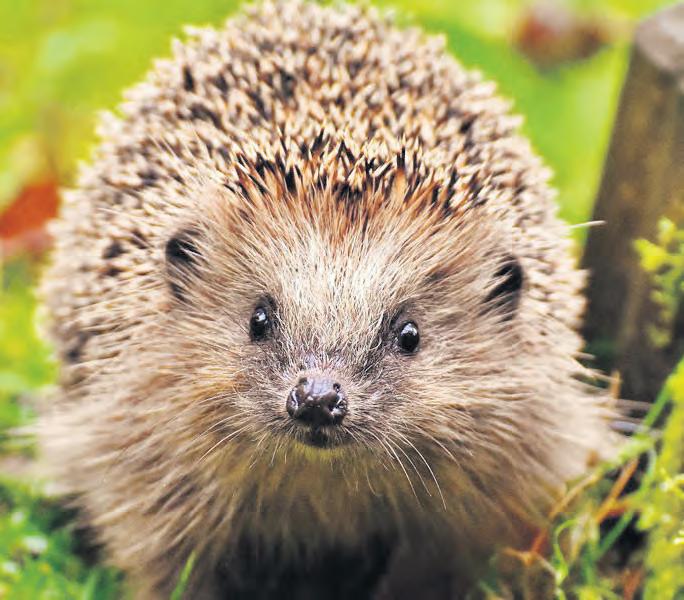
In other words, our prickly pals need all the help they can get.
One major factor is habitat loss. As the UK’s landscape becomes increasingly urbanised, there are fewer natural greenspaces for hedgehogs to call home. Pesticides are another issue — many of the insects and other invertebrates that hedgehogs love to munch on are becoming increasingly scarce thanks to the use of these harmful chemicals.
Then of course there’s the ever-present danger of road traffic. As we all know, hedgehogs are notorious for their tendency to wander out into the path of oncoming cars, and often their routes between habitats take the risk of crossing busy roads.
The hedgehog must be one of our most well-known animals though for most of us our familiarity is due more to its occurrence in children’s literature, on greetings cards and calendars than a personal connection with a living being.

Here is a creature that is willing to live near us in our gardens, yet still struggles to survive.
We all know that hedgehogs are covered in spines but did you know that they have about 6,000 of them? The spines are adapted hairs and, just like human hair, they are shed and replaced at regular intervals. Baby hedgehogs, or pinkies, have soft spines; this makes birth and living in proximity with mother and other young just a little more comfortable.
The spines are for defence against predators, and the strategy of the hedgehog is to curl into a tight ball surrounded by extremely sharp spines and when in this position it makes restricted jumping movements so that assailants having a sniff get a pointed reminder of what they might feel if they go any further!
THE HEDGEHOG’S DIET
The diet of the hedgehog makes this a true gardener’s friend. Hogs eat a whole host of invertebrates, including slugs, which many gardeners look upon as pests. Their presence in a garden helps to maintain a natural equilibrium. They are, after all, part of the natural ecosystem.

If you have hedgehogs which are still active in your garden well into the autumn it might be that they are struggling to find enough food to gain the weight required for hibernation. If this is the case it would be appropriate to put out some supplementary food. Such things as solid cat or dog food but avoid fish flavour since hedgehogs cannot digest fish. Other healthy offerings include peanuts and sultanas but do not provide bread and milk which causes, at least, an upset stomach. A shallow dish of fresh water would also be welcome.
Time to ‘THINK HEDGEHOG’
April 30th marks the beginning of Hedgehog Awareness Week and with the gardening season now well upon us, it’s the ideal time to lend a helping hand to one of Britain’s most well-loved creatures and ‘think hedgehog!’
A DECLINING POPULATION
The fact that the hedgehog population has stabilised to some degree in urban areas implies that gardens are an essential refuge for these animals. It might also suggest that the work done by organisations to promote wildlife gardening is paying off. As gardeners we all need to reflect on what we do and make changes to support hedgehogs and other wildlife, so here I suggest a few steps we can all take to help.
HELPING HEDGEHOGS IN YOUR GARDEN
Hedgehogs aren’t especially picky about where they visit, but you can boost your chances of hosting a hog by following these handy hints:
• Create a hedgehog highway: Hedgehogs can roam up to 1 mile in a single evening — an impressive distance on such little legs! Help them out by creating small gaps or holes in fences, walls or bushes to allow them to move through your garden freely. A hedgehog-sized hole should be at least 13cm x 13cm and should be located low down, near the ground.
• Plant a hedgehog-friendly garden: Hedgehogs love gardens with plenty of cover, such as long grass, shrubs, and hedges. They also love to forage amongst fallen leaves and twigs, so try to leave a few areas of your garden unmown. When it comes to planting, plenty of ornamental grasses and creeping herbs are good options — these will provide shelter and help to attract insects.
• Keep your garden hazard-free: Avoid the use of slug pellets and herbicides. These are toxic to both hedgehogs and their primary food sources — slugs and earthworms. Wood preservers should also be avoided, as hedgehogs tend to lick freshly treated fences (strange, but true…).
• Cover any open drains: Open drains or any large holes in your garden can prove fatal for hedgehogs as they have very poor eyesight and can easily fall into holes or drains and struggle to get out – so cover up any potential hog-traps!
• Modify your pond: If you have a pond in your garden, make sure that it’s got small steps, a shallow slope or a ramp so that hedgehogs can easily climb out if they fall in. Hedgehogs can swim, but they also get tired quickly, and may drown if they can’t escape.
For more information on hedgehogs and how to look after them see: British Hedgehog Preservation Society, People’s Trust for Endangered Species and hedgehogstreet.org
www.countrygardener.co.uk 11
This fast, efficient solution transforms your conservatory into a comfortable year-round living space. Exclusive to Conservatory Insulations, the UK market leader, this Conservaheat layered foil quilt system comprises technology developed by NASA for the Space Shuttle programme
This fast, efficient solution transforms your conservatory into a comfortable year-round living space. Exclusive to Conservatory Insulations, the UK market leader, this Conservaheat layered foil quilt system comprises technology developed by NASA for the Space Shuttle programme
This fast, efficient solution transforms your conservatory into a comfortable year-round living space. Exclusive to Conservatory Insulations, the UK market leader, this Conservaheat layered foil quilt system comprises technology developed by NASA for the Space Shuttle programme




The outer foil of our quilt incorporates a unique True Aluminium Foil, specifically designed for conservatories. The benefit for you is it helps maximise heat retention Suitable for all roof styles, it is a cost-effective solution which insulates your conservatory for a fraction of the cost of a new tiled roof. With this proven energy-saving product you and your family can relax in complete comfort all year round
The outer foil of our quilt incorporates a unique True Aluminium Foil, specifically designed for conservatories. The benefit for you is it helps maximise heat retention Suitable for all roof styles, it is a cost-effective solution which insulates your conservatory for a fraction of the cost of a new tiled roof
With this proven energy-saving product you and your family can relax in complete comfort all year round










The outer foil of our quilt incorporates a unique True Aluminium Foil, specifically designed for conservatories. The benefit for you is it helps maximise heat retention Suitable for all roof styles, it is a cost-effective solution which insulates your conservatory for a fraction of the cost of a new tiled roof. With this proven energy-saving product you and your family can relax in complete comfort all year round







Country Gardener 12 THE UK’S MARKET LEADER INTEREST FREE • Cooler in summer • Warmer in the winter • Prevents UV fading • No VAT to pay • Proven energy saver • Eliminates external noise Enjoy your Conservatory whatever the weather FREEPH ONE 0800 180 400 0 Text ‘Quote’ to 60777 www.conservatory insulations.com
THE UK’S MARKET LEADER AS S EEN O N 0% VAT! CGMAY INTEREST FREE • Cooler in summer • Warmer in the winter • Prevents UV fading • No VAT to pay • Proven energy saver • Eliminates external noise Enjoy your Conservatory whatever the weather FREEPH ONE 0800 180 400 0 Text ‘Quote’ to 60777 www.conservatory insulations.com
THE UK’S MARKET LEADER AS S EEN O N RECOMMENDED BY 0% VAT! Please quote code CGMAY SPECIAL READER OFFER 25OFF % INTEREST FREE • Cooler in summer
Warmer in the winter • Prevents UV fading
No VAT to pay
Proven energy saver
Eliminates external noise Enjoy your Conservatory whatever the weather FREEPH ONE 0800 180 400 0 Text ‘Quote’ to 60777 www.conservatory insulations.com
•
•
•
•
Have your say special...
As part of our recent Readership Survey we asked Country Gardener readers for their stories about gardening myths, old wives’ tales, handed down gardening tricks or just their favourite tips. Here’s a selection of the answers sent in.
A WARNING ABOUT KEEPING ON TOP OF WEEDS
‘One year’s seeds, seven year’s weeds’… I can hear my mother saying this as she headed out to do some weeding in her cottage garden. She was a great believer in really keeping on top of weeds, especially in April and May. I imagine most of us will hate this to be true but unfortunately with some species of weeds it’s true!
Most weed species I guess are prolific producers of seeds (sometimes hundreds of thousands of seeds per plant!) and these seeds can survive and remain dormant for many years in the soil, germinating when conditions are right, reminding us we should have kept on top of our weeds in the first place!
Cath Yelden Dorchester
‘Nothing will grow under a walnut tree’

We had a couple of walnut trees in our Devon garden when I was growing up. My dad always used to say ‘Nothing will grow under a walnut tree’. I think he was probably right: walnuts produce a chemical called juglone which is highly toxic and leaches into the soil around them. This is the tree’s way to inhibit any competition.
At best plants under a walnut tree will struggle and have stunted growth, at worst they will die.
Annie Burnett Exeter
The secrets of growing parsley
When I was a boy, the seeds of parsley were regarded as having the most complex requirements. ‘They must,’ insisted my mother, ‘be sown on Good Friday. That is the only day in the year when the seeds do not go nine times to the devil before they come up.’
In other words, germination would be faster. Good Friday, in most years, would fall in April, when the soil had warmed up sufficiently to encourage more rapid germination, so the advice was hard to refute.
Old Harry, who worked at the local nursery, articulated the alternative belief about parsley seeds: ‘They only grow for households where the woman wears the trousers.’
Michael Davies Martock
Timing is everything
Hammer a nail into a tree
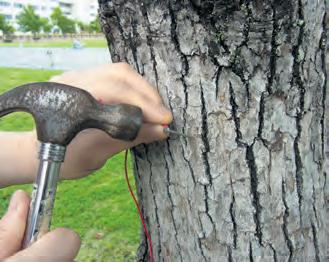
We had an orchard in half of our garden and the fruit trees got a lot of attention. If ever a tree was struggling to flower in April or May my grandad used to hammer a nail into a tree to’ give it a kick start’ as he would say. He thought it was the way to jolt a tree into flowering and fruit set. He always used to say in India, they did this to coconut trees to make them bear fruit. I have no idea if it works.
Nicky Porter Ilminster
I would never dream of describing my late mother as an ‘old wife’, not least because, during the period in which I was at the mercy of her proverbs and prejudices, she was in her thirties. What’s more, I have reason to be grateful for many of them. Growing up in Yorkshire, some 250 miles distant from the ‘soft’ South, my mother would remind me to add at least a month on to the recommended sowing date to be found on the backs of the packets of seeds I would buy on a Saturday morning in Woolworths. ‘Spring comes later up here,’ she would say, and there was no denying that. Nowadays, I doubt that parsnips would germinate in any UK garden in February.
Kate Winter Taunton
MATCHSTICKS WILL GIVE PEPPER PLANTS A BOOST
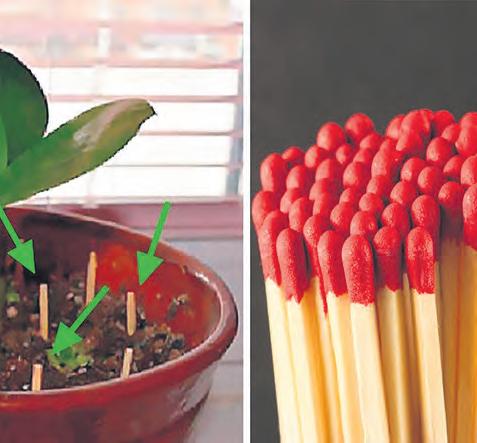
Plant some matchsticks with your peppers. Match sticks contain phosphorous and phosphorous sesquisulfide. These chemicals are important for peppers to grow because they help the plant develop buds and fruit but do not get replaced in the soil. Phosphorous also helps add a little acidity to the soil which pepper plants love. Therefore, adding matchsticks around your pepper plants will grow bigger, healthier plants. Push about ten matchsticks headfirst into the soil, two inches from the base of the plant.
Alan Freeland Bath
PLANT CARROTS AND ONIONS TOGETHER
Carrots grown next to onions and garlic are less likely to fall prey to carrot fly. The strong aroma of the onion family will mask the scent of the carrots and deter attack.
Amy Thurland Minehead
A bit of tomato growing wisdom
PLANTS GROW BETTER IF YOU TALK TO THEM
When we talk or sing to our plants, we release carbon dioxide with our breath. This encourages the plant to convert it to oxygen, which in turn produces more growth. Of course, there is no concrete evidence that this really works but, if you enjoy talking out problems (when nobody is around to talk back) or joyfully singing while working in your garden, how can that be a bad thing? It may really be more therapy for you than your plants, but if it feels good, do it!
Raymond Lewis Chichester
If you can sit on the ground bare-legged, it's time to plant
The power of banana peel
Potassium-rich banana peels are excellent for plants like tomatoes and peppers. Simply bury them in the soil near your plants where they will release nutrients as they break down. Or make banana tea for your crops by adding banana peels to a jar and covering them with water. Let it brew for a week and serve directly on the root-soil.
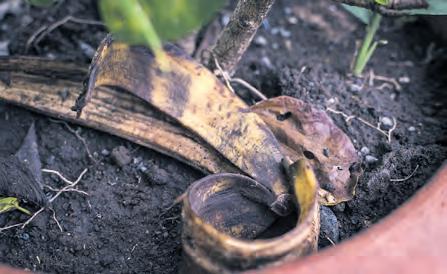 Graham Wren Portsmouth
Graham Wren Portsmouth
I remember a neighbour on our allotment who has passed away now telling me one Saturday morning not to fuss too much with tomato plants. He said his secret was to leave them to dry out a little between waterings which would encourage the roots to grow deeper as they search for water and will create a strong plant overall.
Keith Dratyon Barnstaple
This was a favourite saying of my dad who had an allotment for about 20 years and was a great gardener. He used to tell us: ‘If you can sit on the ground bare-legged, it's time to get planting. I suppose there’s some common sense in what he said. For plants to take root and grow, the soil has to be at a certain temperature before planting. For most vegetables, the soil should be between 55°F and 60°F when measured three inches deep. But before the invention of handy gardening implements such as soil thermometers, how was a gardener to know? According to Devon folklore, farmers used their bare posteriors to test soil warmth. If they could sit comfortably on the ground, it was time to sow seeds and seedlings.
Peter Greene Dawlish
READERS LETTERS
www.countrygardener.co.uk 13
White WONDERLANDS
Why do people choose white as the dominant colour in their garden?
Some of the positive meanings that white can convey include cleanliness, freshness, and simplicity. The colour white often seems like a blank slate, symbolizing a new beginning or a fresh start.
There certainly are plenty of white-flowering plants you can use to create an all-white garden, but it can be a little tricky to create a combination you like.

You never really notice how many shades of white there are until you start grouping the plants together.
Most white flowers are not pure white; many contain subtle undertones of yellow, pink, green, or blue. You will have to experiment with the plants and hold them next to each other to really appreciate the subtle colour differences. As you do, you’ll discover the combinations that work well for you.
A white garden is never just white, but includes myriad tones of greens and grey foliage, and various ‘shades’ of white flowers – from pale yellow, ivory, cream, oyster white, greenish white, bluish white, to the very palest blue.
Troy Scott-Smith is head gardener at the world renowned Sissinghurst Castle Garden designed in the 1930s by novelist and poet Vita Sackville-West.
“At Sissinghurst, the white garden is quite formal in essence, the structural layout a series of paths and small box hedges on a grid pattern and that really holds the garden, all through the year, regardless of the season and whether there are lots of white flowers in bloom,” explains Troy.
White blooms provide the infill for the evergreen borders in the parterre garden of this inspiring garden to visit. In a white garden, he says plant flowers densely for greater impact.
“Vita said ‘cram, cram, cram’ and that is not a bad philosophy in a white garden sense. Two of our most successful beds are because there is no sense of soil,” explains Troy.
“All plants need to be harmonising and not competing, but to create impact be generous. Celebrate one beautiful specimen plant, or a selection that naturally sits cheek by jowl; a ‘fruit salad’ planting effect is not always so pleasing,” Troy adds.
“White stands out and yet goes with anything. Think of white flowers against green foliage: the flowers show themselves clearly yet work in harmony with the leaves, taking on elements of the green which surrounds them.”
There is no single method or design plan to create a white garden and often, the addition of a secondary shade gives the garden another dimension and makes the white more prominent. White does have a cooling effect when paired with other colours, but an all-white garden can become too monotonous if you don’t inject diversity into your garden design.
Avoid monotony by using plants with contrasting textures and forms, both in foliage and flower shape.
For instance, a diverse planting of tall, spiky, white iris with ruffled, white peonies, white trumpet lilies, singleflowered white clematis, and mop-head hydrangea can be stunning. To provide even more interest, you can include plants with strong texture and plants with white variegated, silver, or grey foliage, which has the effect of providing interest and softening the white colours. The same tenets of basic garden design apply to an allwhite garden. Use varying heights, repeat plants and shapes, and include large focal points. It’s easy enough to fill your white garden with tall plants, grasses, ground covers, seasonal blooms, and climbers.
The list of white plants is huge and is getting longer every year; consider some popular classic white or variegated plants as a starting point.
Ever since the 1930s when poet and writer Vita Sackville-West created the allwhite garden at Sissinghurst Castle Garden in Kent, gardeners have been taken with the idea of an all-white design.
Flowering sea kale (Crambe cordifolia)
14
Country Gardener
What to choose when you are looking for whiteness
There’s a huge range of white-flowering plants, including self-seeders such as Nigella damascena ‘Miss Jekyll Alba’ (love-in-a-mist) and Lunaria annua var. albiflora (honesty), bulbs, and groundcover plants such as Viola cornuta Alba Group. Then there are perennials such as Astrantia major ‘Large White’, as well as shrubs, climbers, white-flowering evergreens, including Sarcococca ruscifolia (fragrant sweet box) and hebe, hedging and, of course, trees.
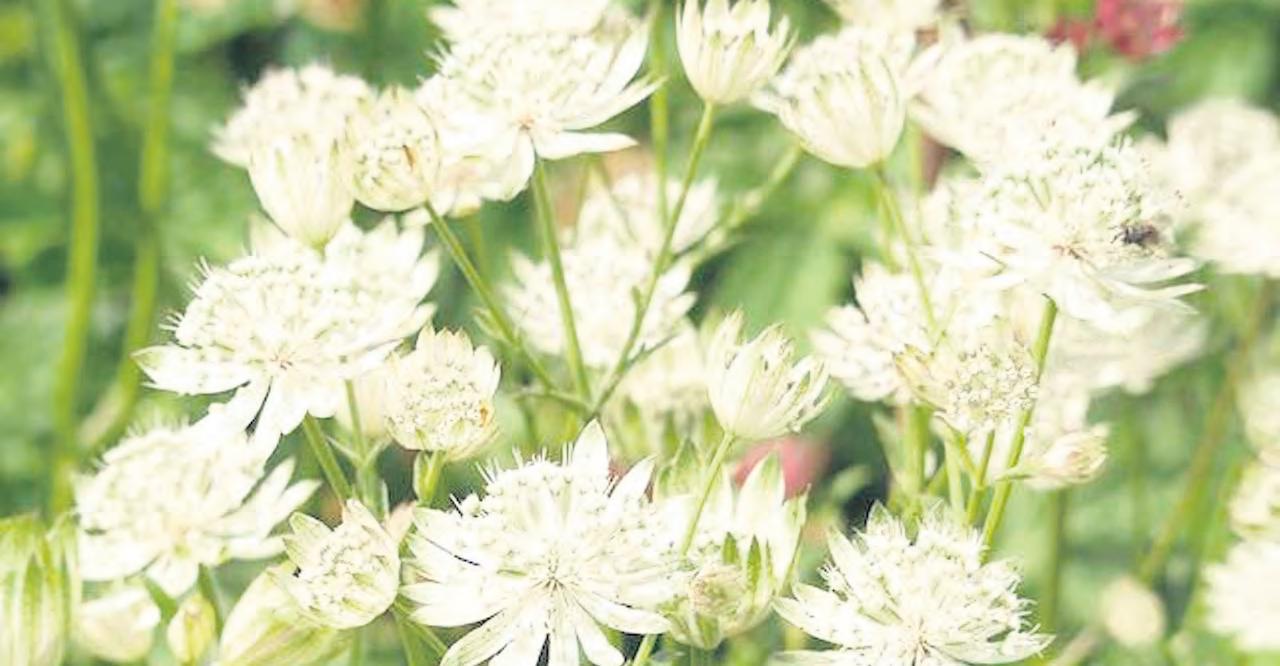
Some white-flowering varieties of plants will make a big impact in the garden, such as the blousy blooms of Paeonia lactiflora ‘Duchesse de Nemours’ (peony).
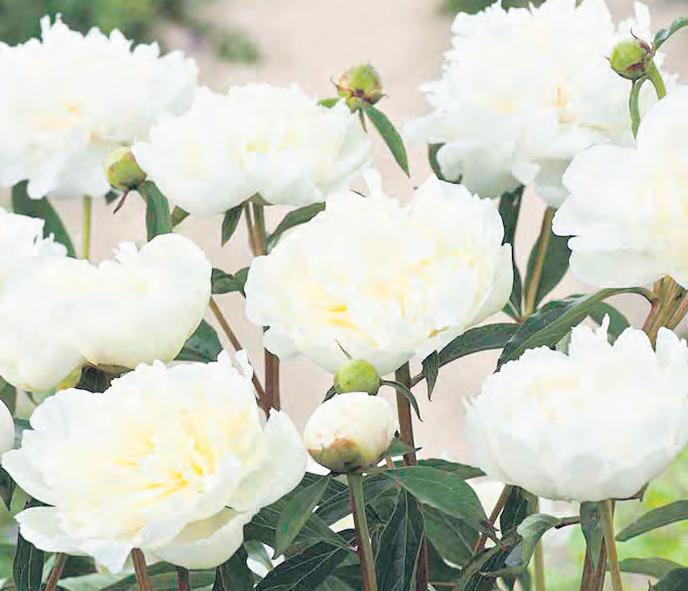
Others are daintier in their displays, such as Gillenia trifoliata, with its masses of tiny, white, star-shaped flowers, and the billowing clouds of white, frothy blooms of the flowering sea kale, Crambe cordifolia
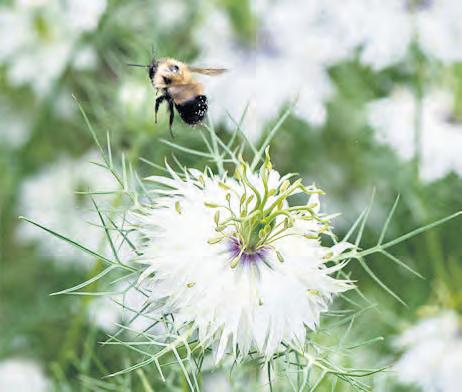
You’ll also find that many white-flowered plants and shrubs will grow well in the shade, including Astilbe chinensis ‘Vision in White’; helleborus, epimedium, and polygonatum.
An even more vigorous climber is Solanum laxum ‘Album’, also known as the potato vine, which produces black autumn berries. Be warned, though – it could take over your tree or wall! Wisteria make a great choice for the white garden. W floribunda f alba provides amazing vertical scent grown over a wall or even as a standard, as it’s less vigorous than most wisteria.
If you need a climber for a shady spot, look for Hydrangea petiolaris. It has aerial roots, so will cling to a wall, heart-shaped, dark green leaves, and masses of white lacy flowers from spring to summer.
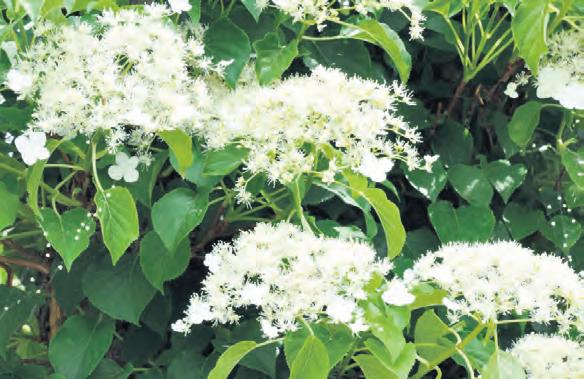
More white climbers
• Clematis armandii
• Clematis montana
• Confederate/Star jasmine (Trachelospermum jasminoides)
• Moonflower (Ipomoea violacea)
Silver foliage plants enhance a white garden
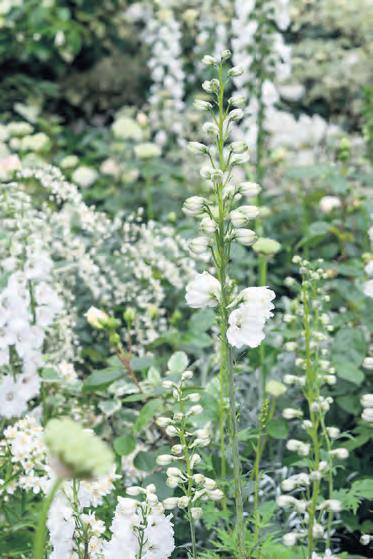
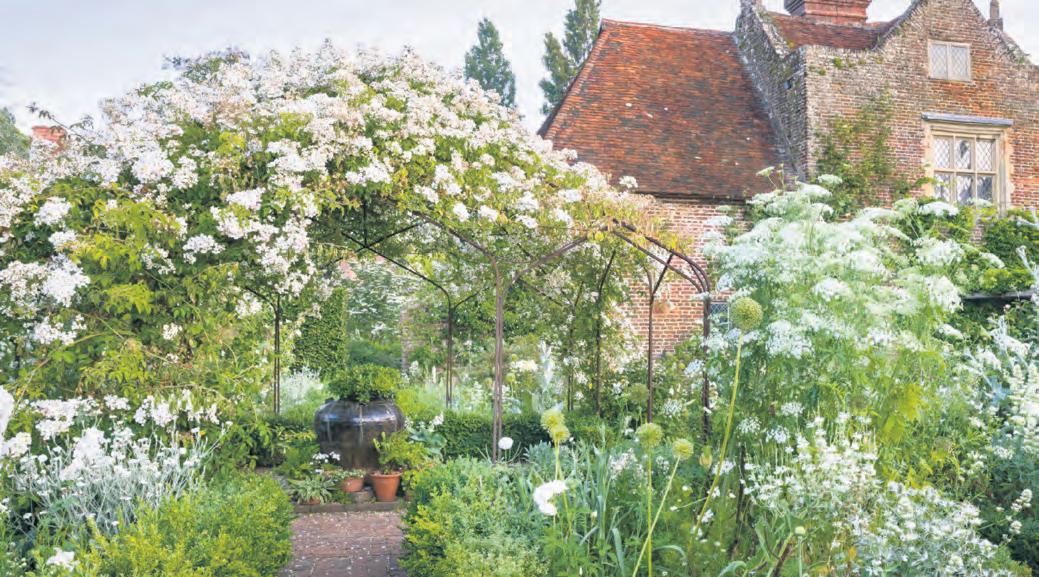
Many silver and grey foliage plants have fuzzy leaves that provide a textural contrast to bright white flowers and create a backdrop that will make the white flowers even more eye-catching.
• Artemisia (Artemisia sp.)
• Dusty miller (Senecio cineraria)
• Lamb’s Ear (Stachys byzantina)
• Lavender Cotton (Santolina chamaecyparissus)

• Japanese Painted Fern (Athyrium niponicum ‘Pictum’)
• Russian Sage (Perovskia atriplicifolia)
The white garden at Sissinghurst Castle Garden, Kent
Hydrangea petiolaris
Paeonia lactiflora ‘Duchesse de Nemours’
Love-in-a-mist ‘Miss Jekyll Alba’
www.countrygardener.co.uk 15
Astrantia
Products which help take the strain


Gardeners need all the help they can get during these hectic weeks of April and May when suddenly everything is green and growing. There’s not enough time to do everything which is needed. So, it’s important to get some help. There are so many products s lined up now to take off the hard physical work in the garden that most of us would be crazy not to seek help. And then there’s the opportunity of when shopping around to treat ourselves to a little luxury item. At Country Gardener we are always on the look out for great products and fresh ideas so here’s a few to help take the strain.
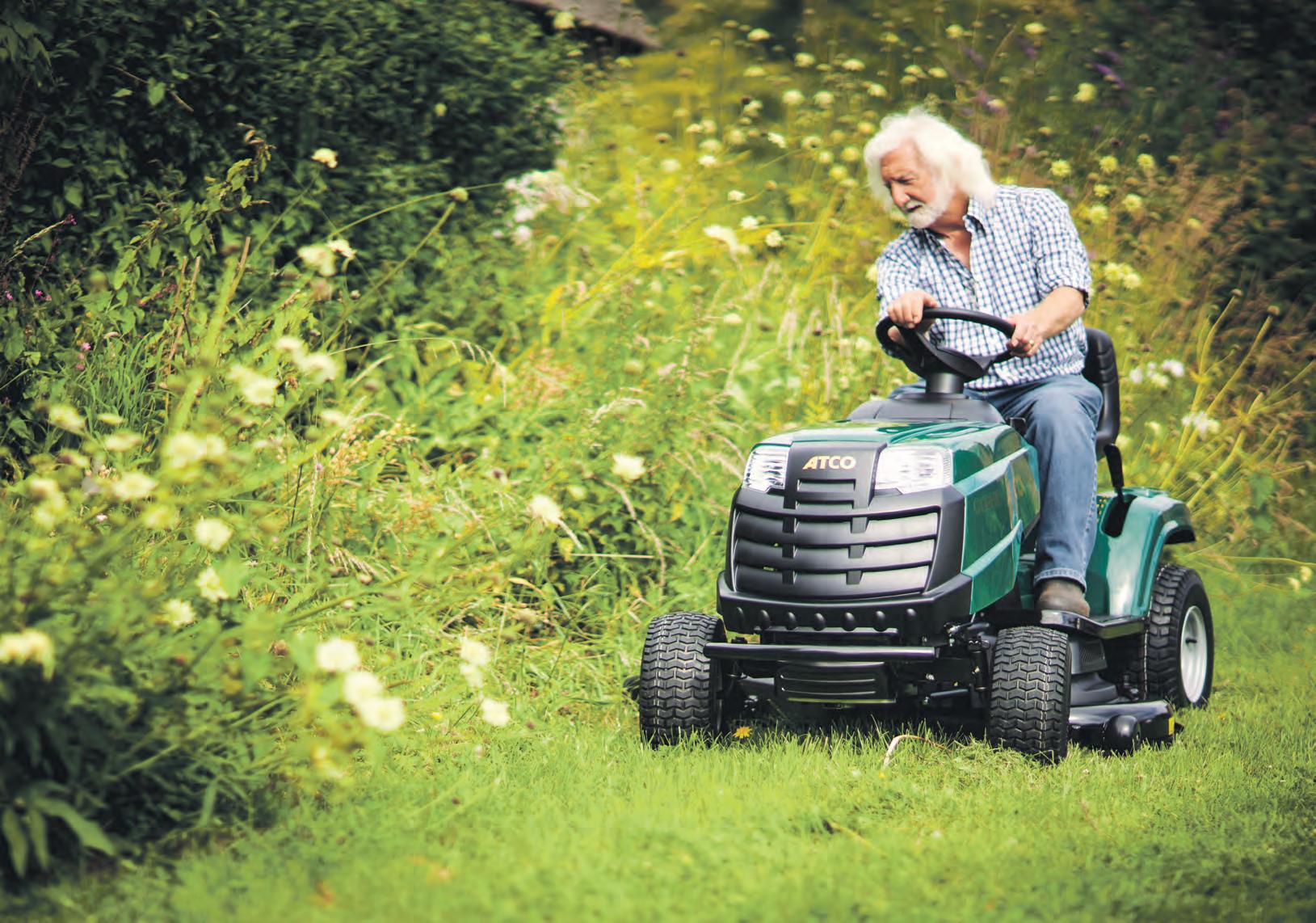
MY LITTLE EVERS PICNIC BLANKET DELIGHTS
My Little Evers is a business run by mum Nicola in the picture-perfect Wiltshire country side. Mixing a range of handmade clothing and exclusive picnic blankets that are great for days in the garden, lounging on the beach or even a spontaneous living room picnic on a rainy day.



All picnic blankets are lined with waterproof backing and come neatly rolled with a PU buckle strap and handle for comfortable carrying.
With five exclusive prints available - Wild horse, Farm, Cow, Under the sea and Mermaid there is a print for everyone.
Nicola has extensive industry background in garment manufacturing and a passion for child friendly prints. Every individual item of clothing is hand cut and sewn by Nicola using UK knitted and printed organic cotton jersey. www.mylittleevers.com
Charming and natural teapot and teacups set from CoirProducts.co.uk
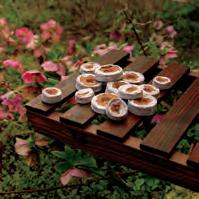

CoirProducts.co.uk (of Salike Limited) offers a range of sustainable horticultural and homeware products that are both eco-conscious and eco-friendly. Their latest additions include the Teapot and Tea Cups set, and the Pestle and Mortar. Each product features a unique and distinctive pattern to reflect the natural beauty of the materials they are made from. The Teapot and Tea Cups set is crafted from coconut shells, and comes with six tea cups and one teapot, making it perfect for hosting. Meanwhile the Pestle and Mortar, made from quality coconut wood, is great for grinding herbs or crushing ice for a refreshing drink. Plus, it’s stylish enough to double as a serving bowl! CoirProducts is committed
New

Our homeware products are the perfect items to use for refreshments when taking a break from gardening. Each item is made from the shell or nut of the coconut. Items Added
Our homeware products are the perfect items to use for refreshments when taking a break from gardening. Each item is made from the shell or nut of the coconut.
Our homeware products are the perfect items to use for refreshments when taking a break from gardening. Each item is made from the shell or nut of the coconut.
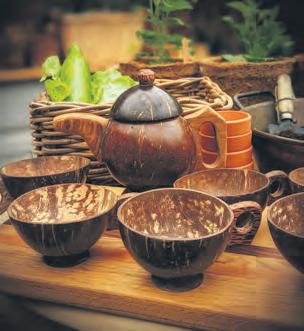
From £35.99
From £35.99




From
From



FEATURED PRODUCTS
FEATURED
From £5.78 From £7.19 From £4.49 Online Shopping: www.coirproducts.co.uk FREE UK DELIVERY! Coir Pots CoirCoins Coco Chip Country Gardener 16
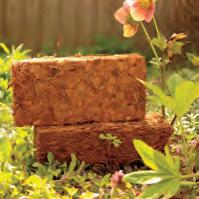

From £5.78 From £7.19 From £4.49 Online Shopping: www.coirproducts.co.uk FREE UK DELIVERY! Coir Pots CoirCoins Coco Chip Vegan CertifiedAll Natural100% Biodegradable Peat-Free Spring/Summer 2023 COIRPRODUCTS

ACCESSORIES FOR YOUR GARDEN
Concrete Post Fixings (Wire Anchors) & Easy Trellising System Quick & Easy Solution to fix wires to concrete posts NO DRILLING - simply clamp the two halves together Three sizes to fit most concrete posts FREE UK DELIVERY Main Stockists of Gripple Trellising Visit our website to view our other gardening accessories and gift ideas www.rivelinglenproducts.co.uk info@rivelinglenproducts.co.uk 01246 462666 Wire Anchor Wire Anchor with Gripple Trellising System AS USED BY FARMERS & GROWERS FOR OVER 80 YEARS WWW.GCPLANTS.CO.UK TEL: 01434 672594 Makes fertile compost without turning in as little as 4 weeks! AVAILABLE FROM... My Little Evers @my_little_evers @mylittleevers 5 Exclusive prints £59.99 plus P&P Limited Edition EXTRA LARGE PICNIC BLANKETS www.mylittleevers.com Vegan CertifiedAll Natural100% Biodegradable Peat-Free Spring/Summer 2023 COIRPRODUCTS
New Items Added
£35.99
PRODUCTS From £5.78 From £7.19 From £4.49 Online Shopping: www.coirproducts.co.uk FREE UK DELIVERY! Coir Pots CoirCoins Coco Chip Vegan CertifiedAll Natural100% Biodegradable Peat-Free Spring/Summer 2023 COIRPRODUCTS
FEATURED
New Items Added
£35.99
PRODUCTS From £5.78 From £7.19 From £4.49 Online Shopping: www.coirproducts.co.uk FREE UK DELIVERY! Coir Pots CoirCoins Coco Chip Vegan CertifiedAll Natural100% Biodegradable Peat-Free Spring/Summer 2023 COIRPRODUCTS
Our homeware products are the perfect items to use for refreshments when taking a break from gardening. Each item is made from the shell or nut of the coconut. Items Added
FEATURED PRODUCTS
New
THE FINEST CUT OF ALL

POWER INTO SPRING
Take the hard work out of mowing large grassy areas with an ATCO petrol ride-on mower.

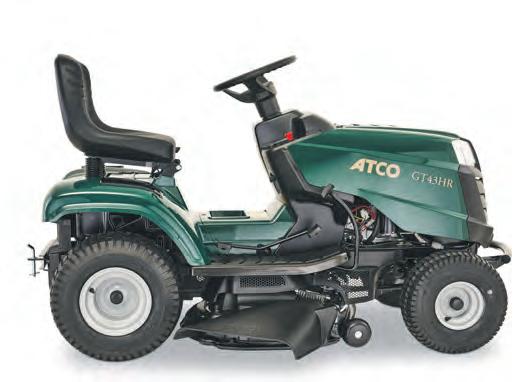
Powered by reliable STIGA engines, built to withstand the rigours of moisture and temperature variations - typical of the British weather, these powerful machines offer outstanding performance and durability for The Finest Cut of All.

Claim £200 cashback on ATCO petrol ride-on mowers. 1st March - 30th June 2023 T&C’s apply.

ATCO.CO.UK
Grass trimmer a master a tidying up the garden
The lightweight, cordless MTR 50 Li grass trimmer makes tidying up the garden effortless thanks to its high-performance cutting device and edging function along with adjustable shaft for ease of use. It was voted the Daily Telegraph ‘Best Buy’ in 2022.

The MTR 50 Li is lightweight and efficient with an ample 200W motor and electronic control panel making this trimmer easy to operate and comfortable to use. It offers a maximum running time of up to 20 minutes on a single charge when used with the suggested 2Ah battery.

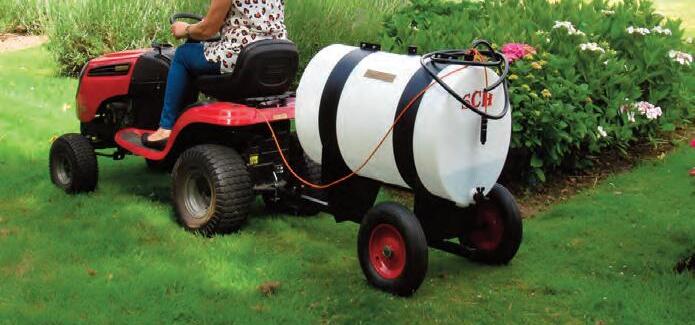
The telescopic shaft allows the user to adjust the shaft to suit along with the adjustable front handle for a comfortable working position. Other features include a high-performance cutting device with ultimate auto feed double nylon head and edging function allowing you to twist the head for trimming edges with precision.
The MTR 50Li is available at www.mountfieldlawnmowers.co.uk
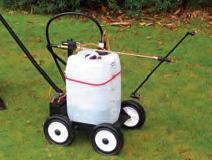
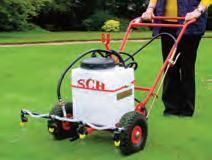
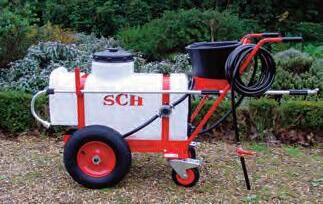

THE WIRE ANCHOR WAY TO CONTROL SHRUBS AND CLIMBERS
The new growing season offers lots of challenges to gardeners - none more than keeping fast growing shrubs and climbers under control and well staked. One great idea is using Rivelin Glen Products which are well designed wire anchors. They are quick and easy to attach to concrete posts (without drilling) to act as an ‘eye’ by threading wire through them to create a trellis system. The Gripple Trellising System is ideal to use with these Wire Anchors as the wire does not stretch, takes up to 100kg load and has a life span of 15 years. You can achieve multiple rows with one length of wire and two tensioners so it’s no more sore hands or sagging wires. Rivelin Glen Products are the main stockists of the Gripple Trellising System. Wire Anchors cost from £10 a pack of three. Gripple starter pack £19.75p Email info@rivelinglenproducts.co.uk or call 01246 462666 www.rivelinglentproducts.com
EVERYONE NEEDS A PAIR OF BACKDOORSHOES!
These glorious garden shoes are certain to put a buzz in your step! A stylish and practical footwear solution, forget the days of wet feet or soggy slippers. They are lightweight, waterproof, durable and versatile. If you’re regularly let down by other outdoor shoes and clogs that just don’t do the job, choose a pair of Backdoorshoes® and you’ll never look back!


“I love my Backdoor shoes. I have had them for many years and they are still going strong. They are so practical to just slip on to hang the washing out, nip to the poly-tunnel, or visit a neighbour down the road. They have been a welcome and useful addition to my back door!” Cath - Country Gardener magazine
There are over 30 fun designs to suit everyone. There’s a special offer for Country Gardener readers. Go to the website and use the code CGMAY23 for 15 per-cent off.
www.backdoorshoes.co.uk or call 01202 232357




Everyone needs

or call us 01202 232357

Garden
OFF








01473 328272 • sales@schsupplies.co.uk • www.schsupplies.co.uk Estate & Garden Waterers Hanging Basket Waterers Indoor Watering Units
Waterers
Contact us today for a FREE brochure featuring over 200 British products, or visit our website to find out more. Small Sprayers Towed Sprayers Push Sprayers SCH manufacture a vast selection of robust garden waterers & sprayers, perfect for areas far from your fixed water source. MADE IN BRITAIN Ref: THBW Ref:IDU Ref: PSP Ref: GBS5 Ref: GWCS9 Ref: GWC(E) Country Gardener Waterer & Sprayer v2_Caravan Industry & Park Operator 22.03.2019 14/10/2022
& Sprayers
ACCESSORIES FOR YOUR GARDEN Over 5,000 5★ reviews!
Put a spring in your step! Backdoorshoes are lightweight, waterproof and easy to slip off/ on, making them ideal for anyone who goes outside. With over 30 different designs to choose from, in UK sizes 3-14. To see our full range visit www.backdoorshoes.co.uk
QUOTE CGMAY23 FOR
15%
Country Gardener 18
Four-wheel trolley is vital for hard working gardeners
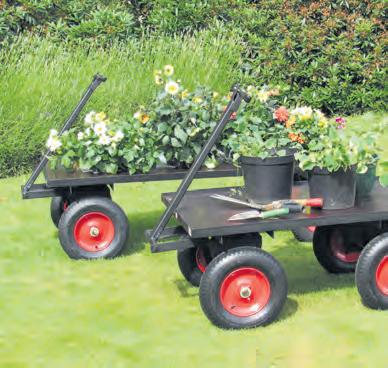
The British built FourWheel Turn Table Trolley) is the go-to trolley for the UK’s gardener. It instantly becomes an essential part of many garden tasks, whether it’s transporting plants, compost, tools, or being used as a handy flat surface. The trolley is ideal when working on your knees, as the trolley’s contents are easily accessible, unlike a wheelbarrow that requires you to strain or stand up to get items in and out.
The four wheels are the size of a wheelbarrow wheel, which allows the trolley to go off-road or on grass without getting stuck. A turntable mechanism allows the front two wheels to turn, preventing the wheels from scuffing the grass when turning. The handle design allows the cart to be pulled by hand or towed by your ride-on mower.
Each summer, garden centres and greenhouse owners request custom-built trolleys with a bed height equal to their work surface. These trolleys eliminate the need to bend down when transporting potted plants and harvesting fruits and vegetables.
Contact SCH for a free brochure featuring over 200 British built products on 01473 328272 email sales@schsupplies.co.uk or visit www.schsupplies.co.uk
NO TURNING HEAPS AND COMPOST IN WEEKS!
‘QR’ (Quick Return) compost activator has been helping gardeners make compost and improve the health of their soils since the early 1930’s. Invented by Maye Bruce, one of the founder members of the Soil Association, ‘QR’ became popular all over the world until the 1970’s.
Made from a blend of dried herbs, ‘QR’ speeds up the decomposition of organic matter. There is no turning required and compost can be made in as little as 4 weeks. It is suitable for use with garden or kitchen waste in all types of compost bins. ‘QR’ is easy to use – simply add water to the powder and apply to the layers of the heap during its construction.
Available from Exedra Nursery, Stroud Tel: 07487 537026 and online at Gardener’s Cottage Plants www.gcplants.co.uk or Tel: 01434 672594
A simple but effective gardening stool to save backs and knees
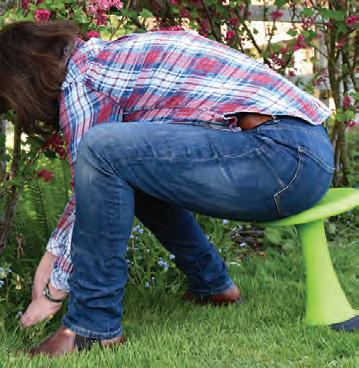
The ergonomic and functional OneLeg stool, with simplistic and clean lines enables you to sit rather than kneel, when completing low-level tasks around the home and garden. Its rounded base provides a natural ability to rock and tilt as you sit, increasing your reach as you tilt forward, improves your core and saves you from developing a painful back and knees when gardening.
Weather proof, impact resistant, lightweight, easy to clean and 100% recyclable, the stool comes in a great choice of colours and two heights, with a free black silicone anti-slip foot. Add a seat cover for extra comfort.
Once you have one you may wonder how you ever lived without a OneLeg.
Tel: 0800 195 4252 Email: oneleginfo@oneleg.co.uk www.oneleg.co.uk
Your chance to win this luxurious and stylish Affinity Swing Seat
It’s about that time of the gardening year when we all start to think more about spending time out of doors and enjoying our gardens more. And this is where a touch of style and class comes in.
Country Gardener as part of our celebrations of publishing the magazine for 25 years is offering readers the chance to win another unique gardening prize.
It combines classic, eye-catching aesthetics with the 25-year guarantee of Accoya® wood and can be an exquisite addition to any garden. The centrepiece for any alfresco occasion, this swing seat will certainly get plenty of use in the garden!

This versatile swing seat will find its natural home in your garden and provide you with years of enjoyment.
Accoya® long-life treated wood is the timber industry benchmark for performance and sustainability. No other timber can offer this combination of stability, durability and versatility. After being lovingly crafted the Affinity Swing Seat receives four coats of paint using exterior Eggshell.

Every commission is one of a kind and bespoke crafted in Devon workshops.
Sitting Spiritually are the only bespoke swing and bench maker endorsed by the Royal Horticultural society.
All you have to do is answer the following question and send your answer on a postcard to Sitting Spiritually Competition, Mount House, Halse, Taunton, Somerset TA4 3AD
WHICH WOOD IS USED TO MAKE THE SITTING SPIRITUALLY SWING SEAT?
Entries close on Thursday, 26th May. The winner will be chosen and informed the first week in June and announced in the July edition of Country Gardener.
The winner of our Gabriel Ash Greenhouse competition in our March issue is Mrs Georgina Beaumont from Ilminster in Somerset. Georgina and her husband Ron are passionate gardeners and they have a half acre plot which includes vegetable beds and an area for growing cut flowers. “We are thrilled to win the lovely greenhouse and it will make such a difference to our garden,” she told us.
COMPETITION
COUNTRY GARDENER 1998-2023 GROWING FOR COUNTRY GARDENER1998-2023
19
Garden advice May
As the season progresses, yet more questions and queries arrive from Country Gardener readers. If you need advice on any gardening problem or concern then write to us at Country Gardener, Mount House, Halse, Taunton TA4 3AD or email editorial@countrygardener.co.uk

Why are clumps of daffodils starting to go blind? This spring seems to be a bigger problem in my garden than it normally is.

Annie Bicknell Stroud


Newly planted daffodils usually grow and flower well, but in subsequent years flowering may fail completely, although the leaves are healthy and numerous. In dry conditions after flowering, you should water thoroughly until the foliage shows signs of dying down naturally. Improve dry soil by mulching around the bulbs in spring with organic matter. Avoid planting bulbs in very dry areas under turf or near trees. Where flowering rapidly declines try feeding the bulbs. After flowering, especially for containergrown bulbs, apply a high potassium liquid feed, such as tomato food at one-to-two-week intervals from when the blooms have faded until the first signs of yellowing of foliage. If overcrowded groups of daffodils are not flowering, lift them when the foliage dies back in the summer. Improve the soil with organic matter and a little general-purpose fertiliser.
My potatoes last year were badly distorted and misshaped. It meant they were virtually impossible to peel and therefore a wasted crop. Any ideas of what might have caused this?
Nic Ford by email
If you have ever grown potatoes, it is very likely that you have harvested some interestingly shaped spuds at some stage.

High temperatures are one problem which cause field stress and inconsistent growing conditions. Generally, the longer the tuber variety, the more susceptible it is. So avoid planting the longer tuber varieties and water sufficiently during the early growth phase. Also, don’t worsen the stress by adding too much nitrogen. To allow proper development of the spuds and avoid potato tubers that are deformed, it is important to have smooth clod free soil with space between each plant. You want to foster long (2-4 inch/5-10 cm.) stolons, the roots attached to the tuber. These stolons absorb all the nutrients and water necessary for growth. When the stolons are constricted, twisted, diseased, or under stress, the plant cannot absorb the necessary nutrients to engender smooth, unblemished potatoes. Short stolons constrict the growth of the tubers and cause them to compete for space, resulting in knobs on potatoes and other malformations.
How do I deal with yellowing needles on my long established conifer trees?
Peter Yellen Petersfield
Although we commonly call them ‘evergreens,’ conifers such as pine, spruce and cypress lighten their load of old needles in late summer and autumn, with a show of yellowing or browning that can look worrying at first. It isn’t and it’s all part of nature recycling itself. Inner needle-drop is a normal part of the life cycle, though the rate varies by species, and it can also accelerate and seem worse if environmental stresses like dry conditions or pest infestation have affected the tree or shrubs in each season.
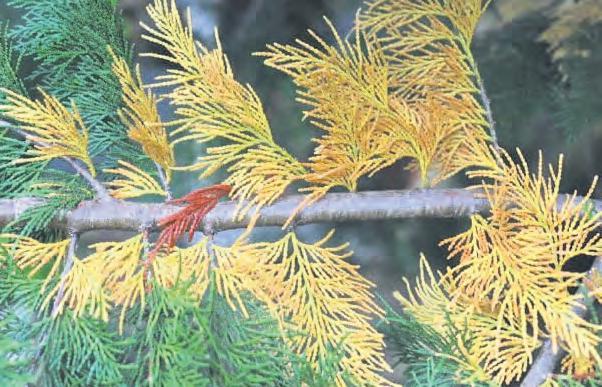
The losses should generally be from the inside out, not at the branch tips. Inner needles are the oldest, and as they age and get shaded by new growth farther out, they photosynthesize less effectively and are eventually shed. The plant lightens its load, and if snow and rain may be coming and extra needles could hold too much weight for the longer branches to bear.
I have decided to take drastic action on my mosscovered lawn by using moss killer. But how long can I wait before reseeding the lawn which is beginning to look in a bad way. The product packaging doesn’t really help and is very confusing.
Kate Browning Martock
Some weedkiller products say you can re-seed after 24 hours and other say you need to wait four weeks, and therefore there is some confusion. It is best to look at the T’s & C’s on the packaging. The best answer is not to rush. You can sow grass at any time from spring through to autumn. Rake the surface of the soil before sowing sprinkling seed both lengthways and widthways across the area.
I have tried on three occasions now to establish a lavender hedge at the front of one of my borders. Each time so many of the plants fail that it just looks a mess.
Don French Minehead
If the lavenders were all the same type you might expect them to grow and behave in the same way but in lots of cases lavenders are grown from seeds and some of those bought from garden centres will not be identical and will come from different sources.

It could be for instance that some are vulnerable to drought or wet soil. If you are planting at the front of a border it could be the soil is more shallow in some areas and this will of course affect how the lavender establishes itself. Lavenders are strong characters and although some may be slow to take off you can lightly trim them and see if they will recover,
Is the sticky substance on apricot leaves and branches a sign of disease?
Gummosis is the oozing of sap from wounds or cankers on fruit trees. Gummosis can result from environmental stress, mechanical injury, or disease and insect infestation. Remove infected limbs and twigs by carefully pruning back to the healthy wood. You should do this during dry weather in the summer if possible, so the wound will heal as quickly as possible. Sterilize your tools with Lysol wipes or 10% bleach between cuts.
YOUR QUESTIONS ANSWERED
Country Gardener 20
My lovely well established holly bush is now covered in black leaves. Can I just cut them off and hope the whole tree recovers?
Andy Stapleton
Cheltenham
Black sooty mould on the tree and specially on older leaves is a sign that the holly was infected with scale insects which produces a sticky honeydew that attracts ants. If ants are busy on the plant it’s probably a sign the scale insects are still there. The best chance you have is to lightly prune now to encourage fresh growth. Feed the plant with liquid fertiliser every week through the summer and boost the roots with controlled release fertiliser.
How do I stop bean rust?
Ian Davies Portsmouth
Bean rust can look quite drastic. Rust spots on bean plants can look like a reddish brown powder. Sometimes these redbrown patches may have a yellow halo around them. Rust fungus can appear on the plant’s leaves, pods, shoots, or stems. A field of beans affected by rust fungus may look like it has been burned or badly scorched. Like many other fungal diseases, rust spots on bean plants are spread by airborne spores. These spores infect the plant tissues then reproduce in hot, humid weather, making more spores. It is these new spores that appear as a reddish brown or rust coloured powder on the plants. Generally, these fungal spores are most abundant in the heat and humidity of summer months. You can space out plants to allow for air flow and prevent infected plant tissues from rubbing against other plants. Watering bean plants with a slow trickle directly at the root also helps of the plant. Splashing water can spread fungal spores. If you suspect that your bean plants have fungal rust, remove and dispose of all infected tissues of the plant.
Why do snapdragon seeds I sow never seem to grow? I am beginning to take it personally.

Mary Graham Taunton
There’s no obvious reason why they should be a problem to get to germinate. Inconsistent soil temperatures can slow the process down, slow growth or if too hot, frying of the seed/seedling which will make it a problem. If the soil temperature is too cool, put seedlings in a warmer area or on a heating mat. If the soil is too hot, put in a cooler spot.
Search for allotment land opens new opportunities
‘Right to Grow’ initiative throughout the south west could see small plots of land freed up for vegetable growing.
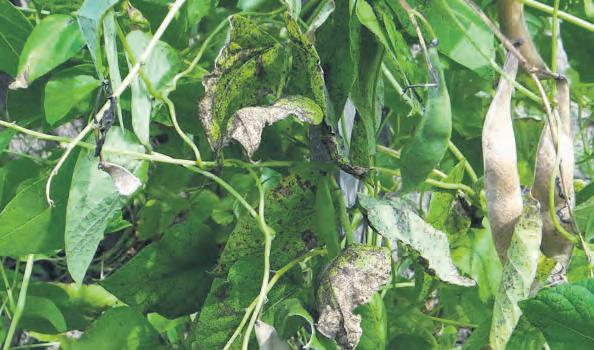
Road verges could be turned into allotments after councils have agreed to consider helping feed people amid the cost of living crisis.
Councils in Devon and Dorset have agreed to consider ‘Right to Grow’ initiatives which will allow community groups to convert small plots of public land into mini-allotments.
It means that areas of land as small as four metres (13ft) squared can be used to grow fruit and vegetables, including many grass verges next to main roads. Contaminated and unsuitable ground will also be used by residents for beekeeping or composting.
Rosemary Preston from Newton Abbot and a promoter of the scheme said: “It’s a perfect grassroots movement. At present, there is a substantial amount of unused land in the country.”
She added: “With the cost-of-living crisis and increasing food prices, this scheme has the potential to fulfil a need. The energy price crisis is also causing lots of people to make the choice between heat and eat.
“I’m not suggesting this initiative will solve all people’s problems, but it will help supplement what food they have available and help communities to budget better.
“It won’t solve the crisis, but it’s a positive move in providing healthy, fresh food to people on an ongoing basis.”
Cllr Dartnall also said that the scheme was about “exploiting little pockets of land” that most authorities will have, but might not think are suitable for purpose.
Growing snapdragons from seed is a relatively easy process: Collect or select your seeds. Sow into a peat-free, compost medium then cover over lightly and water. Prick out and pot up your seedlings once they have true leaves and are large enough to handle.

“All manner of unused land can be used from road verges to small patches next to developments, to ground that was previously used but has fallen into disrepair. Even small plots on schools can be used,” she said.
“It’s always good to use land to the best of our ability and at the moment, we have a perfect storm of lots of things.”
I don’t have a lot of space but I’d like to try and grow asparagus in a number of pots or containers. Is it worth the effort?
Jenny White Plymouth
Asparagus roots are large and plants need a lot of water and fertiliser so they are not an ideal plant for containers. Plants only produce one spear at a time so you will need to get lots of plants to really make it worthwhile. In theory you could harvest one or two shoots on one year old plants but only when they have been well established with spears thicker than say a pencil. If they are very thin, then harvesting will only weaken them more.
The initiative comes about when gardeners fear they are being priced out of running allotments after local councils could raise rents by huge amounts. Local authorities across the country said they had been forced to increase the cost of council-owned plots as they scramble to plug holes in their finances. In most cases allotment holders pay rent to the council, or a society acting on its behalf, for a 12-month contract, which they can renew each year. Plots in some areas in the southwest are like gold dust and hopeful gardeners can spend years on waiting lists with thousands of others.
The cost of living crisis has seen food prices soar by 13 per cent in the year to October according to the Office for National Statistics. Meanwhile, research has shown that three in ten Britons are having to rely on their savings just to afford basic necessities such as shelter, food and fuel.
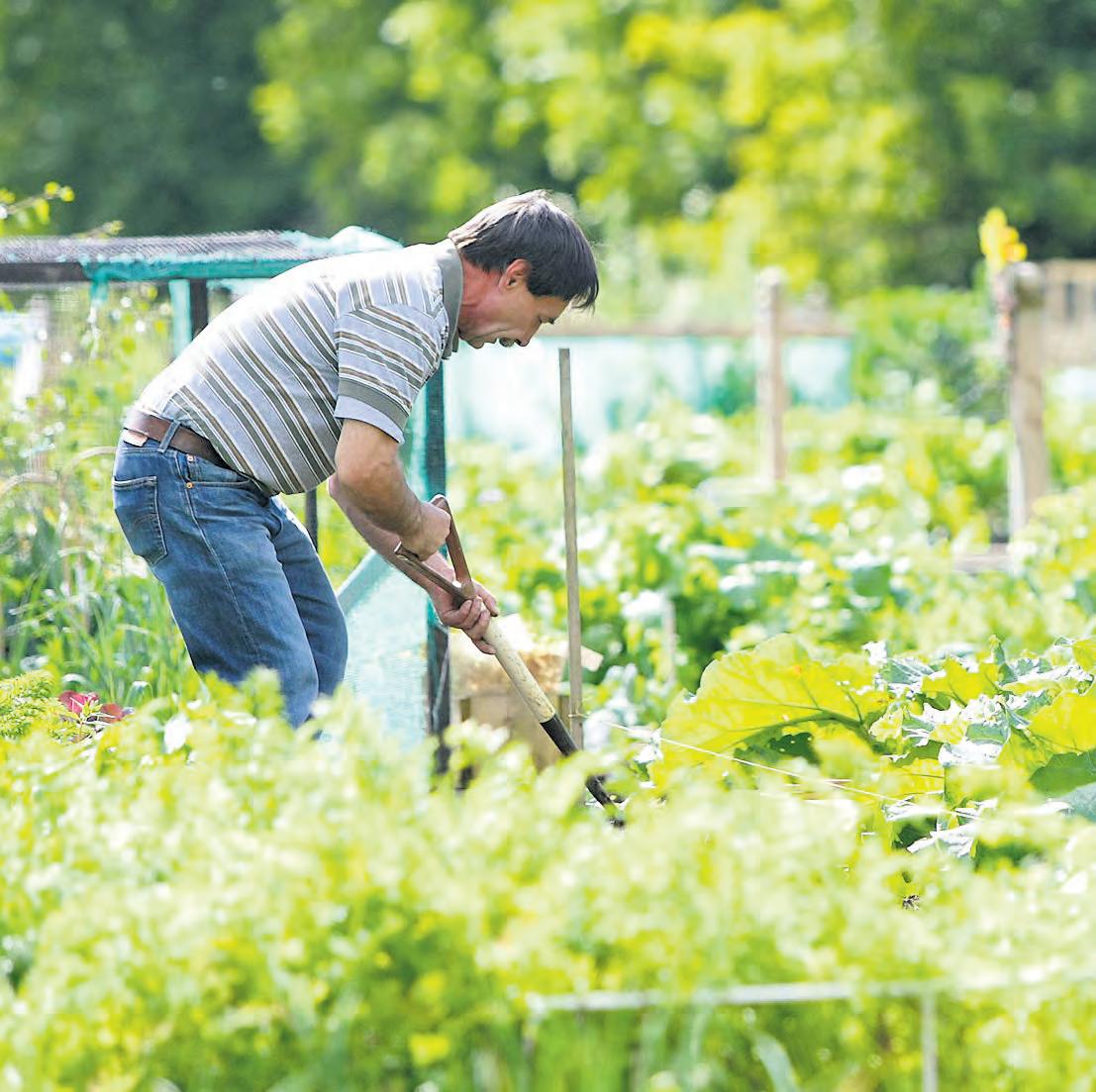
21
WATER - ‘GOLD DUST’ IN OUR GARDENS
How to work harder to save water in our gardens and use it properly
As we start to feel the effects of climate change, droughts are expected to become more common. Hosepipe bans are likely in many areas, to reduce stress on drinking water supplies. So, techniques for saving water in the garden will reduce mains water use whilst still protecting your plants in dry weather.
And that takes into account how we save rainwater and how efficient we are in the day to day way we manage our garden ponds.
On average, the amount of water we use in our gardens is a relatively small proportion of total water consumption. However, it tends to be at the hottest, driest times of year, when water supplies are at their lowest ebb. On a summer evening, a high proportion of the mains water use is going into gardens via hosepipes and sprinklers.
Using drinking-quality mains water on plants and lawns is rather a waste of the effort taken to clean it. This is especially so at those times when that supply is particularly stretched. There are several actions that help reduce the amount of mains water used in your garden:
• Keep water in the soil.
• Use rainwater and waste water and make it a priority to save every drop of water that comes down off from roofs as possible.
• Have plants that are drought resistant. As well as drought, climate change is expected to cause sudden, short periods of high rainfall. The danger of this is that if the soil is parched the rains is more likely to damage than replenish. Soil that contains a high proportion of organic matter will retain moisture better Water usage in the way we design our garden ponds is also more in the spotlight. A recent survey showed that garden ponds were still one of the biggest growth areas in UK gardens but too many of us were making fundamental mistakes about ponds in the wrong position.It is clear that starting a pond in your garden isn’t an easy thing to get right and most of us need expert help and advice.
RAINWATER TERRACE WATER BUTTS SAVE MONEY AND MAKE GROWING FUN
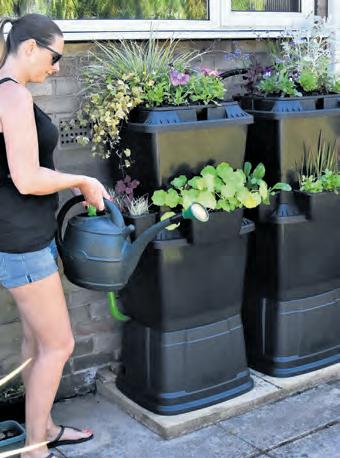
Water butts can save you a lot more money than you think. Not only are you charged for the water you take from your tap but that can almost double when you consider the percentage, they add on for the sewerage charge.
Rainwater Terrace is modular so you can choose how much of a saving you make, and you also have the benefit of the herbs and other goodies you can grow at the same time.
Save time as well as money since the taps on the drain tubes can fill a watering can in 20 seconds, twice as fast as the kitchen tap and an awful lot quicker than the tap on an ordinary water butt.
The water in a Rainwater Terrace is refreshed when it rains, avoiding stagnation, and any excess goes back to the drain or can be directed elsewhere in your garden.
Find out more at www.rainwater-terrace.com or phone 01937 845176

Stanway House and Fountain the real power of water in gardens

The strength and beauty of water in gardens is nowhere more powerful than at Stanway House in the heart of the Cotswolds, an outstanding beautiful Jacobean manor House.
The garden rises in a series of dramatic terraced lawns and a rare, picturesque grasswork to the pyramid, which in the eighteenth century stood at the head of a 623-feet-long cascade descending to a formal canal on the terrace above the house.
The canal, the upper pond behind the pyramid, a short section of the cascade, and the upper fall below the pyramid were restored in 1998, and a 300-feet high single-jet fountain (the tallest garden fountain in the world) added in the middle of the canal. Open Tuesdays and Thursdays in June , July and August from 2pm until 5pm. Dogs are welcome on leads.
Stanway House, Stanway, Gloucestershire GL54 5PQ
WATER FEATURE
Rainwater Terrace collecting water and a home to plants
Country Gardener 22
Stanway’s 300ft single jet fountain
OASE ARE EXPERTS WITH THE RIGHT ADVICE AT THE RIGHT TIME
When adding a pond to your garden you must take time to decide the best location for your pond. Is the pond getting adequate sunlight? Is the pond covered by a tree that will fill it with leaves? Will it be in a spot where you can enjoy it?
Are you hoping to attract local wildlife, or would you like to house fish and want to detract herons? Will you add a simple pre-formed PE pond, or do you want to create your own and use a pond liner?
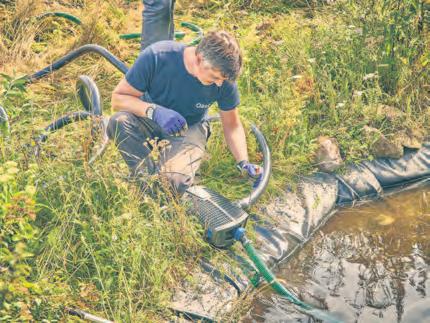
On top of the size and shape of the pond it’s good to consider what else you’ll need. Do you want a stream that feeds the pond, additional fountains? If you want to house fish you’ll need an appropriate sized filter to make sure it’s kept clean.
OASE produces all these products and more that can help you create the pond of your dreams.

Lighting and even app-controlled products are all available to make looking after your pond as easy as possible. Your local aquatic retailer can help and OASE’s technical team are always on hand if required. OASE wants to ensure building your pond is as easy and stress-free as possible. They want everyone to enjoy water, with the aim of creating products that will fit any space, in any garden – anywhere. www.oase.com

Jacobean Manor House, home of the Earl of Wemyss, together with spectacular fountain.

Open Tuesdays
The OASE solution to water in your garden
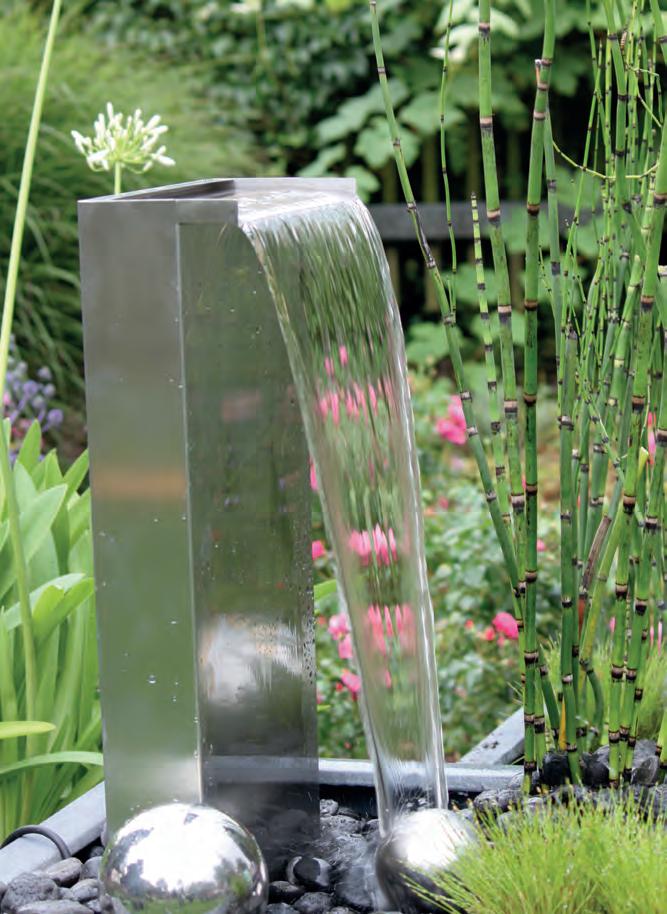
Waterfall Walls
At OASE, we believe in the relaxing simplicity of water. This belief has been a driving force in our design of pond-free water features. We want to enable anybody, anywhere, the chance to have the serenity of water in their garden. We have ensured that you do not have to compromise on space or functionality to do so.
With complete solutions like the Waterfall Wall set, you can invite water into a tired and forgotten space - all with minimal stress and effort. Why not create a new focal point for summer gatherings this year? Do you have an area that is sheltered from sun where plants refuse to grow? Or maybe even a neglected patio? Add a OASE waterfall, spillway or copper bowl today.
Waterfall Walls come in two sizes: 60 and 90. The OASE complete sets are designed to work together, and they contain everything you need to install these features yourself. Pumps, reservoirs and even lights made by us. To put it simplywe know what works.
With our range of water landscaping products, it really is as simple as choosing the one you like. Visit your local retailer to see the simplicity of these designs, and their highquality workmanship first hand. Add an OASE feature to your garden today.
www.oase.com Counry Garden Article.indd 1 06/04/2022 16:11:01
Contact 01386 584469 for details.
Cheltenham, Gloucs, GL54 5BT THE WORLD’S TALLEST GRAVITY FED FOUNTAIN
and Thursdays from 1st June to 31st August, from 2pm - 5pm. Also by appointment for group visits.
www.stanwayfountain.co.uk Stanway,
www.countrygardener.co.uk 23
CARING CORRECTLY FOR YOUR CHICKENS
4. Freedom to behave naturally - this would include a dust bath, material to scratch and peck at, space to flap, run and stretch, all year round.
5. Freedom to live with one’s own kind – with other chickens!
If you decide to ‘keep’ any animal, these five freedoms must be observed and if your decision-making is based upon these, you can’t go far wrong!
The thing that surprises new chicken keepers the most, is just how attached they become to their new feathered friends. Chickens are incredibly engaging and provide endless entertainment. They recognise us, they run to us, they train us to bring them treats and in the process, they steal our hearts. Most people assume that they are acquiring chickens to get eggs, but they gain so much more.
It has always brought me the greatest joy to see how much people care about their birds and this is something that is increasing all the time. Caring chicken keepers have a huge thirst for knowledge, wanting to ensure they are doing their very best for their flock. There is a plethora of information out there but it can become overwhelming. Instead of bombarding new keepers with all the do’s and don’ts, it can be more effective to advise following some set guidelines.
For over 50 years now, the ‘Five Freedoms of Animals’ have formed the backbone of animal welfare. They include the following:
1. Freedom from hunger and thirst – this would include a good quality layers pellet, fresh clean water, access to a mixed hen grit and some green leafy material like grass or vegetable leaves.
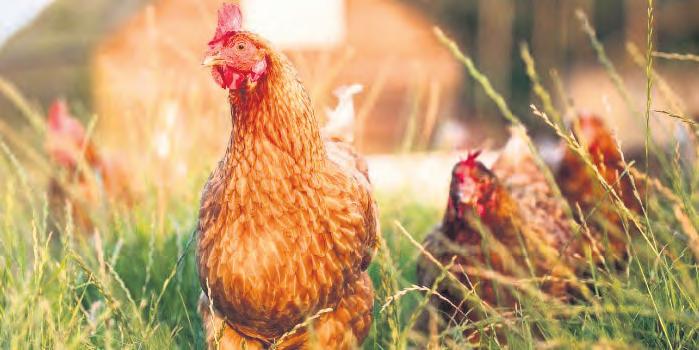
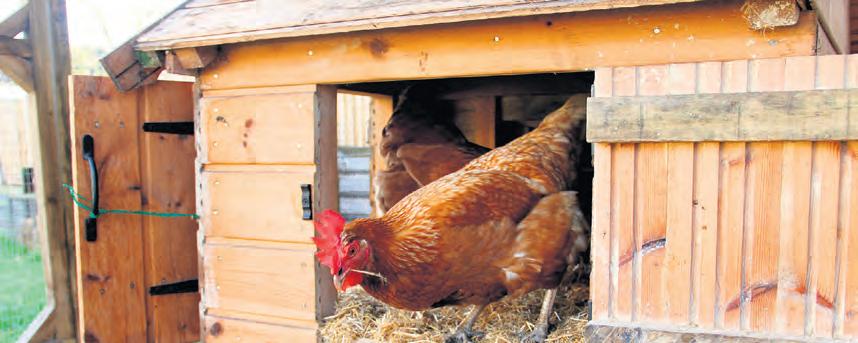
2. Freedom from pain and discomfort – this would include suitable draught-free housing to sleep in at night and lay their eggs, shelter from adverse weather, vaccinating and worming and providing timely professional medical attention if required.
3. Freedom from fear and distress – this would include a predator-proof run, gentle and respectful handling, appropriate flock members (not too many males or larger aggressive birds) and not being chased by other pets or children.
There is no doubt that the most common cause of premature death in chickens is from foxes, badgers and dogs. Thankfully with well-planned fencing and good management, these are entirely preventable. The second most common causes are diseases like Mareks, Coccidiosis, Infectious Bronchitis, Newcastle disease, Infectious Bursal Disease, Egg drop Syndrome and Mycoplasma Gallisepticum. We comprehensively vaccinate all our hens against these, giving them the best protection from avoidable illnesses.

Avian Influenza has had a huge global impact on wide birds and commercial flocks. The housing orders imposed by DEFRA have been frustrating. Here’s a list of things to look out for:
RESPIRATORY INFECTION: Our birds have been vaccinated against most of the causes of respiratory infection, so for us, it’s incredibly rare. The signs are noisy breathing, sneezing, swollen eye(s), mucus from the nose, shaking their heads and general lethargy. If your bird is displaying these symptoms then unfortunately they are highly likely to be suffering from something that only medication will cure.
DIRTY BOTTOMS: One cause of excessively dirty bottoms in hens is worms. You can either test for worms (a faecal egg count) by buying an online testing kit or sending a poo sample to your vets. If your hens are kept on the same small piece of ground, it’s highly likely that your hen has a worm issue especially if you haven’t used ground sanitising powder. Wormers are currently being overused, as some keepers like to routinely worm their hens to avoid a build-up. Please get an egg count done before you use a wormer. I generally recommend Flubenvet as it has excellent efficacy. Vermex is also available and it contains natural ingredients but works best when used preventatively.
PECKING and CUTS: Hens peck each other, it’s what they do. When hens form flocks and establish the ‘pecking order’ they peck each other! When hens have arguments, they peck one another. Don’t humanise it. It’s very natural and normal and it needs to happen. As long as no-one draws blood, you don’t need to intervene. If after 48 hours of a new flock being formed, pecking is still being routinely dished out or one poor soul is really copping it, apply ‘anti-pecking’ spray to her head, neck, back and vent (bottom). It smells weird and tastes absolutely revolting (just don’t ask me how I know). If someone gets pecked and starts bleeding YOU NEED TO INTERVENE! Isolate the victim, apply some purple spray, which cleans the wound and stops the blood looking red. Give her some time alone to rest and give her ad-lib food and water. If she has a friend, let them have some ‘time-out’ together.
SCALY LEG MITE: Hens that have raised scales on their legs are often infested with scaly leg mites. It’s the faeces of the mite that accumulates under the scale and push it up. The mites are often brought in by infected stock or on wild birds and it is very contagious. All our birds are supplied mite free. You can buy scaly leg mite spray which is highly effective but I always suggest people liberally cover their hen’s legs and feet with petroleum jelly (Vaseline or similar) which suffocates the mite and softens the scales. Eventually, the old scales will drop off to reveal new fresh legs underneath.
Libby Sydall is co-founder of ‘Chickens to your Door’ supplying fully vaccinated point of lay hens.

In the third and final part of our series highlighting the boom in keeping chickens Libby Syddall looks at how owners need to build up their day to day knowledge to keep their animals safe and healthy
Country Gardener 24
Five ‘freedoms’ will keep your chickens safe
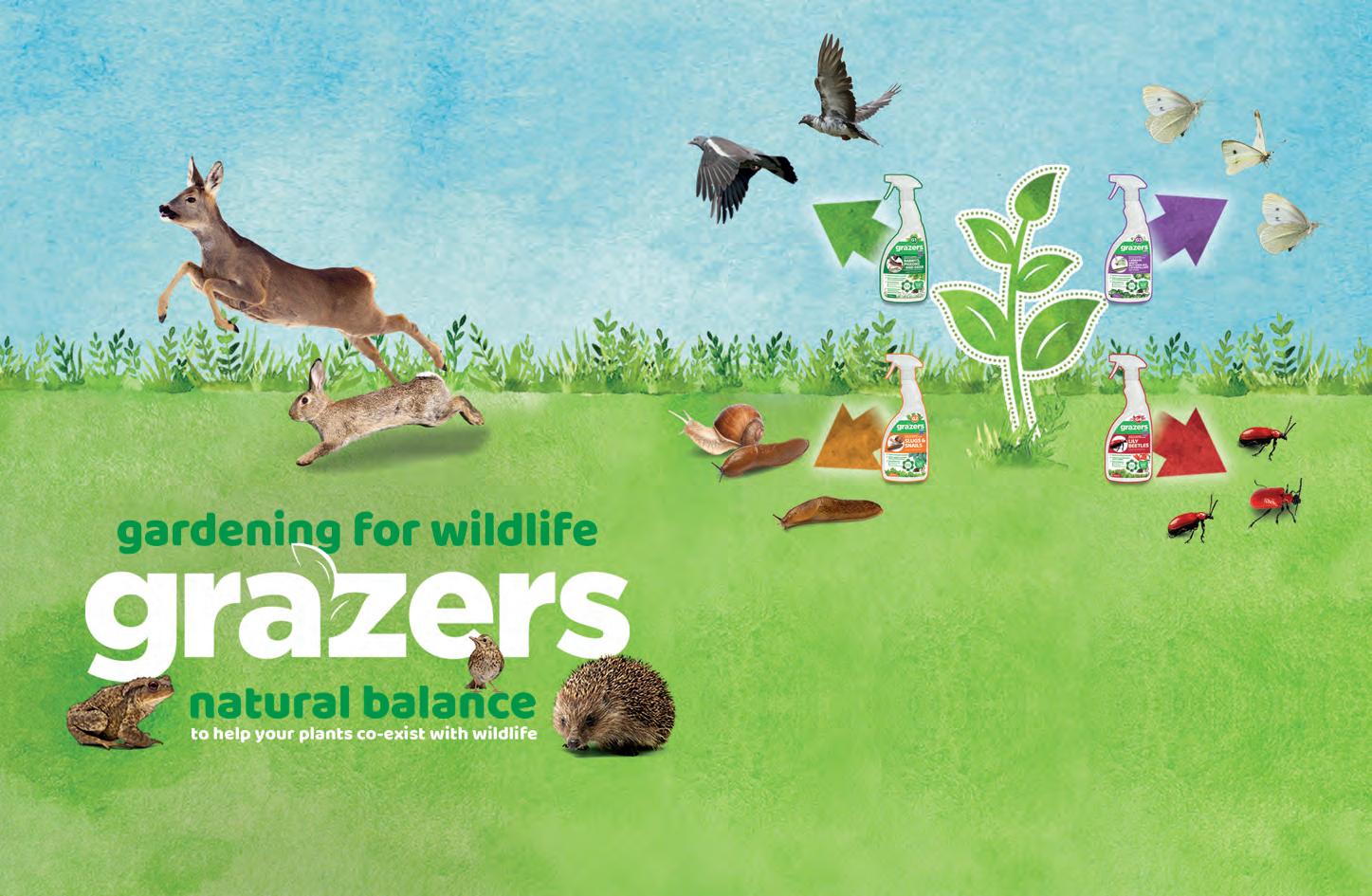
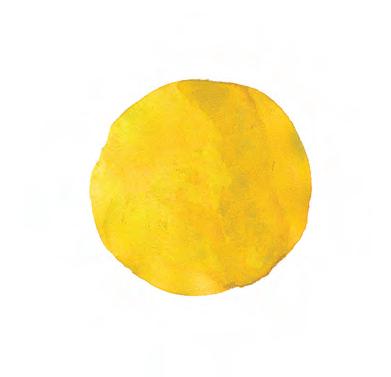







www.countrygardener.co.uk 25
The great British gardening summer is about to get under way
The great British summer is almost with us and with it comes that time of the year for gardeners and garden lovers when there really isn’t enough time in the diary to see and do everything . The month of May certainly sees the season in first gear with gardens at their freshest , enjoying some of the best display conditions of the year. It is also time for the great garden days opening for various well deserved charities from small villages gardens to their grander more baronial versions. And then there’s the great plant and garden fairs which are both so popular and often one the first things to go in any diary of must-see events. Here’s a few dates and venues to make sure you don’t miss out on.
Royal Bath & West returns with fresh ideas and old favourites

The Royal Bath & West Show returns on Thursday, June 1st for a three-day spectacle. Taking place during half term, visitors will see some exciting new as well as plenty of old favourites. Exciting plans are also in place for the horticulture area so gardening will be a key theme.
After it’s successful debut last year, the Great British Kitchen returns with a line-up of chefs providing live cooking demonstrations throughout the three days. The demonstrations are free .
As always, food and drink is at the heart of the show and organisers have listened to the feedback of visitors and are introducing a new Cheese Marquee packed with the best cheese the UK has to offer. The regional Food & Drink Marquee will also be overflowing with tasty treats from the local area.
The popular Pilton Tent, woodland & countryside arena, great British dogs and heavy horses are all making a welcome return, along with a full complement of livestock and equine classes.
Ticket prices have been frozen for the third show in a row, with each advance adult ticket also allow free entry for up to two children.
Adult (includes 2 children aged 5-15 years for free) - £20. www.bathand west.com
MAY IS JOYOUS AT HARTLAND ABBEY
What a wonderful start to May with the Coronation of His Majesty King Charles III and Her Majesty the Queen. Hartland Abbey will be sending their heartfelt congratulations and wish them a long and healthy reign. May is a very special month to visit the gardens with the weather warming up - the rhododendrons and azaleas in full bloom in the woodland; the primulas, tree ferns and gunnera eye catching in the Bog Garden; the Rose Garden bursting into flower; the foxgloves and stunning wildflowers on the walk to the beach and on the cliffs. The Abbey interior never ceases to fascinate with its architecture and decoration by Sir George Gilbert Scott, famous for St Pancras and the Albert Memorial! Dogs are welcome, but not in the house!
Hartland Abbey, Hartland EX39 6DT Tel: 01237441496 www.hartlandabbey.com
WALLED GARDENS OF CANNINGTON MIXES CLASSIC AND MODERN GARDEN DELIGHTS
An RHS partner garden with a Grade I listed medieval priory backdrop. The popular Walled Gardens of Cannington are mix of classic and modern features, including a ‘hot’ border, sub-tropical walk, and blue garden, Mediterranean garden, shade border, Southern hemisphere and a winter garden. It is also home to Somerset’s only botanical glasshouse, featuring hundreds of different species from around the world such as the magnificent jade vine (Strongylodon macrobotrys). There’s also a gift shop, tearoom and plant nursery; plants are propagated on-site and great value. Open Tuesday to Sunday from 10am, year-round excluding two weeks at Christmas. Closing times vary depending on season.
Please check the website: www.btc.ac.uk Email: walledgardens@btc.ac.uk
Tel: 01278 655042 Church Street, Cannington TA5 2HA
The magic of May at Marwood Hill
Rhododendrons light up the garden this month, with many colourful hybrids planted around the place. The specie forms, particularly the big leaved Chinese ones, create a spectacle with their huge trusses of flowers and all under -planted with masses of bluebells.
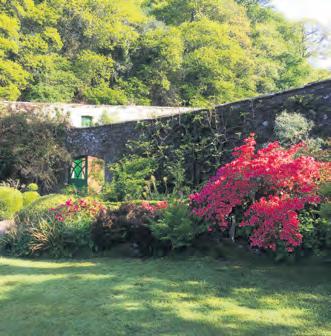
Elsewhere, the spectacular Wisteria arbour gives a wow effect to visitors with ten different varieties in shades of blue, pink, purple and white.
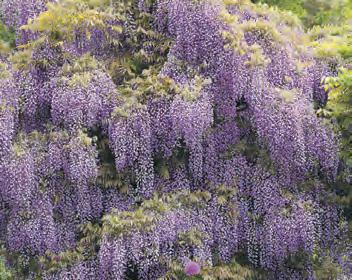
Towards the end of the month, the tree peonies start blooming and around the lakes and streams masses of candelabra primulas in a kaleidoscope of colours transforms the lakeside area in a huge splash of colour.
The plant sales nursery contains many unusual plants, as well as the tried and tested for people to buy too! Marwood Hill Gardens, Nr Guineaford, Barnstaple, EX31 4EA Tel: 01271 342 528 info@marwoodhillgarden.co.uk www.marwoodhillgarden.co.uk
Boscrege, stay at the heart of the natural beauty of Cornwall
Boscrege Caravan and Touring Park in Cornwall is a peaceful and picturesque park, set at the foot of Tregonning Hill, Godolphin National Trust and amongst tranquil Cornish lanes in an area of outstanding natural beauty. The park, open all year is close to the Cornwall coast and a few minutes’ drive to Praa Sands, one of Britain’s nicest beaches. So, if you are looking to take a luxury holiday (doggie friendly with dog friendly homes and on-site designated fields for the dogs too) in Cornwall in a self-catering caravan, lodges touring or even purchasing your own holiday home contact Boscrege Caravan and Touring Park.
Boscrege Caravan Park, Boscrege, Ashton, Cornwall TR13 9TG Tel: 01736 762231 www.caravanparkcornwall.com
Three specialist plant and garden fairs with Plant Heritage
This year there will be three specialist fairs in Dorset, organised by Plant Heritage. The first is a welcome return to Athelhampton House after three years on Sunday, May 14th . This venue is on the large west lawn of a Tudor Mansion House, adjacent to its large Dovecote, formal gardens and the picturesque River Piddle.
The second and third plant fairs will be held at Abbotsbury Subtropical Gardens on Sunday, 25th June and Sunday, 10th September and, as with Athelhampton House, admission is £7 and this includes access to the gardens until 5pm. Plant Heritage members get in free with a valid membership card. In addition to the permanent catering facilities, there will be an Italian Coffee stall amongst the plant stalls. You will find a very wide range of plants from specialist growers across the south and west, including RHS Gold Medal Winners and National Collection Holders.
GREAT PLACES TO VISIT
Hartland Abbey gardens at their most colourful
Marwood’s spectacular wisteria display
26
Country Gardener
DISCOVER MORE AT THE ROYAL BATH & WEST SHOW





Book your tickets now: bathandwest.com/tickets










- 3 JUNE 2023
1
www.countrygardener.co.uk 27
Bishop’s Palace Gardens
SET TO HOST SUMMER FULL OF EVENTS
The hugely popular Somerset gardens at the Bishop’s Palace in Wells are preparing for one of their busiest summers. The 14 acres of tranquil gardens in the heart of medieval Wells will be hosting a series of spring and summer events for the family. The focus of course remains the stunning, gardens in the heart of the city.
You can wander along and around the many herbaceous borders, savour the scent of roses in the parterre, admire the beautiful views of the gardens, moat and further afield from the top of the ramparts.
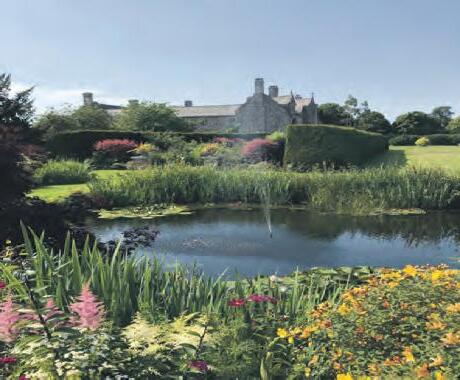
Over the years the gardens have changed as successive bishops have added their legacy and today these gardens have Grade II listed garden status due to their historic nature.
In 2016, the gardens were acknowledged by the Royal Horticultural Society, by being made a “Partner Garden”.
Entry is free most Fridays to RHS members with starred cards. This offer is not valid on certain event days so please check the website for details where you can also find details of all the summer events being held there.
Bishop’s Palace and Gardens, Wells, BA5 2PD www.bishopspalace.org.uk
Tea Room & Walled Garden Nursery
Opening up time again at Cadhay gardens and tearooms
Cadhay gardens and tearooms open again on Friday afternoons from 5th May. It is always exciting to see the gardens coming to life again and the allotment holders have been busy on their plots. For the first time since the lockdown there will be some new faces amongst allotment holders and it will be interesting to see how they approach their allotments.
Over the winter the west range of Cadhay House has been re roofed and the elaborate scaffolding has dominated the surroundings. This is due to come down immediately after Easter and the gardens can once again be a fitting environment for the House with its smart new roof.
The gardens open at 2pm on Fridays and will also be open on the Saturday, Sunday and Monday of the last weekend in May (entrance fees for the NGS).
For more details see cadhay.org.uk
RARE OPPORTUNITY TO SEE WONDERFUL ELKSTONE VILLAGE GARDENS
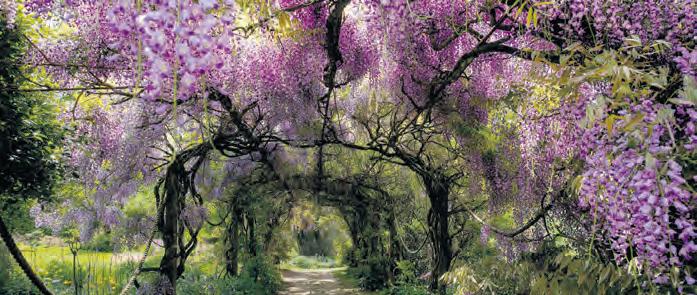
Elkstone is one of the highest villages in the Cotswolds. On Open Gardens Day on Sunday, 11th June from 2pm to 6pm you can visit areas not normally accessible to the public. Organised by villagers this raises funds for the upkeep of the wonderful Norman church and the village hall. Visit open gardens, the coronation meadow, hear the church bells and enjoy homemade afternoon teas, enjoy refreshments, teas and ice creams and there will be a plant stall to browse and more.
Car park free, adults £5, Children under 14 free. Assistant dogs only in gardens, www.elkstonevillage.com
WELL BEHAVED DOGS ON LEADS WELCOME
THREE SPECIALIST PLANT & GARDEN FAIRS

Organised by Plant Heritage Dorset
Sunday 14th May 2023
At Athelhampton House, Nr Puddletown, Dorset, DT2 7LG
Sunday 25th June 2023 & Sunday 10th Sept 2023
Both at Abbotsbury Subtropical Gardens, Dorset, DT3 4LA
Plant Fairs open 10am – 3pm.
Admission £7.00 includes entry to the gardens (until 5pm). Free to all Plant Heritage Members.
Nestled in the heart of North Devon, Marwood Hill Garden is a hidden gem

Home to four National Plant Heritage collections, this private valley garden spans over 20-acres and showcases three stunning lakes, rare trees & shrubs, and colourful surprises throughout each season. Not only a haven for wildlife, the garden is also the perfect environment to explore and be inspired. Enjoy a day of inspirational and relaxation for the whole family.
Catch up over coffee and homemade cake or a cream tea in the picturesque Garden Tea Room or take a bit of Marwood magic home with you from our Walled Garden Nursery and Plant Sales.
Enquiries & Tea Room 01271 342528
Plant Sales & Nursery 01271 342577
e info@marwoodhillgarden.co.uk w marwoodhillgarden.co.uk
Marwood Hill Gardens, Marwood, Barnstaple, Devon EX31 4EA
Many specialist nurseries and growers, including National Collection Holders, large selection of garden stalls plus craft & wildlife stalls. Quality refreshments and food. Free parking. Beautiful locations.
Proceeds support Plant Conservation & Education in Dorset
www.abbotsbury-tourism.co.uk/gardens/events
www.athelhampton.com/events
www.plantheritage.org.uk/local-groups/dorset

GREAT PLACES TO VISIT
Country Gardener 28
Photo credit: Jane Spree
LUKESLAND GARDENS
acres of Rare Shrubs, Trees, Pools & Waterfalls
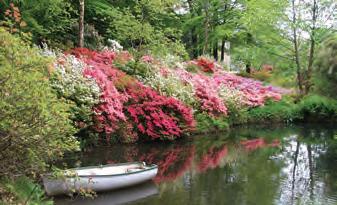
Harford Ivybridge PL21 0JF Tel 01752 691749 www.lukesland.co.uk
Gardens
About 25 Private Gardens Open
& 18th June, 2-6pm
FONTHILL HOUSE Charity Garden Opening


Variety of wonderful stalls, Ice cream van, Refreshments tent serving sandwiches, cakes, tea, soft drinks etc, Wine stall.
Well behaved dogs on leads welcome Unfortunately there is restricted wheelchair access in the gardens
FONTHILL HOUSE Tisbury, Salisbury SP3 5SA For more information visit www.fonthill.co.uk/gardens
to advertise in one of our features?
We

The Bishop's Palace & Gardens, Wells

Explore 14 acres of RHS partner gardens, moat and medieval Palace in the heart of historic Wells, Somerset

Group visits welcome with Tour Packages available (including Senior Gardener's Tours)
ADMISSION: 12 months of return visits on any normal sightseeing day or special Groups rates available
17th
Day
Plan your visit at: www.bishopspalace.org.uk Ticket
ticket to all gardens £8
for 2 days £10 Accompanied children free Open Gardens Teas served from 1pm Well stocked plant stall from 1pm Free Car Park (DT2 7GD) from 1pm Equal proceeds to: The Charles North Charity & The Dorchester Food Bank Keep up to date: www.cerneabbasopengardens.org.uk
47th Cerne Abbas Open
SUNDAY 11TH JUNE in aid of the NFRSA (National Foundation for Retired Service Animals) (12pm – 5pm)
24
Home-made soups & cakes
offer special all counties prices when advertising with our features, plus 100 words of free editorial with an advert. Speak to one of our sales people for more details. www.countrygardener.co.uk 29
12th March - 11th June Sundays, Wednesdays and Bank Holidays 11am – 5pm till 13th June Want
BARTHELEMY & CO – READY TO SHOW OFF JAPANESE MAPLES

Barthelemy & Co near Wimborne in Dorset was established by a French nurseryman almost a century ago and the Skinner family now specialise in propagating and growing acer palmatum – or Japanese maples as they’re known.
Throughout spring, summer and autumn the delicate foliage of the acer presents exquisite shadings of Mother Nature’s gold, pink, purple, green, yellow, orange and red. Acers are a delightful addition to anyone’s garden, giving an aura of peace and tranquillity. The ten-acre nursery at Stapehill has a huge collection of Japanese maples to choose from and expert staff are on hand to help select the right variety and to offer advice. Over 100,000 acers are produced at Barthelemy and Co every year approximately 15,000 - 20,000 of them are grafted named palmatum varieties, as one of the largest specialist growers of their kind.
Barthelemy & Co, 262 Wimborne Road West, Wimborne, Dorset, BH21 2DZ Tel: 01202 874283 www.barthelemymaples.co.uk
Fonthill House gardens has June opening in aid of retired service animals
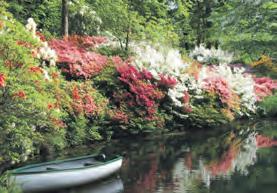
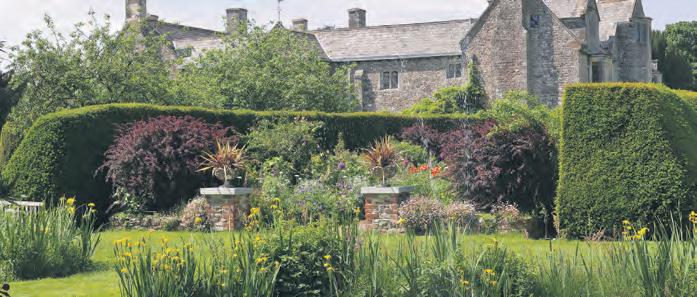

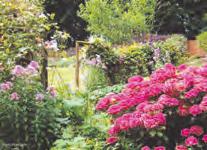
Lord Margadale, who lives at Fonthill House, Tisbury, Salisbury SP3 5RZ is opening his garden on Sunday 11th June in aid of the NFRSA (National Foundation for Retired Service Animals) who raise money for retired service animals to be able to stay with the handler they’ve known all their lives without financial pressure forcing a heart breaking break up.
Entrance is £10 per person if booked in advance via Eventbrite (https://fonthill.co.uk/ gardens/), £12 on the gate and children can go free. Well behaved dogs are welcome on leads. Unfortunately, there is restricted wheelchair access. The open hours are 12pm –5pm. There will be delicious refreshments for sale throughout the day, a wine bar and some wonderful stalls selling a range of different items.
If you are planning to book your tickets in advance, then please have these ready for inspection when you arrive at the gate, either as a screenshot or a printed version.
BOSCREGE CARAVAN & TOURING PARK

THE MOST PICTURESQUE CARAVAN PARK IN CORNWALL
With a welcoming atmosphere and set in 12 acres of Cornish countryside only two miles from the beautiful sandy beaches of Praa Sands, Boscrege Caravan & Touring Park is the best place to enjoy your Cornish holiday.
Each of our luxury holiday homes comes with a private garden and Wi-Fi. Perfect
LUKESLAND OFFERS SOMETHING FOR EVERYONE DURING MAY
Lukesland Gardens, just 10 minutes off the A38 in a hidden valley a mile north of Ivybridge, offer delights for all ages in May. Early on, brilliant banks of azaleas and rhododendrons are luminous against the new green of the beech trees and fill the air with exotic perfumes. Wild blue bells and campions abound by a pretty Dartmoor stream, criss-crossed by many picturesque bridges. Later in the month Lukesland’s well-loved handkerchief trees are spectacular, with their white bracts fluttering in the breeze. For children there is a Moss Mission trail (with prizes!) and everyone will enjoy home-made soup and cakes in the Victorian tea-room. Dogs are welcome on a lead. Open Sundays, Wednesdays and Bank Holidays from 11am to 5pm until 11th June. For details visit www.lukesland.co.uk or www.facebook.com/lukeslandgardens or call 01752 691749
Forde Abbey offers gardening inspiration

Forde Abbey’s spectacular gardens offer the chance to explore the beginnings of bursting herbaceous borders with meandering paths through the formal lawns to the ponds and lakes. Look out for a superb collection of camellias, flowering cherries, rhododendrons, and magnolias complemented with spring bulbs and naturalised wild tulips. The Victorian kitchen garden will be packed full of inspirational fruit and veg for the year ahead.
Forde Abbey near Chard is a spectacular awardwinning garden. A 900-year-old Abbey set within 30 acres. A gift shop, pottery, specialist plant nursery and coffee shop make it a full day out. The gardens are now open through to 31st October 10.30am to 5pm (last admission 4pm). The house is open from 1 April to 31 October, 12pm onwards (last admission 3.30pm)
Tuesday to Friday, Sunday, and Bank Holiday Monday.
JAPANESE MAPLES Acer palmatum
varieties

We produce and grow the largest selection available in the UK. Plants are pot grown and suitable for garden, patio or bonsai.
Visitors welcome Mon-Sat 9am-1pm & 2pm-4.30pm
for families and couples, we are open all year, and offer seasonal pitches.
We offer the following:

• Designated dog walking fields
• Pet friendly accommodation
• Comprehensive storage
• Luxury holiday homes for sale 01736 762231 • enquiries@caravanparkcornwall.com www.caravanparkcornwall.com
Elkstone OPEN
Sunday 11th June 2023 2 - 6pm
Visit beautiful private gardens, see our very special Norman church, hear the church bells, and enjoy homemade afternoon teas, refreshments, and ice creams will also be available, there will be a plant stall to browse and more.

CarPark free,Adults £5, Children under14 free Nodogsallowedingardens
www.elkstonevillage.com
Barthelemy & Co (DCG), 262 Wimborne Rd West, Stapehill, Wimborne, Dorset BH21 2DZ Tel: 01202 874283
enquiries@barthelemymaples.co.uk
www.barthelemymaples.co.uk
Also last weekend in May & August Bank

Holiday weekend - Sat, Sun & Mon
GARDENS: adult £5, child £1
CARAVAN & TOURING PARK
PROCEEDS HELP SUPPORT OUR CHURCH AND VILLAGE HALL
GARDENS DAY CADHAY, OTTERY ST. MARY, DEVON, EX11 1QT 01404 813511 www.cadhay.org.uk Member of Historic Houses
& TEAROOM
5th May
29th September
GARDENS
Open every Friday 2pm - 5.30pm from
to
GREAT PLACES TO VISIT
30
Country Gardener
Three great plant fairs to enjoy in May
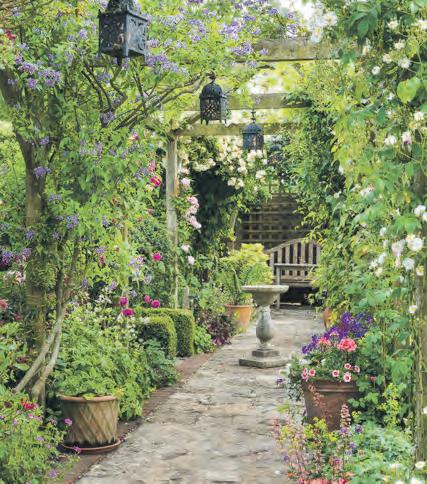
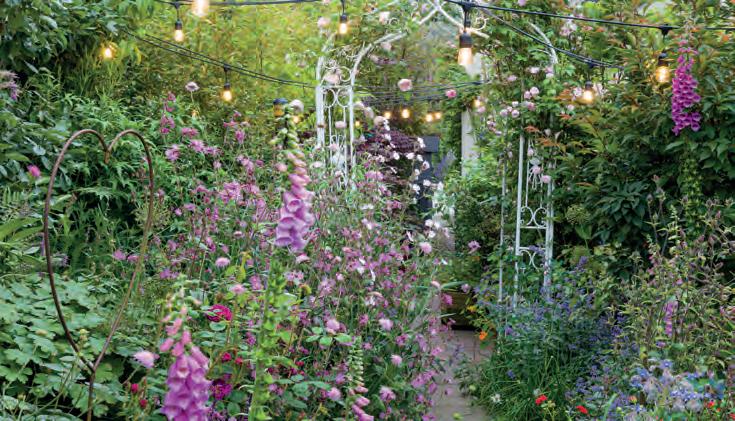
Following on from a very busy start to the season, the programme of specialist plant fairs continues in May with three great events. The first is a new event in the gardens of Salthrop House, the home of designer Sophie Conran, at Wroughton, near Swindon, on Sunday, May 14th. This is followed by a second event set in the grounds of the American Museum and Gardens, in Bath, on Sunday, May 21st, followed by the largest Fair at Kingston Bagpuize House, near Abingdon, on Sunday, May 28th, in support of local charities SeeSaw and Riding for the Disabled.

There will be a great selection of specialist nurseries attending all the fairs, including a number of National Collection holders, all of whom are experts in the plants that they grow. There will be a wide range of interesting and unusual plants for sale, including choice perennials; plants for shade; rare climbers; alpines; herbs and edibles; and a great selection of unusual shrubs, all accompanied by the expert advice that you need to select and grow the right plants for your garden. There are 15 fairs in 2023. Visit www.rareplantfair.co.uk for full details, including lists of the exhibitors.
Stansted Park show one of the garden highlights of the summer
One of the highlights of the summer in the south of England is the three-day Garden Show at Stansted Park from Friday ,9th June until Sunday 11th June
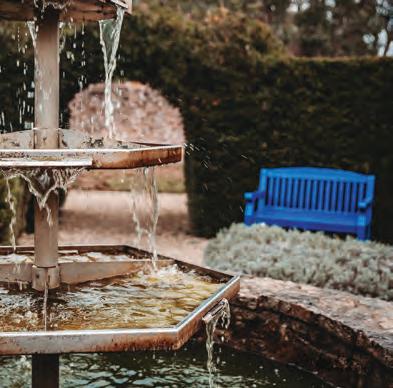

This is the biggest of three garden shows held during spring, summer and autumn. The event at Stansted Park has been a highlight for over 29 years. Set over three days, it features specialist growers, garden related goods, artisan designs, homeware products, fashion accessories & delicious country foods. There are talks, demonstrations, activities for young & old, expert advice and a variety of music and entertainment. Adult tickets are £12 with concessions for 60 plus visitors and students with NUS card £10
Rowlands Castle, Hampshire PO9 6DX
The Garden Show at Broadlands this autumn.is being held from Friday, 29th September to Sunday, 1st October and is an opportunity to explore all that autumn planting has to offer, the show will feature specialist growers, garden related goods, artisan designs, homeware products, fashion accessories and country foods.
Romsey, Hampshire SO51 8GG

www.thegardenshows.com/broadlands/home/
MID JUNE DATE FOR TRADITIONAL CERNE ABBAS GARDENS OPEN
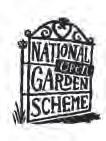

Cerne Abbas lies at the heart of the Dorset Area of Outstanding Natural Beauty. Since 1974 it has been opening its private gardens to raise money for charities and this year is helping a village charity for folk experiencing hardship and the Dorchester Food Bank.

As always the event takes place when roses should be at their best, this year 17th and 18th June. About 25 gardens will be open from 2-6pm, all within easy walking distance of the free car park, open 1 to 8pm. A few gardens can accommodate wheel chairs and most gardens welcome well behaved dogs on leads, these will be identified on the maps provided with the tickets which allow entry to all the gardens.

Tickets cost £8 for adults and accompanied under 16’s are free. Teas will be available in the vicarage or St Mary’s Church and the renowned plant stall will be in the village square.

More details at www.cerneabbasopengardens.org.uk.
Come and visit our RHS partner garden. Enjoy light bites and refreshments from the Tea Room, buy plants from our Nursery, or simply explore the beautiful gardens – there is plenty to see and do!
Scan the QR code for more information.
walledgardens@btc.ac.uk
CORONATION MONTH AT Hartland Abbey & Gardens
May is a wonderful time to visit this stunning house with its fascinating collections, exhibitions, beautiful walled and woodland gardens, walks to the beach and a profusion of wildflowers.
* Dogs very welcome * Holiday Cottages * * Delicious light lunches & cream teas *
Please
May Fairs

Gardens etc and Café
5th
Sunday
Thursday 11am - 5pm (House 2pm - 5pm last adm. 4pm)
and
www.hartlandabbey.com Hartland, Nr. Bideford EX39 6DT
House,
until
October
to
For more information
special events see
01237441496/234
are good for youvisit an open garden
Gardens
© Joe Wainwright
May Salthrop House, Wroughton, Nr. Swindon SN4 9QP 21st May American Museum and Gardens, Bath BA2 7BD 28th May Kingston Bagpuize House, Abingdon, OX13 5AX
14th
www.rareplantfair.co.uk
visit our website for full details of admission fees and times of opening.
American Museum and Gardens
www.countrygardener.co.uk 31
Photo credit: Peter Hall
Making the most of peat-free growing
Many gardeners say they are disappointed with peat free compost, that it behaves inconsistently, needs more watering and often needs boosting with home grown compost but while certain brands do behave differently it is worth persevering.
We are promised that compost containing peat will be phased out of the retail market next year.
So, we will all have to get used to peat-free growing.
Twelve months ago, it was still quite a challenge to source peat-free products but now it can be found easily. It even dominates the piles of bags outside of supermarkets and garden centres. So, it’s great news that as extracting peat makes a significant contribution to CO 2 emissions and wrecks wildlife habitats that we’ll be leaving peat in the ground where it belongs.
Does peat-free behave differently?
One reason that peat has been so popular with gardeners is that it behaves quite consistently. Peat-free composts, by contrast are made up of a mixture of natural materials, predominantly composted wood fibre, bark, green waste compost or coir which means there is often some variability between brands.
Purchasing peat-free compost
Some brands certainly perform better than others so try a few out and see how you get on with them. Peat-free compost is also more sensitive to storage conditions than peat compost and left out in the rain can cause changes to its nutrient composition.
Make sure you are not buying last years’ stock and look out for faded bags. Just buy what you need for one season. Manufacturers have responded by producing an ever-increasing range of peat-free composts to grow plants in. The quality has


greatly improved, so they are worth using, even if you’ve had a go with peat-free in the past and found some products weren’t great.
Peat-free can be a little more expensive. Cheap peat-free will also certainly disappoint. In most cases, they’re now good alternatives without using up the precious peat resources we have left.
Raising healthy seedings
Ideally, we should be using peat-free seed sowing compost for seeds and seedlings. This has finer texture to allow moisture to get through and a lower nutrient content which is necessary for the germination of many seeds.
Gardeners have found growing in peat-free compost results in pale seedlings which remain at a few inches and don’t progress. This problem is nutrient related and there can be a few reasons why the nutrients are not getting to the plant. Sometimes nutrients become locked up and not available to the plant especially if the plants are growing in cooler conditions.
Mixing in home-made compost with peat-free
You can also mix your own peat-free compost using home-made garden compost, leafmould and inorganic materials (loam and sand), but results tend to be variable. It’s difficult to standardise the pH, moisture retention and available nutrients, and to ensure that the final mix is weed-free. However, as the materials are all made on site, this compost has a low carbon footprint. Home-made potting composts are best avoided for seed sowing because of the potential for them to contain fungal pathogens that can harm seedlings or cause damping-off disease.
The high coir and woodchip content mean that peat-free can tend to try out more quickly. They also have a coarse texture which can appear dry on the surface but remains damp further down. Check by pushing your finger into the soil and seeing how deep the dampness goes. Watering little and often is best. Don’t let the compost dry out as the water can then run off the top. If this does happen soak the whole pot in a bucket of water to let it draw up the moisture.
What to check when buying peat-free products
• If the bag doesn’t say peatfree, then it most likely isn’t.
Key points on growing in peat-free compost
• Check you are buying this year’s stock peat-free compost will not perform into year two.
• Peat-free compost is sensitive to storage conditions.
• Peat-free compost can behave inconsistently – it is mainly because it is a mixture of natural ingredients.
• Use peat-free seed sowing compost for seedlings-it has a finer texture idea for seeds.
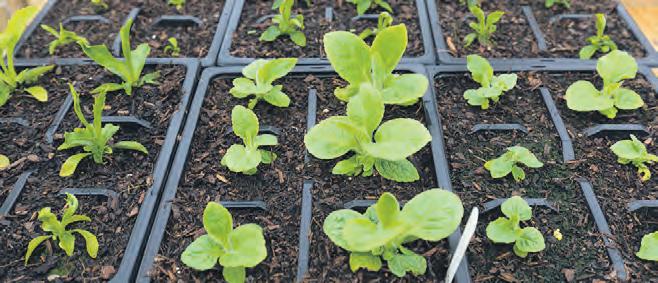
• Seedlings in peat-free compost can start off well and then ‘Stop’ -this problem is usually nutrient led.
• Peat-free compost will benefit from feeding after about four weeks into the growing process.
• Beware buying reduce peat - it could still contain up to 80 percent peat.
• Mixing in a layer of home-made compost can also boost t any low nutrient content.
• Words such as ‘environmentally friendly’ and ‘organic’ may lead you to think a product is peat-free, but they do not actually mean that it is.
• A good-quality peat-free compost is usually a little more expensive. Price does tend to reflect quality.
• Check the label on the bag to see if it is recommended for uses or plant groups (such as seed sowing or growing bedding plants).
• Read and follow any advice offered on the label of peat-free products, as many need slightly different plant-care routines than peat-based products. Pay particular attention to watering and feeding requirements, as these do tend to differ.
Country Gardener 32
HOW TO GARDEN without chemicals
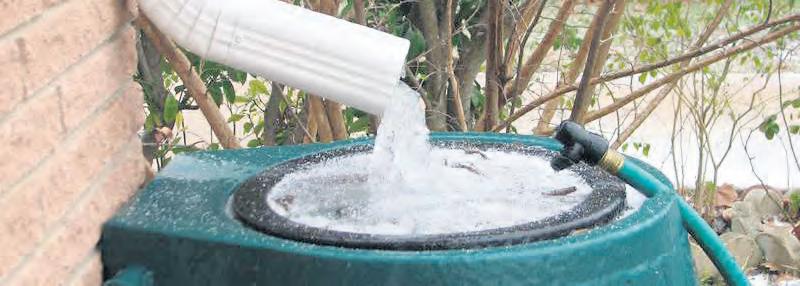
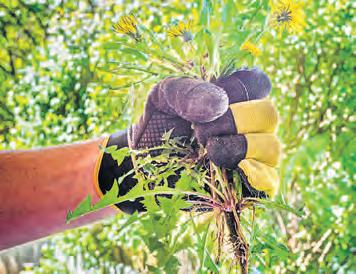
A chemical free garden doesn’t need to be full of pests and diseases. If you take time to understand how your garden grows you can be ready for any problems that might affect your plants and you will use solutions which won’t harm the planet.
THE NETTLE GROWING THEORY
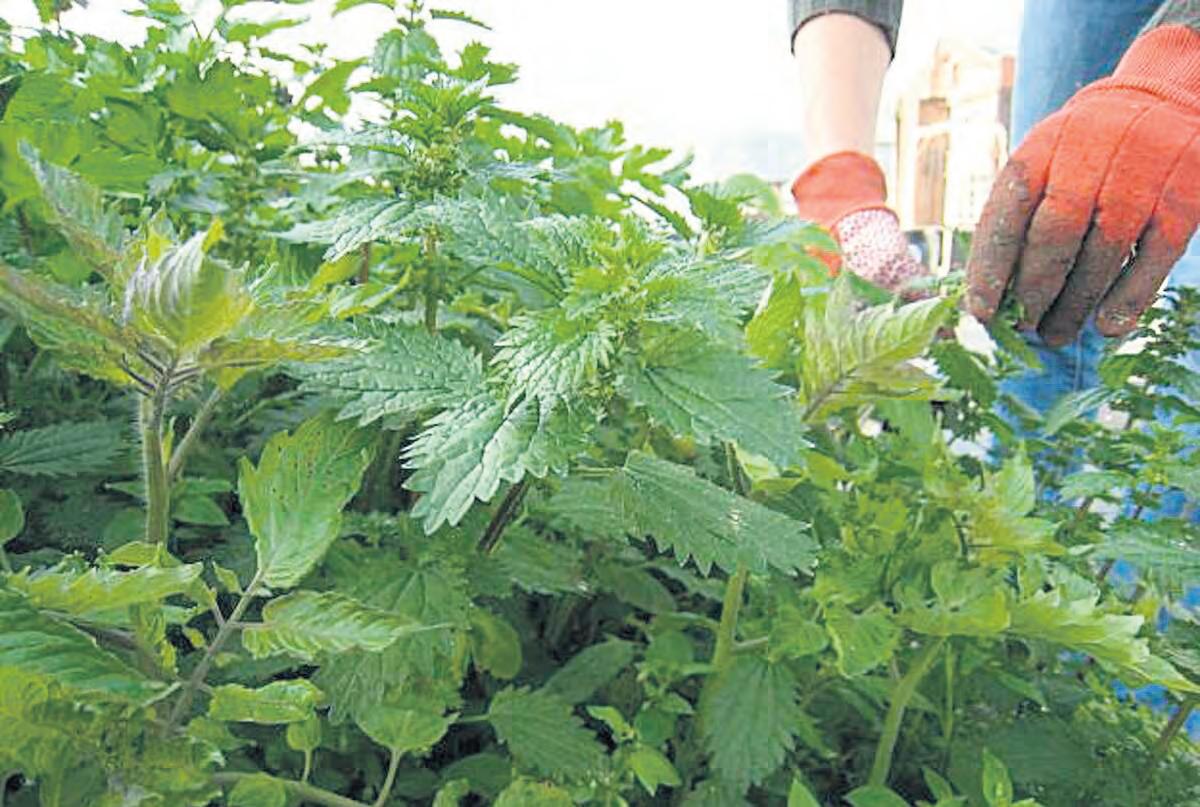
Most wildlife gardeners already know of the benefits of leaving a patch of nettles in a sunny spot for butterfly larvae to feed on. However now there is another reason, as it seems that they are a favoured food of snails. They congregate around the nettles, thus acting as decoy away from those prized vegetables and plants.
Many garden pests are attracted by scent. Planting strong-smelling plants and herbs such as tansy, marigolds, mints, catnip, onion and garlic may repel them. If they don’t deter them they may encourage biological control in the form of predators such as the hoverfly whose larvae eat up to 50 aphids a day!

STAY ALERT
This might sound obvious but one of the easiest things to do to keep alert and ahead of things in the garden. Pour yourself a cuppa and stroll around the flower beds, greenhouse, and pots. It’s a lovely way to start the day anyway and helps you spot any problems the moment they start. In this way you will catch pest outbreaks early when they are easy to deal with. Squash aphids by hand while numbers are still small. Pick off any mottled leaves affected by red spider mites and you will remove the mites too. And get the hose out to blast off blackfly from lupins and broad and runner beans.
PLANTING WISELY
By carefully planning your planting, you can also avoid a lot of damage. For example, by rotating the location of your plants, you may be able to avoid recurring infestations from insects that remain dormant in the soil between seasons. Another great strategy is to time your planting and harvests to work against nature’s timetable. For example, sowing carrots later, or harvesting potatoes earlier, means missing the most active times for some of the hungry minibeasts they attract.
COMPANION PLANTING

ADOPT STRONG HEALTHY GROWING SYSTEMS
Keeping your growing area in good health, rather than just pest and disease free, is at the heart of organic growing. Creating a diverse and vigorous growing system, good hygiene and close observation to help prevent problems. Clean tools regularly and take care when you source plants to ensure they have been grown using if not complete organic principles, then at least healthy growing principles.
Companion planting is all about creating areas of plants that provide benefits to each other. By planting ‘companion’ plants among other plants it can help them to grow by either attracting beneficial insects, repelling pests, or by acting as a sacrificial plant to lure insects away.
Chives, onions and garlic are widely reported to have a repellent effect on many insects. You may decide to plant some lettuce near the edges of your vegetable patch to keep slugs on the fringes, where you can catch them before they get to the plants you want to harvest.
ENCOURAGE BIODIVERSITY
Biodiversity just means different life forms. So, this can mean growing different types of plants so that a variety of flowers, vegetables, trees and shrubs are all present and proving habitats for food for wildlife and feeding the soil life.
It’s a bug eat bug world and the pests that attack your plants are at the bottom of the food chain. Natural predators from bluetits to beetles will not wipe out pests totally but will stop them from getting
CHOP OFF THEIR HEADS
Even the most unpleasant weed will not survive if they can’t photosynthesise. So, hoe off or pull out new shoots of weeds every week. Over time the plants will weaken and may eventually die out. Then there’s the cardboard treatment. A layer of thick cardboard also beats perennial weeds. Lay it on bare soil, wet it and tread it down. Then top off with a layer of garden compost sow and plant into the compost and over time to carboard will rot and prevent light from getting to the weeds, leaving you with a flourishing bed.
USE RESOURCES RESPONSIBLY
Reuse, reuse and recycle is an important part of organic growing. An efficient use of materials helps to maintain the natural environment and conserve resource. So wherever possible use natural resources such as wood and plant material and source them locally to reduce their energy footprint. Waste should be avoided, as a central belief in organic gardening. Most obvious in all this is the capture of rainwater instead of using expensive mains water and you can make this a priority this growing season.
out of hand so encourage predators with food and shelter. Dot bug hotels and log piles at regular intervals around the garden and plant twiggy native shrubs and hedges such as hawthorn to shelter birds and hedgehogs. It’s a way of helping them to help you.
Varying your planting whether vegetables, fruit or flowers helps prevent the build-up of soil diseases. You will create a variety of food sources and shelter for birds and insects. Encouraging this wildlife into your garden will help control many pests.

www.countrygardener.co.uk 33
WELCOMING BEES AND BUTTERFLIES
There’s a four-point plan available which is a simple yet effective route to attracting bees and butterflies into your garden.



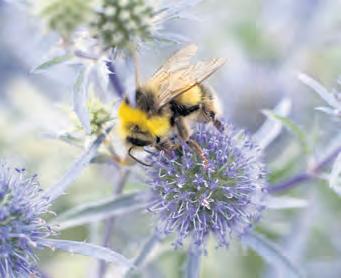
Its isn’t complicated, nor expensive and will for the most part mean your garden is playing its part in turning into a wildlife haven providing a safe place for them to rest, feed and find mates.
• Provide flowers with easily accessible pollen and nectar. The most important point and there is now a great deal of help available for specialist nurseries dedicated to making gardens more wildlife friendly. The range of plants they offer is huge and exciting and is backed up by expert help and advice. So, planting pollinator plants – including native plants and clumps of plants of many shapes, scents, and colours. Include larval host plants as well for caterpillars has never been easier.


• Leave out a little pot of water for drinking and bathing. Easy to forget but vital in any garden
• Avoid using pesticides. You don’t have to be heavily into organics principle but




just being sensible will do the trick. The rule must be no chemicals. Never spray pesticides! These are most toxic to bees and butterflies and ultimately affect the pollen and nectar of entire plants.

• Arrange plants in groups and provide bulk feeding plants for the insects to find easily and absorb. Use succession planting for a long flowering period.

A bee and butterfly garden is simply a garden that has been mindfully planted and cultivated with plants and flowers which attract these lovely little insects.
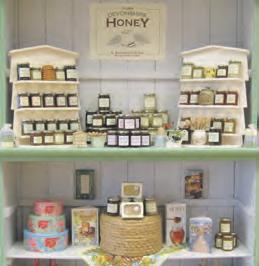
The population of bees and butterflies is declining worldwide as a result of the presence of parasites, the use of pesticides and herbicides, and climate change. This is not only incredibly sad; it is also a potential tragedy and threat to our very existence, as we rely on bees and butterflies (as well as hummingbird pollinators) to pollinate our food supply and the food supply for other animals, bird, and insect life. Without bees and butterflies, at best, the world would be a much less colourful place.
By cultivating a bee and butterfly garden with plants that attract them and provide them with shelter. We can each play our own small but important role in maintaining and building thriving happy bee and butterfly populations in our local area for now and into the future.
Contrary to what you may expect, a manicured lawn is not an oasis for bees and butterflies. So keep some parts of your yard ‘messy’. Don’t over-prune and don’t be too quick to pull up flowering weeds like clover.
BEES & WILDLIFE Come and be part of this special place Open 10am - 4pm, Wed - Sun We are a dog-free site Near to Blackbury Camp, EX24 6JF www.blackburyfarm.co.uk 01404 871600 Garden tea room Teas & light lunches Honey and produce shop Information & courses Wildflower meadow Pollinator gardens & orchard Country Gardener 34
The key part of any plan to attract insects into your garden is the plants you choose and luckily there’s a great selection of specialist nurseries dedicated to making it easy to buy the right pollinator plants
Everything is buzzing at Blackbury Honey Farm
May is a wonderful month to visit Blackbury Honey Farm. In the pollinator gardens, paeonies, foxgloves, aquilegias, lupins and a host of other cottage garden favourites are appearing. A parade of colour and scent which will continue throughout the year.
Beyond the formal gardens, a twenty-acre wildflower meadow delights the senses with its gentle wash of natural countryside blooms, alive with honeybees, bumblebees, and early butterflies all in search of nectar and pollen.
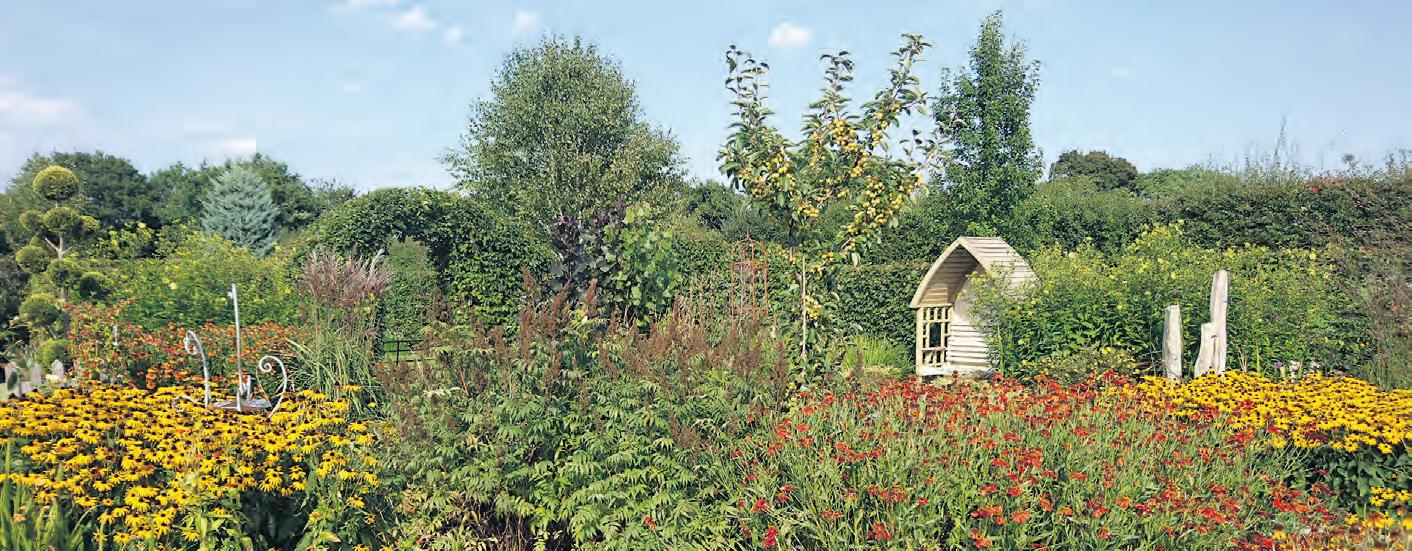
All around the grounds, fruit trees are a riot of blossom and the vegetable garden and polytunnel are in lush growth, providing salads, vegetables and herbs for the home -made produce. Sample some of these in the delightful tearoom looking out over the garden where everything is freshly baked.
Blackbury Honey Farm, Southleigh, Colyton EX24 6JF
Tel: 01404 871600 blackburyfarm.co.uk
Bean Place Nursery put real effort into plants for bees and butterflies
Bean Place Nursery grow a wide range of hardy perennials that are attractive to bees, butterflies and other beneficial insects.
They grow heleniums, helianthus, echinacea, lythrum and rudbeckia to attract honey bees. monarda, nepeta, salvia and veronicastrum for the bumblebees. asters, eupatorium, asclepias and verbena for the butterflies. anthriscus, thalictrum and selinum for smaller beneficial insects.
Adding any of these plants to your borders will encourage the bees and butterflies into your garden. For more information or to place a plant order visit website www.beanplace.co.uk
REALLY USEFUL PLANTS FOR WILDLIFE
Really Useful Plants in Starcross, Devon is a family run nursery sensitively growing herbs, wildlife friendly flowers, perennial vegetables and willows. Butterflies, bees, and birds can be encouraged by planting a diversity of plants for their flowers, seeds and berries. Native wildflowers, pollen rich perennials, herbs and vegetable plants can enrich and create wildlife friendly gardens. Recommendations are available.
In the vegetable garden a wildlife friendly natural approach to maintaining healthy crops can be achieved by companion planting. Flowering plants such as calendula, sage, nasturtium can entice pollinators, divert aphids away from crops, or encourage natural predation of unwanted pests from insects such as ladybirds and hoverflies. Willows have huge wildlife benefit with early spring catkins a source of nectar and pollen for bees, the leaves are specific for some rare moth caterpillars.
The nursery pursues environmentally sensitive practice including using peat-free compost, recycled pots and chemical free management.

For plants and willow sales, commissions & workshops.
Email: reallyusefulplants@outlook.com
Website: www.reallyusefulplants.co.uk
Rosybee: quality plants for pollinators

Rosybee is an independent plant nursery specialising in plants for pollinators, aiming to make gardens more wildlife-friendly. The range is based on many years of research to ensure Rosybee provide plants that maximise the pollinator food supply. The research and plenty more tips on wildlife gardening can be found on their website. Great value plants in trays of six. All plants are grown peat-free and pesticide-free and in recycled plastic trays.
www.rosybee.com
Watersfield, Bletchenden Road, Headcorn, Kent. TN27 9JB | 07779728378 | www.beanplace.co.uk | Follow us on Specialist growers of hardy perennials, ornamental grasses and garden ferns. All carefully packaged and delivered to your door Shop online www.beanplace.co.uk Quote CG10 for 10% off your first order Grown in the garden of England Buy direct from the grower
www.countrygardener.co.uk 35
Busy Bee products are all hand-made

Busy Bee Products have developed a range of produce using New Forest honey and beeswax. They are a family business, who hand-make all their cosmetics and candles. They are continually developing new products to enhance their range and are just about to launch a lavender scented gardener’s hand salve and a sandalwood scented worker’s hand salve. They will shortly be launching a refreshing and moisturising peppermint shaving cream too.
Their most popular products are their lavender and honey hand balm, their lip balm, soaps, and luxury scented candles.



They also have a range of beeswax wraps, ideal for keeping sandwiches or cheese in perfect condition, and can be used time and time again.
All their cosmetic products have Cosmetic Products Safety Reports (CPSRs) and are registered on the UK Cosmetics Portal.
www.busybeeproducts.co.uk
PASSIONATE ABOUT WILDFLOWER FRIENDLY PLANTS

Jemima’s Garden specialise in seeds for people who care about nature and the environment.

Whether they’re native wildflowers, herbs or cottage garden flowers, the varieties are all chosen for their benefits to bees, hoverflies, butterflies, moths, bats and other creatures.

All seeds are pesticide-free and many are produced on their own plot using organic principles. All packaging is plastic-free and recyclable too.
If your growing space is a few pots, a window box, a garden, or even a meadow, Jemima’s Garden can help you choose and grow beautiful wildlife-friendly plants. For information and seeds visit www.jemimasgarden.co.uk
Flower seeds for wildlife
country gardener CROSSWORD
WIN £100 IN RHS GIFT TOKENS
Welcome back to our popular gardening themed crossword compiled by Saranda which over the past year has become enormously popular with readers. The winning entry to be drawn by us will receive £100 of RHS gift tokens. Completed entries should be sent to Mount House, Halse, Taunton, Somerset TA4 3AD. Closing date is Friday, 26th May. The winner of our April issue crossword was Sam Yeldman from Dorchester.
ACROSS
6. Person engaged in bringing in the crops (10)
1. The beautiful Shugborough Estate is six miles from this town (8)
5. Genus of shrubs commonly called mock-orange (12)
HERBS & WILLOW
13. Leaf of Asian plant chewed in the East as a stimulant (5)
14. Dessert apple associated with Devon (11)
15. Open area of grassy or arable land (3)
16. Family of flowering plants including ebony and persimmon (9)
17. The quality of being worldly (11)
18. Tall perennial herb, Veronicastrum virginicum (7,4)
19. Tropical tree with prickly trunk, Caesalpinia echinata (9)
20. Prose full of ornate and flowery language (6,7)
22. To subject to some kind of treatment or influence (6)
25. Famous porcelain company which had ‘Royal’ added in 1890 (5,5)
27. Class of Pteropsida comprising ferns that produce no seeds (10)
29. Famous salad generally attributed to the restauranteur Cardini (6)
30. Shrubs or trees of the heather family whose name means rosetree in Greek (13)
33. A bilberry or whortleberry (9)
35. Of the growth of a plant in response to light (11)
37. Belonging to the buckthorn family of plants (11)
39. Fundamentally (2,7)
41. Frozen water spotted in Leicester! (3)
42. Widely-used embroidery technique worked in close parallel rows (5,6)
43. Great Garden and Ricasoli Gardens are found in this Italian city (5)
44. Traditional English folksong possibly written by Henry VIII (12)
45. Effectively or helpfully (8) DOWN
1. A Scottish spring onion (5)
2. Someone who buys and sells paintings (3,6)
3. They are grown primarily for their decorative leaves (7,6)
4. Croquet strokes (7)
7. Person who prefers not to associate with others (5)
8. Woody climbing plant of the Aristolochia genus (9,4)
9. Extensive or far-reaching (7)
10. A mainly woodland orchid found in northern temperate regions (11)
11. Useful organic solution to remove aphids and blackfly? (8)
12. The fruit of a South American plant with heartshaped leaves (4,10)
18. Coin still used in Russia and Belarus (6)
19. Experts in the study of ferns (14)
21. A reading of verse, usually given by one person (6,7)
23. Traditional children’s game which is a variant of tag (5,4,4)
24. Relating to Iran or its language (6)
26. The wood sorrel family (11)
28. Plants with heads composed of many florets such as daisy and goldenrod (10)

31. Recurring every eight years (9)
32. Layer of earth into which grass has grown (8)
34. A blessing or benediction (7)
36. Tropical West and Central African trees (7)
38. Lightweight cat!
40. Thomas Gray’s famous poem written in a country churchyard (5)
Answers from previous issue, April 2023:
BEES & WILDLIFE Visit our website to see our selection of hand-made candles and cosmetics, made using New Forest honey and beeswax. www.busybeeproducts.co.uk | admin@busybeeproducts.co.uk Tel: 07955 307 684 | 24, SO41 0HN For 10% DISCOUNT use code CGM23 ✔ Willow Growers ✔ Wildlife
Starcross
EASTERHILL
Friendly Plants ✔ Herbs & Edibles
Devon www.reallyusefulplants.co.uk
Get your garden buzzing...
www.jemimasgarden.co.uk JEMIMA’S GARDEN
CROSSWORD 1 2 3 4 5 6 7 8 9 10 11 12 13 14 15 16 17 18 19 20 21 22 23 24 25 26 27 28 29 30 31 32 33 34 35 36 37 38 39 40 41 42 43 44 45 M E D I C C A A T I N G A M A D R I D A E O O E R R P A O C H U T N E Y G O R S E T R I F F I D E T F O E E O A F M I Z V E S T I A G E N T I A N E L L A D I R I N A H S E N I S A B E L L A A T T A R O F R O S E S C N L C E M N E I E N C Y C L O P A E D I C D E P R A V E N O E B O O E C N T U L I P M A N I A I M P R I N T E R S R O E U N M T A H A N N U A L S E U P H O R B A C E A E I R L T O N U T A D E A D S E A A P P L E P H I L O M O T E L N U L G R E O H P G H E A D E D L Y A B S C S N I O M E D A R T S S K C L O T B U R I N N E R O P U N T I A T S E N N Y N R E K S P E A R S A G U A C A T E E N N U
36

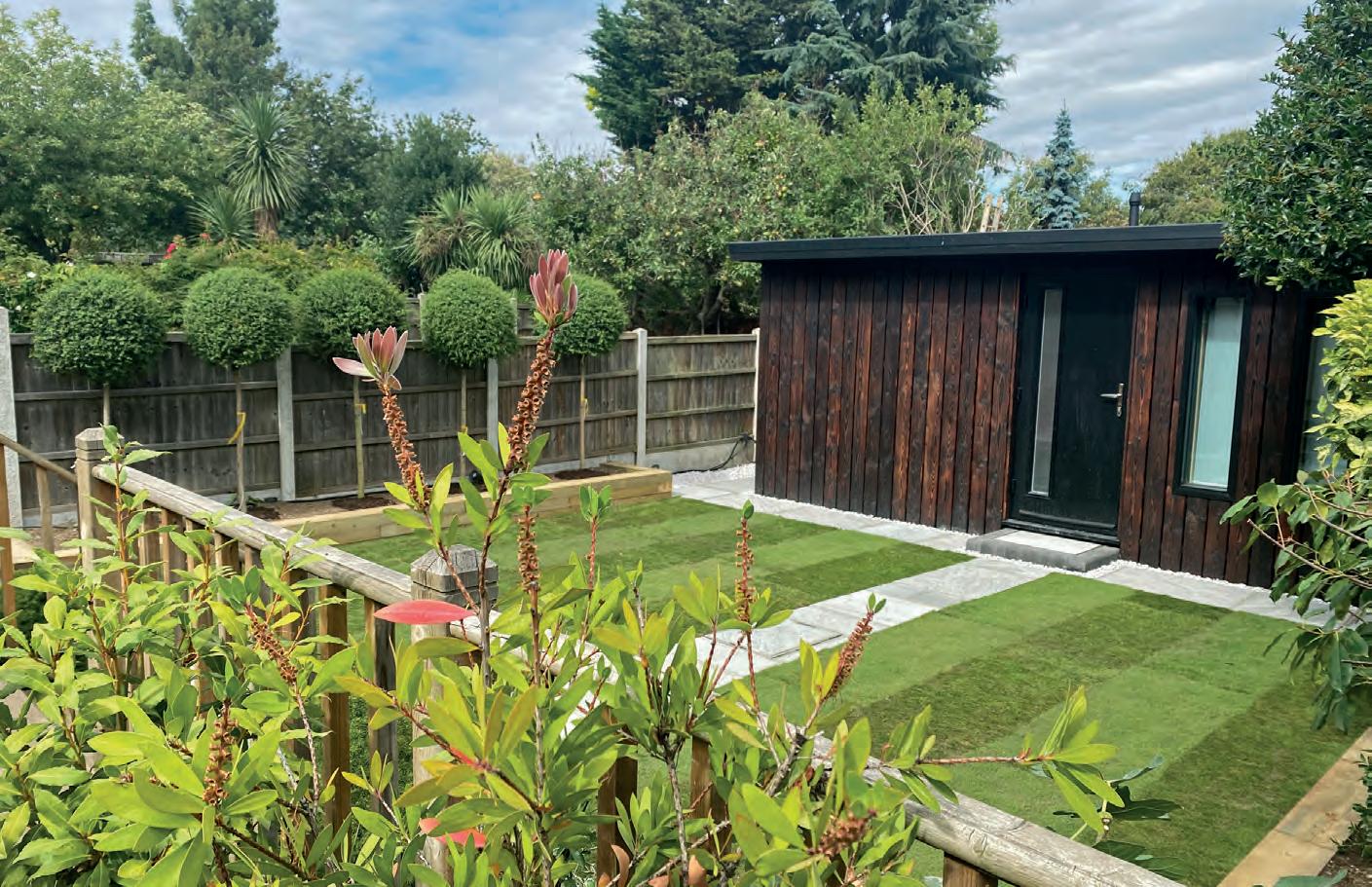





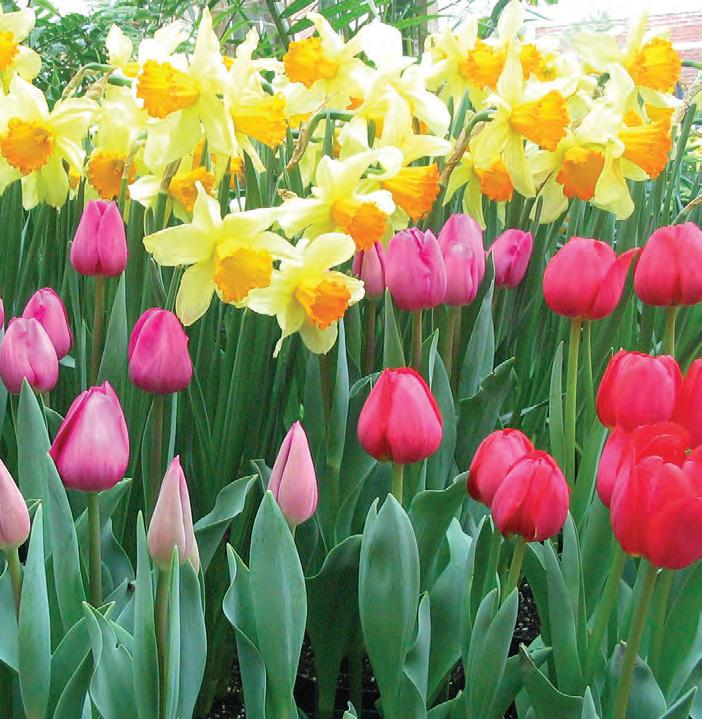


www.countrygardener.co.uk 37 Garden Plants A wide range of plants & trees available for delivery direct to your door 0203 137 5159 www.gardenplantsonline.co.uk Nationwide Delivery Call us for more details: using our own fleet Discounts available for trade customers • Fantastic value • A huge range of vegetable, flower & herb seeds • One of the largest selections of organic certified seeds • DEFRA and Soil Association licenced • Prompt shipment in quality protective packaging • Major supplier of seeds for microgreens & sprouting Rated the top UK professional seed supplier on UK Trustpilot 4.9 out of 5 based on 11,397 reviews Excellent We are a small family company, concentrating on seed quality, minimal packaging waste & generous seed quantities, at a fraction of the price of larger brands. www.premierseedsdirect.com For the latest garden news, events & advice - don't miss COUNTRY GARDENER www.countrygardener.co.uk GET MORE FROM YOUR GARDEN THISSpring If you would like to advertise your business or service in our Hampshire magazine, please contact ava@countrygardener.co.uk Tel: 01278 786139 Reach a passionate and affluent audience of gardening enthusiasts Over 100,000 copies distributed every month
Harnessing children’s passion for gardening
Ann Dricker-Smith has been involved with several schemes in schools throughout Devon, Dorset and Somerset to encourage children to get involved in gardening.
I am not a teacher and not trained as one but there have been times over the past twelve months when I have felt that I have been working with children all my life. About three years ago a contact at Devon County Council asked if I could help them organise a more formal approach to how children could get involved in gardening projects.
The interest was huge and all over the country schools were getting involved in gardening, but the council was getting inundated with requests for help from teachers who wanted to make the most of children’s interest.
I was already sold on the idea.
Gardening is a healthy and inexpensive way for children to learn and have fun at home, school or the allotment. Research suggests children perform better at school if they’re involved with gardening and many will develop a greater interest in healthy eating if they get to grow their own vegetables.

I am sure there are other benefits. Gardening teaches responsibility and can help to build a child’s confidence. Plus, there are so many other benefits to gardening besides enhancing a child’s development.
Benefits like getting fresh air, developing a taste for healthy food, introducing them to new foods, getting physical activity, learning new skills and so much more.
Children are all different – some will like gardening and some will not. Being creative and learning how to make gardening fun will go a long way to develop a lifelong love for gardening in your kids. Here are some ideas to get those creative juices going:
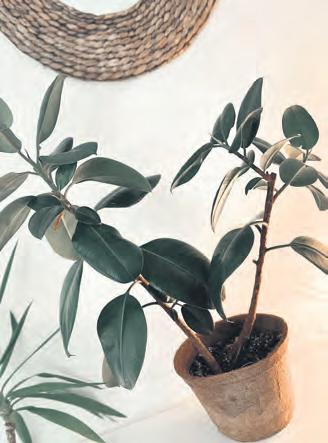
Toddlers, preschoolers, primary-schoolaged and older children will all have different expectations and will learn different things in the garden. So my task was just to get out some information which would help teachers as they faced a lot of genuine interest from kids.
Within a few weeks I noticed that the ideas had gone across borders and was being picked up by schools in Dorset and Somerset. Here’s an example of what I thought might help
Getting children interested in gardening
Some suggestions to get children involved and interested in creating a garden include:
• Keep it simple.

• Give children their own garden space. (This does not have to be big. You can start with a large container or a few pots).
• Involve older children in the planning and design of the garden.
• Use lightweight, easy-to-handle, correct-sized tools and garden equipment.
• Encourage children to dig in the dirt. (Younger children love making mud pies).
• Grow interesting plants such as sunflowers, corn, pumpkins, tomatoes and strawberries.
• Use a trellis or teepee to grow beans or sweet peas.
• Plant flowers that attract butterflies, ladybirds and other interesting insects or birds.
• Install a water feature, a birdbath or a sundial.
Plant selection for children
You should also consider using varieties of plants that have sensory and textural qualities as well. Examples of great sensory plants include:
• TOUCH – woolly lamb’s ear, succulents (such as aloe vera), bottlebrush species, snapdragons.
• TASTE – basil, strawberries, peas, rosemary, carrots, cherry tomatoes.
• SMELL – jasmine, sweet peas, lavender, pelargoniums, native mint bush, lemon balm.
• BRIGHT COLOUR – daffodils, rainbow chard, marigolds, pansies, sunflowers.
Be sure to have your children help with all aspects of gardening; like planting, watering, weeding and harvest. With a little guidance from you, they can learn the complete growing process.
COIR HANGING BASKETS FOR SPECTACULAR SPRING GROWING
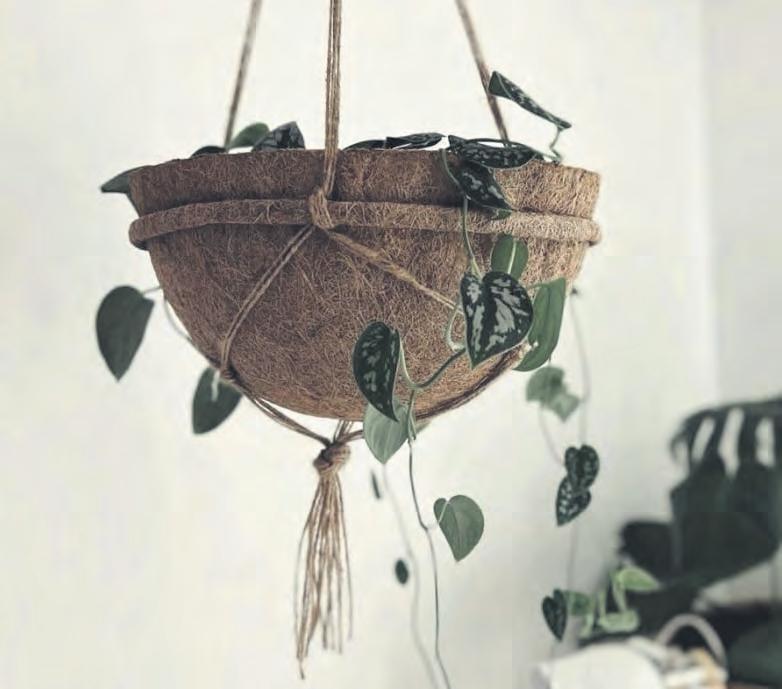
SPRING IS THE IDEAL TIME TO TURN YOUR THOUGHTS TO HANGING BASKETS
CoirProducts.co.uk (of Salike Limited) offers an innovative range of horticultural products made from organic coir perfect for the eco-conscious grower. Part of the sustainable range includes natural and biodegradable Coir Pots (also known as coco pots) and Coir Hanging Baskets, ideal for those looking to move away from plastic planting materials. They are made with natural fibres extracted from the coconut husk and are vegan-certified and ethically sourced. This means there is minimal environmental harm in producing or using our products.
Coir has high water and air-holding capacities, which helps plants develop stronger roots and stems, resulting in better plant growth. The range includes smaller sizes, such as five cm and eight cm. These sizes are perfect for propagating plants, or sowing a variety of seeds. There are also larger sizes such as 23cm, 28cm, and 35 cm, ideal for larger plants.
In traditional methods of growing, plants often need relocating as they grow bigger, yet this can damage the root system resulting in slow growth. However, with coir roots grow through the walls of the coir pot, therefore, as plants grow bigger, they can be replanted directly into the ground or a bigger pot with the coir pot itself, thus avoiding any transplanting shock. As they are biodegradable, the coir pots decompose into the soil over time. They also help prevent root entanglement and circling, which can negatively impact plant growth and yield. For other plants and crops, like trailing plants,the eco-friendly Hanging Baskets are a space-saver and can easily transform any home or garden. Complete with natural jute yarn, the hanging baskets are ideal for trailing plants and come in 25cm, 30cm, 35cm. There are also coir basket liners (coco liners) in sizes of 25cm, 30cm, 35cm, 40cm, 61cm, and 76cm - allowing you to replace worn basket liners. The goal is to help gardeners choose sustainable choices when growing, gardening, and protecting the soil from erosion. They offset the carbon footprint in transporting goods to the UK, making products ideal for eco-conscious growers. www.coir products.co.uk
READER’S STORY
38
Go guerrilla gardening!
Guerrilla gardening is enriching large areas in the southwest– for everyone – by growing flowers and edible crops on land that doesn’t belong to anyone.
A new report studying how the growth of guerrilla gardening has expanded in the last ten years says that it is neither rare nor unwanted. Examples of guerrilla gardening are highlighted in a study carried out in Devon, Dorset and West Somerset and even highlights local councils agreeing for land to be used for wild gardening.
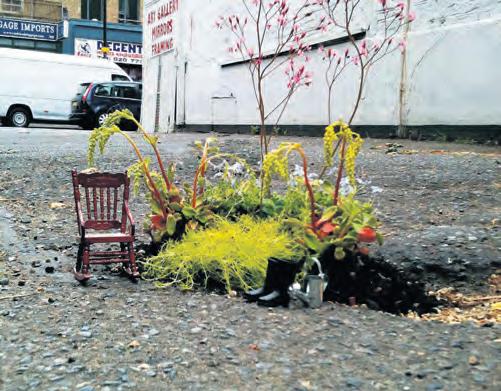
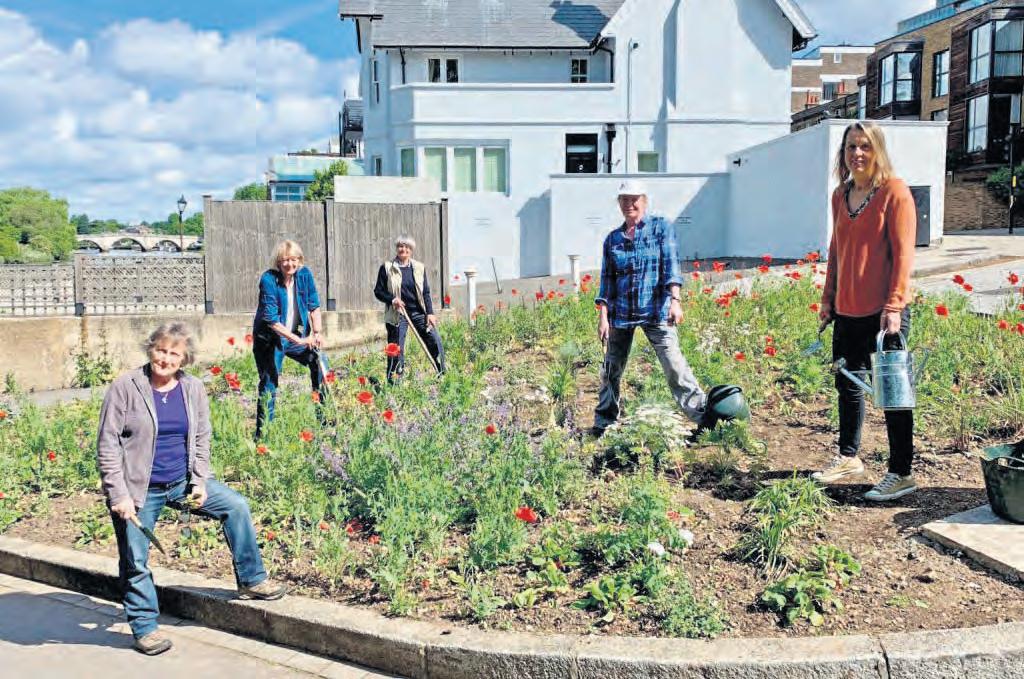
Some guerilla gardening might be illegal (mainly because of trespassing laws) but it has become so mainstream now that many councils are embracing the idea and will grant permission to guerilla gardeners to tend to neglected areas of council property. So, if you’ve spotted a patch of ground or tatty raised beds that need some ‘TLC’ it’s well worth getting in touch with the council or landowner for permission before you do anything. The activity has so many benefits, such as enhancing appearance, cheering up local people, making the area look cared-for and supporting wildlife, that you might find there is a lot of support for it.
In New York, in 1973, a financial crisis resulted in vacant lots (empty plots of land) and abandoned buildings. A non-profit environmental group called the Green Guerrillas, began cultivating these eyesores by throwing ‘seed bombs’ – balls of seed, clay and soil –over their fences.
In many locations, guerrilla gardening has now moved into the mainstream, with some local authorities embracing this idea of cultivating every conceivable corner, growing fruit, veg and herbs in public spaces, for everyone to share.
Grow Wild, the outreach initiative of Royal Botanic Gardens Kew, works to encourage people to transform spaces, including shared ones, with native wildflowers, and offers some free seed kits.
If you look around, you can find potential plots on roadside verges, railway embankments, empty planters belonging to the local authority or businesses, or communal space near your home. With the latter, you might want to canvass support and recruit more volunteers to help.
You can rehome any surplus plants you have in your garden, or propagate some. Gardeners often give away plants on sites such as Freecycle. And, of course, you can buy seeds or plants specifically for ‘your’ plot.
Richard Reynolds suggests choosing large specimens, and those with impact: “Make your garden stand out from the context in which it sits. Wow the public into appreciating it. Using a mature flowering plant will create a big impact immediately and so help ensure your planting is not overlooked or mistaken as a weed.”
You can make your own seed bombs for tossing onto inaccessible areas behind fences or above ground level; they’re also great for dropping onto bare patches of soil you pass. Seed bombs are also now available to buy.
Another easy, and well-established, idea is to plant around the base of street trees, a
Guerrilla gardening Q&A
Is guerrilla gardening illegal?
Guerrilla gardening is defined as gardening done without permission on land which is not your own. Although technically illegal, few people have ever been prosecuted.
Why is it called guerrilla gardening?
The term “guerrilla gardening” was only coined later in the 1970s and came from ‘Christy and her Green Guerrillas’, who thought their tactics were similar to guerrilla fighters working at a grassroots level against those who held power. From this, they started a global movement.
Is it legal to take plants from the wild in the UK?
Under the Wildlife and Countryside Act 1981, it is unlawful to uproot any wild plant without permission from the landowner or occupier. To uproot (digging) a plant means to ‘dig up or otherwise remove the plant from the land on which it is growing’, whether or not it actually has roots.
What flowers are illegal to pick in UK?
So what are the rules about picking flowers? Under the 1968 Theft Act and the 1981 Wildlife and Countryside Act, it’s illegal in the UK to: pick, uproot or destroy any wild plant without permission from the landowner or occupier.
Is it illegal to have an overgrown garden UK?
Your rights when it comes to neighbours’ gardens are governed by a number of laws. An unkempt or slightly overgrown garden isn’t enough to enable you to take action unless it’s contravening the law.
practice that is welcomed by several local authorities including Hammersmith and Fulham in west London, whose leader said: ‘We will support any residents who want to do this and look forward to seeing more of our borough in bloom.’ Hammersmith & Fulham even provide instructions for planting under trees on the council website.
Linked to guerrilla gardening, but not quite the same thing, is organised on-street gardening, where groups of locals band together to create and maintain plantings in places the local council may have neglected, or on pieces of land associated with public housing. Take the Walthamstow Street Gardeners in northeast London, where the ‘guerilla’ sights include a shrub-rose garden by the roadside.
Also related to guerrilla activity is the concept of gardening in ‘meanwhile’ spaces – typically, privately owned land that may have been earmarked for housing or another use, but is not yet being developed. The difference is that permission is (usually) granted beforehand. Once the plot is growing, all you need to do is water it if necessary, tidy it up (weeding, pruning, litter-picking), add plants – and look out for a new location!
www.countrygardener.co.uk 39
ONCE RARE AND THE CAUSE OF CONTROVERSY, WILD GARDENING ON RANDOM PLOTS OF LAND IS NOW ALMOST COMMON IN THE SOUTH WEST OF ENGLAND
LET’S GET TOGETHER!
VISITING SEVERAL GARDENS CLOSE TOGETHER IS NOW AN EASIER OPTION AS GARDEN OWNERS WORK TOGETHER TO ATTRACT VISITORS


Visiting a garden is a very enjoyable way of spending an afternoon, but when you can visit several gardens in a location it can be even more fun. It’s good value as well – a combined ticket gives you admission to all gardens that will be open.
Here’s a selection of gardens opening as a group during May, whether it’s two or three neighbouring gardens or many more in a village. They are spread out in several counties, so you can choose one nearer to you or travel to one – you may even be able to make a day of it if staying in the area for a holiday.
ROMSEY IN HAMPSHIRE
At Romsey in Hampshire on Sunday 28th and Bank Holiday Monday 29th May there’s a garden connected to a king, a convent garden and the garden of a former pub, all open for the National Garden Scheme.

KING JOHN’S HOUSE is a fascinating 13th century house (not open on Sunday 28th May) with some pre-1700 period planting and a Victorian courtyard garden while NELSON COTTAGE is a former pub with a half-acre garden, perennials and shrubs and a wild grass meadow. LA SAGESSE CONVENT is by Romsey Abbey and has an unusual meditation labyrinth, rose garden and a walled garden.
The gardens will open from 10.30am until 4.30pm on both open days, combined admission is £8, children free, with homemade teas at King John’s House (in aid of its own maintenance fund), plants will be on sale and there’s wheelchair access.
Romsey Gardens, Romsey, Hampshire SO51 8LD
Amport and Monxton near Andover are two pretty Hampshire villages linked by the Pill Hill Brook. Three gardens will be opening on Sunday 28th and Bank Holiday Monday 29th May for the National Garden Scheme, from 2pm until 5.30pm.
BRIDGE COTTAGE is a two-acre haven for wildlife with the banks of the trout stream and lake planted with drifts of colour, and there’s a vegetable garden, small orchard and arboretum. CORNER COTTAGE
STOKE BISHOP, BRISTOL
There are three very different gardens opening on Sunday 7th May for the National Garden Scheme at Stoke Bishop in Bristol, all within half a mile.
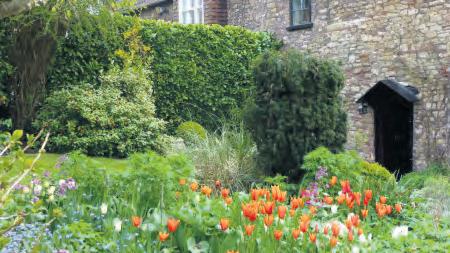
LUCOMBE HOUSE has the 260-year-old Lucombe Oak, registered as one of the most significant trees in the UK, and a collection of mature English trees with bluebells and ferns, an urban woodland, plus a newly designed Sunnyside Arts and Crafts garden.
SUNNYSIDE is a 17th century cottage with a part-walled cottage style front garden, a courtyard
is a delightful cottage garden and WHITE GABLES has a cottage style garden, tree collection, old roses and herbaceous plants.
Combined admission is £6, children free. Homemade teas will be available, a large plants sale at Bridge Cottage, dogs allowed, there’s wheelchair access and coaches welcome.
Amport and Monxton villages SP11 8AY
garden with studio at the rear and garden sculptures dominated by a large magnolia, perennials and roses. 5 HAYTOR PARK is a peaceful haven with wildlife, having a pond and insect friendly plants.
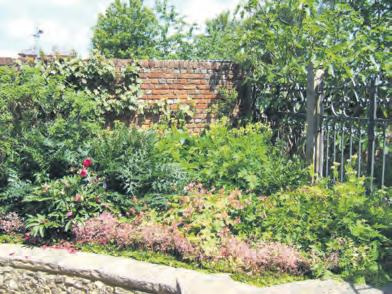
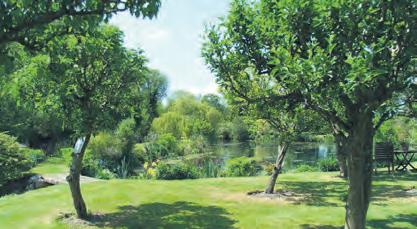
Open from 1pm until 5pm with combined admission £7.50, children free, and homemade teas at Lucombe House. Limited wheelchair access at Lucombe House, but not at the other gardens.
Stoke Bishop Gardens BS9 IDD
GROUPED GARDENS
AMPORT AND MONXTON NEAR ANDOVER
Bridge Cottage
Lucombe House
King John’s House
King John’s House
Corner Cottage
Sunnyside
40
Country Gardener
France Lynch, Stroud, Gloucestershire, have new openings for the NGS on Sunday 14th and Monday 15th May.
PENNY LEAZE has a balance of wildness, formal garden and tiny orchard; meandering paths lead to tranquil, shady seating areas. PONTINGS FARM is a one-acre hillside garden with views of the Golden Valley and beyond, with raised beds for vegetables and
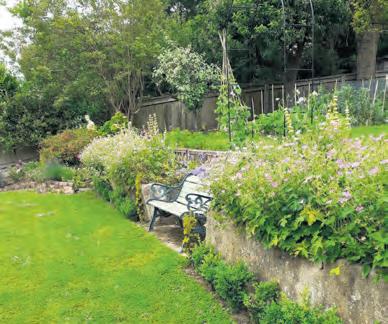
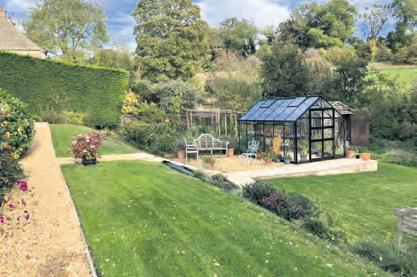
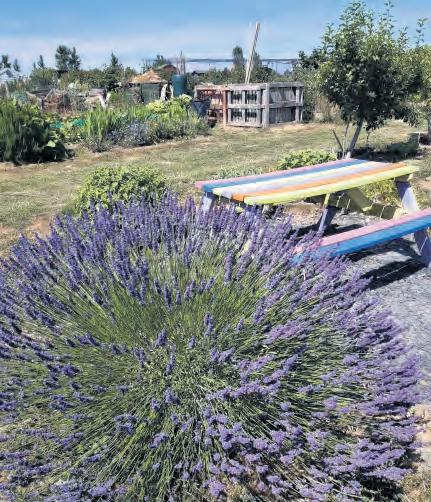

flowers, wildflower meadow, pond, orchard, woodland, prairie style and gravel gardens. The gardens open from 12pm until 4pm with combined admission £8, children free, with teas, plants for sale at Penny Leaze, and dogs welcome at Pontings Farm where it has access for wheelchairs (but not at Penny Leaze).
France Lynch Gardens GL6 8LU and GL6 8LX
Open for the NGS on Friday 19th, Saturday 20th and Sunday 21st May, two contrasting gardens on the edge of Dartmoor with views across Torbay and the Teign estuary.
The one-acre garden at BRAMBLY WOOD has herbaceous borders, extensive plantings of azalea and rhododendrons, pond and lots of tranquil seating around the garden, and the owners’ studio will be open, displaying pottery and textile work. HAYTOR HOUSE was designed along more classical lines, has an inner walled garden with a folly leading to distinctive garden rooms with a lily pond, raised beds, herbaceous borders, shrubs and acers.
The gardens will open from 11am until 5pm each open day, admission £6, children free, with homemade teas at Haytor House and dogs allowed. Access is difficult for wheelchairs.
Haytor Gardens, Haytor, Newton Abbot TQ13 9XT
HART'S GREEN GARDEN is a vibrant part of Edenbrook Country Park's area, and is a new opening for the NGS at on Saturday 13th and Tuesday 16th May.
MINDING THE GARDEN is a community garden that opened in 2022 – a social and wellbeing space for local people as well as a garden, helping local communities in their physical and mental health, with accessible paths and seating, raised beds and polytunnels producing food crops and flowers. HART DISTRICT ALLOTMENTS also opened in 2022 and has 94 plots working closely with the community garden. It’s mainly organic, with water from a bore hole pumped to large tanks around the site and there have been amazing results in a very short time.
The gardens will open from 2pm to 5pm on both open days, admission £6.50, children free, and booking is essential. Teas and cake will be available, plants on sale and there’s wheelchair access.
Edenbrook Country Park, Pale Lane, Fleet, Hampshire
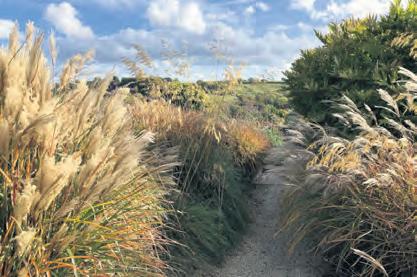
RG27 8DH
A group of suburban gardens opening for the NGS on Sunday 28th May, makes for a circular walk of a mile in total.
Close to the 250 acres of Robinswood Country Park, these gardens are of various styles and sizes, some corner plots, lawned or gavelled, with lots of colour in the flower beds, tubs, baskets, shrubs and trees.

The gardens open from 11am until 4pm with combined admission £5, for children £1. Homemade teas will be available at St Barnabas church hall, in aid of St Barnabas Church. There will be plants on sale and visitors can bring their own picnics.
Tuffley Gardens, Tuffley Lane, Gloucester
GL4 0DT
FRAMPTON-ON-SEVERN,
There’s a fine selection of gardens at picturesque Frampton-on-Severn opening in aid of Longfield Community Hospice on Sunday 28th May, all situated around the longest village green in England.
From the walled garden at the Manor, through to pretty cottage gardens, there’s plenty of variety and ideas to inspire visitors. There’s also a display of around 80 classic cars on the Green and two half-size traction engines will offer rides.
The gardens will be open from 1.30pm until 5pm, admission is £5, children free, with cream teas and cakes available and dogs on leads allowed. Tickets and information leaflets can be purchased on the day from the Rotary gazebo near the free car park or at the Manor.
Frampton-on-Severn, Gloucestershire
GL2 7DY
HAYTOR NEAR NEWTON ABBOT
FLEET, HAMPSHIRE
FRANCE LYNCH NEAR STROUD TUFFLEY LANE, GLOUCESTER
GLOUCESTERSHIRE
Penny Leaze
Haytor House
Hart's Green Garden
Frampton Fishing Lake
Tuffley Gardens
www.countrygardener.co.uk 41
Pontings Farm
JOBS IN THE May garden
1Stay on weather watch
May is the month when the garden really comes to life as summer fast approaches. But don’t allow your excitement about the growing season ahead to fool you into assuming it’s summer already: this is the month when holding back can pay off in the long run. It’s still too cold for many tender plants to go outside full time. And think about letting go of your mower: leaving lawns to go wild allows all kinds of delights to flower, much to the joy of the bees.
At some point during May there is a time when the risk of frost passes, and all the tender plants you’ve been tripping over indoors can be planted outside. So, you need to make a point of keeping up to date with the weather forecast and look for a rise in night-time temperatures – tomatoes, for instance, need a minimum of 10°C night and day before they can go out into a bed or container. While you’re waiting, harden off summer bedding and other tender plants in preparation for their transfer outside, this means putting them outside somewhere sheltered on warm days to gradually adjust to the conditions. Remember to bring them in before the temperature drops at night.
3Another ‘no mow’ May
No mow May was a great success with gardeners last year and looks set to be repeated So perhaps you should again lock up your lawnmowers for the month. This campaign by charity Plantlife encourages individuals and local councils to let grass in parks and on verges go wild for a few weeks, allowing dandelions, daisies, clover and other flowers to come into bloom and provide valuable pollen and nectar for bees and other pollinators.
Flower seeds to sow in May


Tidy up spring bulbs
Many tulips will return and they can be left in situ. Cut them back to one leaf and remove any fading stems on garden narcissi as well. However, if you’re growing wilder bulb species, like our native N. pseudonarcissus, leave the heads because species tend to spread by self-seeding.
Come summer, when the leaves have faded away, you can lift tulip bulbs, allow them to dry on wooden racks or newspaper and then store them indoors somewhere cool and dry to replant in the autumn.
Give young plants the room to grow

There’s no shortage of seeds to sow in the May garden, with many now being able to be sown straight into the soil outside. Sunflowers, cornflowers, zinnias, nasturtiums, nigella, poppies and wildflower mixes can all be sown directly into beds, borders or outdoor containers.


In trays and pots you can start growing biennials and perennials, such as foxgloves, wallflowers, delphiniums, lupins and primroses in the greenhouse or on the windowsill to flower next year and years to come.
The Chelsea chop is quick and effective even if it does seem brutal
Cutting the stems of flowering herbaceous perennials such as sedums and asters will keep plants smaller and encourage more flowers. This should not be done on flowers which flower only once, or flowers which are intended to be tall and striking. This is a way of staggering the blooming of plants that flower in bursts over the summer such as rudbeckias, catmint (Nepeta), echinaceas and heleniums. You can either cut every plant back by a third, or restrict your trimming to some clumps and leave others: either way, it should create bushier plants that flower over a longer period.

Roses come into their own during May
The bare root rose planting season ended in April, so May is the ideal time to buy roses in pots from garden centres or specialist nurseries and plant them out for a dazzling display this summer.
There are so many delightful roses to choose from for different situations – from climbers to miniatures for pots on the patio. Decide where you’d like to add roses, whether you just want to cover a wall or arch, mix in with herbaceous plants or start a
Thinning out young plants is a necessary evil when it comes to both vegetable crops and annual flowers. If you leave seedlings bunched together, they outcompete each other and the result is stunted growth. For vegetables such as carrots and beetroot, you can eat the pickings; for annual flowers such as love-ina-mist, pot marigolds and cornflowers, carefully dig up the excess seedlings with their roots intact and you should be able to transplant them into any bare patches.
Take comfort in comfrey

Comfrey is a wonder plant – its tap root draws up nutrients from deep in the soil, and the leaves store nitrogen, phosphorus and potassium, making them perfect for use as fertiliser. You can harvest this foliage to make a liquid plant feed, add as a surface mulch or add to planting holes.
dedicated rose garden, Consider your colour scheme, the combination of scents and if you’d like a blaze of flowers in one blooming or repeat-flowering options.
Bare root plants are usually purchased online or via mail-order and come in a semi dormant or dormant state with no soil on the roots. They are the preferred choice for many gardeners bare-root roses are generally the best quality and have a wider spread of roots than container plants.
If necessary there is still time to plant them during April.
JOBS FOR THE MONTH
5 6
2 4
8
7 Country Gardener 42
Feed your flowers and plants
Feeding now will pay dividends later, but you must use a slow-release fertiliser containing potash, to encourage more flowers. A general fertiliser can also be applied to roses, herbaceous plants and fruit. Avoid adding nitrogen-rich plant food: it produces too much leaf.
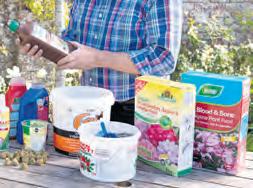
Vegetables will also respond to enriched soil. The easiest soil enhancer is well-rotted garden compost, so it’s worth making your own if you’re able to. You can also use well-rotted manure, although spreading it in early spring can be backbreaking. However, you can also buy bagged manure from garden centres. The best way to incorporate organic matter into a vegetable bed is to put some at the base of the planting hole. Squashes and courgettes benefit hugely from sitting above organic material because it aerates and warms the soil.
For brassicas sprinkle on a nitrogen-rich feed, such as chicken pellets or powdered chicken manure, straight after planting. Root crops prefer lighter soil and are generally best grown in soil that hasn’t been enriched.
Make a bean wigwam
Make a bean wigwam using canes or hazel stems to make a support for growing beans. Either tie the tops together to form a wigwam or else arrange the supports in long ‘Xs ‘that cross either half way up or close to the top. Sow a couple of beans to each cane and a few at the ends of the row as replacements for any that don’t come up. Beans are greedy plants so they’ll enjoy being grown above a trench filled with rotted manure or kitchen compost (even part rotted will do). Cover the trench with soil and then plant the beans. Once the beans are up make sure that the slugs cannot get to the growing tips because they’ll destroy the plant.
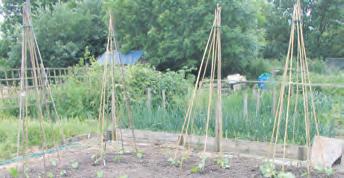
PERFECT SWEET PEAS
Gordon Baines has been growing sweet peas in his Devon garden for almost 20 years so he feels he knows what he’s talking about when trying to get sweet pea perfection
Some people say that growing sweet peas is akin to making perfect pastry. Some people have the knack, others don’t.
I’ve been growing them from here in Devon for the best part of 20 years. I love them. They are easy to grow, have so many options when it comes to colour and scent and size and make perfect cut flowers for the house for weeks and weeks.
So, what’s not to love about them?

And once you know one or two secrets it’s just a pleasure to see them flourish. Sweet peas grow from large, easy-to-handle, pea-like seeds.
True they’re a bit tricky because they are slow to germinate so worth experimenting with different seeds each year.
Prune forsythia

Prune forsythia after flowering If you don’t do this every year, they quickly get unmanageable and flower less well. Using sharp loppers and secateurs cut a quarter of the old growth to the base. Also remove diseased, dead, dying and wispy stems cutting them to the ground. Finally prune stems that have just flowered to two buds above the previous year’s growth.
Fruit

• Strawberries are insect-pollinated so make sure pollinators have access to your plants, whether in the greenhouse or outside under cover.
• Cover soft fruit plants with netting to protect from birds.
• Watch out for signs of powdery mildew or disease on fruit trees and bushes, and treat with a fungicide.
• Keep an eye out for less desirable insects and creatures such as vine weevil, slugs, sawfly larvae and fruitworms, particularly on gooseberry and currant bushes, and protect young fruit from birds by covering with netting or horticultural fleece.
PLUS...
• Water anything newly planted. Any veg or flowers planted this spring will need regular watering while they settle in and put down roots into the soil, especially during dry weather. This also applies to any new turf you may have laid.
• It’s best to wait until May before sowing French or runner beans, so they’re ready for planting at the end of the month. Plants sown too early will turn yellow if planted out too early and will struggle.
• Leeks that were sown last month can be planted outdoors. Allow around
30cm between rows to make weeding easier, and space plants at 15cmintervals for full-sized leeks.
• Finish planting maincrop varieties, such as ‘King Edward’, by early May for crops in late summer/early autumn. Plant the tubers 40cm apart in rows that are 60-75cm apart.
• You can encourage your tulips to flower again next year by feeding them with tomato feed and removing any flowers that have faded. Bulbs in pots are best removed from the pots after they have finished, and then replanted deeply (around 15cm deep) in the border.
Few annual flowers have the lasting appeal and bucolic beauty of sweet peas. Twining lazily around a rustic trellis, they seem the very antithesis of our busy lives. With their seductive fragrance, sweet peas make great flowers for gardens and bouquets.

The sweet pea—Lathyrus odoratus—is an annual that is at home in a cutting garden, border garden, woodland, or growing on a trellis or an arch. The flowers are now available in a huge range of colours, from pearly white through ice cream pastels to ritzy magentas and inky purples.
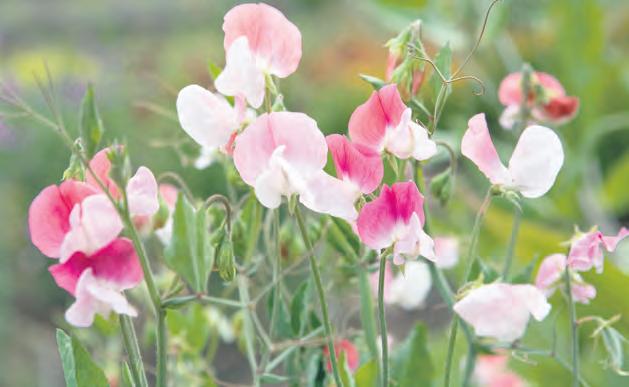
A lot of gardeners I know try growing them but few get everything right.
Sweet peas are happiest with their heads in the sun and their roots deep in cool, moist soil. When possible, plant low-growing annuals in front of them to shade their roots. Choose a well-drained site. Alkaline soil is best; sprinkle some powdered lime on the surface if your soil tends to be acidic.
Every gardener seems to have their own preferences when it comes to preparing sweet pea seeds for sowing.
Some feel the seeds need a lot of preparation, while others direct sow them and everything grows fine.
Prior to planting, you’re going to want to dig a nice deep ‘compost’ trench of about four inches in depth. After you dig the trench, make holes with a pencil, drop in the seeds, and press down on the soil to firm it and shut out any light.
Before planting, soak the seeds in water for 24 hours. Then nick the seeds with a nail file before planting to speed sprouting.
Sweet pea seeds have a tough coat. To speed up germination, I scarify the coat, which means nick it or rough it up to enable water penetration.
I do this for indoor and spring sowing.
I confess I often forget to prepare the seeds sometimes and they (mostly) still sprout but I do prefer to do this to ensure best possible germination rates.
Be sure to sow at the correct depth. Your seed packet will confirm the recommended amount.
Once out in the open air they will need support and they will flourish. Feed them and I promise if you cut almost every day in May and June you’ll be embarrassed by the number of flowers you have.
10
11
9 13 12
READER’S STORY
43
‘To speed up germination, I scarify the coat, which means nick it or rough it up to enable water penetration.’
CLASSIFIED
ACCOMMODATION
Churchwood Valley
Secluded cosy cabins & lodges in wooded valley running down to Wembury Bay & SW Coastal Path

Plymouth, Dartmoor & lovely South Devon Villages & Towns in easy reach. Pets
Welcome. Forest School. Tel: 01752 862382 www.churchwoodvalley.com
Carmarthen Bay South Wales
Seafront chalet situated on estuary.

Sleeps up to 6. Seaview. Well Behaved Dogs Welcome. Free WIFI. Open from 1st March - 31st Dec. For Brochure
Tel: 01269 862191
GLORIOUS NORTH DEVON. Only 9 cosy caravans on peaceful farm. Wonderful walks in woods & meadows. Easy reach sea, moors & lovely days out. £125-395pw. Discount couples. Nice pets welcome. 01769 540366 www.snapdown.co.uk
BOSWORLAS NEAR SENNEN/ST
JUST, CORNWALL. Cosy Cottage, rural views, Sleeps 2-4 01736 788709 www.bosworlas.co.uk
SOUTH DEVON LODGE on peaceful farm. Sleeps 4. Central for beaches, Salcombe and Dartmouth. Phone for details 01548 853669.

ACCOMMODATION ABROAD
Kalivi
ACCOMMODATION HOLIDAY COTTAGES



SANDWAYS
HOLIDAY COTTAGE SIDMOUTH, DEVON
A quiet holiday bungalow near Sidmouth, overlooking the Donkey Sanctuary. Ideal for walkers and nature lovers. Available to rent from April to October. Sleeps 4.


jandtmercer@gmail.com
www.sandwaysholidaycottage.co.uk
07842 514296
WYE VALLEY/FOREST OF DEAN. Fully equipped single-storey cottage with two en-suite bedrooms. Wi-fi.Recently awarded Visit England 4-star GOLD. Rural retreat, shops/pubs one mile. Enquiries welcome. Tel: 01594 833259 www.cowshedcottage.co.uk
Peace, Privacy, and Stunning
Views!
4* Delightful cosy cabin for 2, nestling between Wye and Usk Valleys. Shirenewton village & pubs close by. Wonderful walks, splendid castles, bustling market towns. Perfect for all seasons!
Tel: 01291 641826
Email: lynne@bryncosyn.co.uk www.bryncosyn.co.uk
Near Stratford-upon-Avon
Lovely self-catering cottage in peaceful location: large garden. Sleeps 2. Perfect for famous gardens, NT properties & Cotswolds. Tel: 01789 740360 www.romanacres.com

Gloucestershire Quality
Bungalow B&B
Ensuites, rural, large garden, paddocks, sheep and fruit. Ideal Cotswolds, Malvern’s, Forest of Dean, cycle storage, ample parking, Wi-Fi £40 p.p.p.n.
Tel: 01452 840224 sheila.barnfield1960@gmail.com
West Dorset
Peaceful, comfortable apartment in Victorian stable block, 1/2 mile Charmouth, country walks, sunny garden, sleeps 2/4. No pets. Perfect for all seasons!
ACCOMMODATION WITH BEAUTIFUL GARDENS
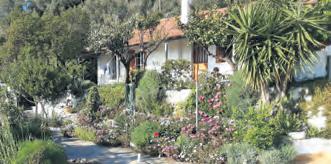
A beautiful range of plantable greeting cards & earth kind gifting for every occasion Let the love grow and enjoy 10% off on our website using code ‘GARDENS2023’ Selling to individuals and trade info@latitude50landscapes.co.uk www.latitude50landscapes.co.uk
ECOLOGICAL LANDSCAPING CONSULTANCY & DESIGN

Specialists in Nature Recovery & Habitat Enhancement


Providing Nature-Based Solutions for: Ecological Landscape Design, Wildlife Ponds, Lakes, Wetlands, Nature Landscaping, Conservation Arboriculture.
Consultancy & Design.
Management & Construction.
Tel: 01392 240 877
Restoration@LostHabitat.uk LostHabitat.uk
FRUIT/VEG CAGES

GARDEN BUILDINGS
Enquiries 07786 118762 REACH
A range of over 200 greetings cards and prints from the flower paintings of ANNE COTTERILL


We sell to both individuals and trade. No order too small. Contact us for your free catalogue.
Penrice Castle Gower
16 holiday cottages on an 18th century Estate on the Gower Peninsula with beautiful Grade I listed historic park and gardens. Tel: 01792 391212 www.penricecastle.co.uk
NORTH DEVON NEAR CLOVELLY. 3 delightful cottages situated in 12 acres of idyllic countryside. Sleeps 2-4. 1 Wheelchair friendly. Brochure: 01237 431324 www.foxwoodlodge.co.uk foxwoodlodge@outlook.com
Mill House Fine Art Publishing, Bellflower Gallery, Market Place, Colyton, Devon EX24 6JS Tel. 01297 553100 info@millhousefineart.com www.millhousefineart.com

GARDEN PLANTS/ACCESSORIES
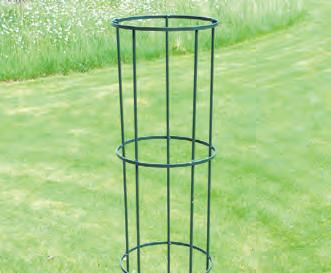
classified@countrygardener.co.uk
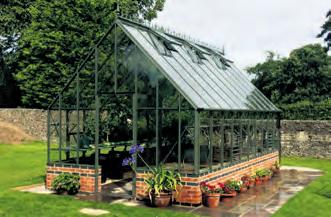
Country Gardener 44
BED & BREAKFAST
CARDS, PRINTS & GIFTS
Call: 0800 103 2800 www.wmjames.co.uk Fruit Cages & Netting made in the UK Get 10% Off Online with Voucher Code: CG2023
Looking for a greenhouse? www.greenhouseinstallation.com Tel: 07971 251261 THE GARDENER’S BLACKSMITH jonne@jonne.co.uk 07770 720 373 Artist blacksmith based near Axminster designing and manufacturing garden plant supports, structures, garden art and fine art bronzes. Commissions welcomed. www.thegardenersblacksmith.co.uk ADVERTISE HERE FROM JUST £2 PER WORD classified@countrygardener.co.uk
300,000* LOYAL READERS WITH Classified advertising
+44 7944361777 kalivikaravi@gmail.com www.kalivikaravi.com
Karavi ‘A Greek Retreat for Two’ on SKOPELOS
The













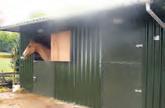





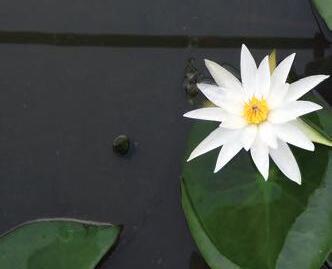



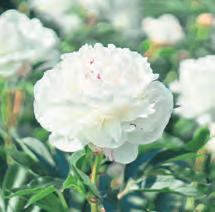
Subscribing is simple. Just fill in the form below and include your cheque for £20. SUBSCRIPTIONS SUBSCRIBE NOW ..and treat yourself to a gardening delight
ten issues, never miss out Just £20 for a respected, knowledgeable and inspirational gardening magazine P P
Next
to subscribe to Country Gardener for the next ten issues
£20:
I would like
for
This is a subscription just for me *
Cotswolds
Devon
Dorset
Somerset
Hampshire * Complete this form and include a cheque for £20 made out to Alro Publishing Ltd and send to: Magazine Subscriptions, Country Gardener, Mount House, Halse, Taunton, Somerset TA4 3AD. Remember to tell us which one of the five editions you would like to receive. Your details: Title Forename Surname Address Postcode Tel No Details of gift recipient: Title Forename Surname Address Postcode Tel No Hassle free and delivered to your door every month
This is a gift (send next available issue) * Please choose your region by ticking the box:
*
*
*
*
Psubscription
£20
a 10
one of our five editions of the magazine
is
to
live. www.garsons.co.uk Fontley Hampshire COLLECTIVE Hampshire www.countrygardener.co.uk Issue No 148 May 2023 FREE How organic Readers share gardening myths and Perfect sweet peas Container gardening style chickens The best gardens to visit ALL THINGS WHITE AND WONDERFUL The power of one colour gardening PLUS: GARDENER GROWN FOR C A NER WIN! A GORGEOUS AFFINITY SWING SEAT
costs just
and guarantees
times a year magazine packed with information , gardening advice, local events. You can select from
which
relevant
where you
GARDEN SERVICES PERSONAL POSTAL FRIENDSHIP CLUB. Friends, pen pals, perhaps romance. UK-wide. No internet needed. Call for details: 01633 526523. POLYTUNNELS SEED SUPPLIERS SPECIALIST GARDEN PRODUCTS SPECIALIST NURSERIES TERRACOTTA POTS CLASSIFIED Stockists of frostproof pots and garden ornaments from Greece and around the world as well as a host of other gifts and bits and pieces Open every day Eastoke Corner, Hayling Island, Hants P011 9LU 02392 637590 The Terracotta Pot and Gift Shop Free emailed guide on request Discover the Diversity of Hardy Geraniums! We stock up to 200 varieties throughout the year Contact Gary: 01684 770 733 or 07500 600 205 Gary@cranesbillnursery.com www.cranesbillnursery.com Tel: 01935 891668 www.dorsetwaterlily.co.uk DORSET WATER LILY COMPANY TheUk’slargestselection ofestablishedpot grown waterliliesforpublic andlandscapesupply. Speciality hardy marginals and moisture loving bogside. Catalogue available or visit us MON/ FRI or SAT 9 - 4pm, Yeovil Road, Halstock BA22 9RR Consultation/Design & Landscape Service FORTON NURSERY Top Quality Perennials, Shrubs & Trees T: 01460 239569 E: fortonnursery@btconnect.com W: www.fortonnursery.co.uk Forton village, near Chard TA20 4HD Closed Tuesdays and Wednesdays CERTIFIED ORGANIC VEGETABLE PLANTS Growers Organics, Kitley Farm, Yealmpton, Devon PL8 2LT www.growersorganics.com Tel: 01752 881180 Est. 2003 CustomTimberBuildings.co.uk Ex-display buildings for sale | Anything to order 01935 891195 Stables Garages Garden Offices Log cabins and July delivery dates All with one off delivery charge All chosen for outstanding garden performance n All strong, healthy plants EarlySpringStarter Catalogue Request our NEW 2023 early starter spring catalogue for free 01376 570 000 or www.kingsseeds.com REACH 300,000* LOYAL READERS WITH Classified advertising classified@countrygardener.co.uk POLYTUNNELS FROM £499 AVAILABLE TO VIEW BY APPOINTMENT 01363 84948 info@ferrymanpolytunnels.co.uk www.ferrymanpolytunnels.co.uk Yenstone Walling Dry Stone Walling and Landscaping Patrick Houchen - DSWA member Tel: 01963 371123 www.yenstonewalling.co.uk www.countrygardener.co.uk 45
Move them, don’t lose them!
IN 1828 SIR HENRY STEWART PUBLISHED THE PLANTERS GUIDE, ALL 414 PAGES OF IT! THIS WAS A GUIDE NOT FOR PLANTING IN GENERAL BUT SPECIFICALLY FOR THE TRANSPLANTING OF MATURE TREES, SAYS MARK HINSLEY.
Lancelot 'Capability' Brown designed and built the gardens at Sheffield Park near Brighton in 1776. He created two lakes to reflect the colours of the surrounding foliage, particularly in autumn. On one of the dams formed to create the lakes he planted a yew tree. The yew tree is 100 years older than the dam. How did it get there? They transplanted it.
Then there was William Barron of Borrowash, Derbyshire. William was nationally renowned for his skill and success in transplanting large trees. So, in 1879 when the good people of Buckland, Dover, down in Kent, wanted to build an extension to their Church but had an ancient yew in the way, William was called in to see if he could move it.

He did it. The yew tree had a girth of 20ft (6m), which puts its age at 700–1,000 years old at the time. He moved it 60ft, it took two days to complete the move, and he succeeded! I can confirm that I have seen the tree; it is there to this day.
The earliest reference I have found to trees being transplanted (in this case the tree was slung from a pole with its root wrapped in what looked like hessian, shouldered by a couple of lusty gardeners) was an 11th century BC Egyptian tomb painting.
So how come none of the above information had ever reached Plymouth?
They had a valuable resource, and they trashed it. They say they were going to replace the felled trees with large semi-mature trees in the new scheme. Why? They already had them on site!
Have they any idea what the carbon footprint of a specially raised semi-nature tree transported hundreds of miles to be planted in a new scheme is? Some work done in Chicago indicated that semi-mature trees raised only 47 miles outside the city for planting in the streets had to live for 30 years just to become carbon neutral. And they will not find 160 semi-mature trees ready for planting within 47 miles of Plymouth. Unless they had pre-warned the nursery industry about ten years ago, they will be lucky to find them in England.
Semi-mature trees take years to be properly established. They will need support and irrigation and weed control, all the things that their own existing trees would have needed if they had kept them and transplanted them into the desired positions for the new scheme.
They owned these trees – they had clear access to them – how many years has this scheme been in the planning?
If they had used their brains, they had all the time in the
world to prepare the root-balls of the Plymouth trees to ensure successful transplanting.
Generally, trees outside of domestic gardens come under the regulations of the Forestry Act and the requirement for a Felling Licence before felling more than a few cubic meters of timber in any calendar quarter. However, public open spaces are exempt from Felling Licence requirements because they are managed by a ‘Responsible Authority’. Given what has happened in, first, Sheffield and now Plymouth maybe that exemption should be under review?
I have sat in on numerous Local Council Committee meetings which have had tree matters before them. The moral gymnastics performed to justify whatever it is they want to do can be Olympic in proportions. Local Authorities should not be policing themselves.
Arboricultural Consultants Ltd, offering tree consultancy services. www.treeadvice.info
Time Off Kate Lewis timeoff@countrygardener.co.uk
Cath Pettyfer - Devon cath.pettyfer@countrygardener.co.uk
Tel: 01837 82660
Design & Production Aidan Gill aidan@countrygardener.co.uk
Distribution & Stockists
Pat Eade distribution@countrygardener.co.uk
Editorial Publisher & Editor: Alan Lewis alan@countrygardener.co.uk
Tel: 01823 431767
Advertising Sales Ava Bench - Somerset & Hampshire ava@countrygardener.co.uk
Tel: 01278 786139
Corina Reay - Cotswolds & Dorset corina@countrygardener.co.uk
Tel: 01823 410098
Classifieds classified@countrygardener.co.uk
Gemma Stringer gemma@countrygardener.co.uk
Accounts and subscriptions
Heather Rose heather@countrygardener.co.uk Magazines
Country Gardener 46
TREE SPECIALIST
Mark Hinsley, of Mark Hinsley
The Country Gardener magazines are distributed FREE at Nurseries, garden centres, National Trust Properties, open gardens, garden machinery specialists, country stores and farm shops in each county. All rights reserved. No part of this publication may be reproduced, stored or made available in any form, without the written permission of the copyright holder and Publisher, application for which should be made to the Publisher. Unsolicited material: do not send or submit your only version of manuscripts and/or photographs/transparencies to us as these cannot be returned to you. While every care is taken to ensure that material submitted is priced accurately and completely, we cannot be responsible or liable for any loss or damage suffered. Views and/or opinions expressed in this publication do not necessarily represent those of Country Gardener or the Publisher. Printed by Mortons Print Ltd, Morton Way, Boston Road Industrial Estate, Horncastle, LN9 6JR.
HOW TO transform your garden INTO A SECOND LIVING ROOM

As the weather gets warmer and with spring here at last, many gardeners will be starting to look out at how to create the perfect outdoor space to relax, lounge around or socialise in the sunshine.
We’ve all heard of the outdoor kitchen, but the outdoor living room is the next big thing. Indoor-outdoor living is set to be huge this year, with the garden becoming an extension of the home and a flowing transition from the living room.
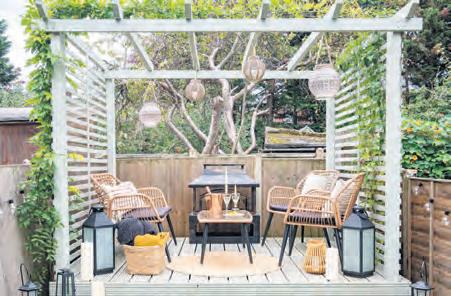

So we’ve taken the opportunity to identify five simple ways to transform your garden into a usable, comfortable yet vibrant living space.
Outdoor sofa
A comfortable place to sit is a garden necessity - whether it be a lounger, a big chair or even a weather-durable sofa. Stylish rattan or wicker chairs provide a link between indoors and outdoors while also being low maintenance and breathable.
Metal chairs are a more robust option, practical and often stackable while providing an elegant French bistro look.
Light-coloured furniture
In order to give the indoor-outdoor flow, your garden could adopt the colour scheme, style or textures of your living room. Perhaps using the same accessories throughout or patterns and colours which make you feel at home. The most crucial thing in creating your outdoor space is that it provides an environment in which you can truly relax. Stick to light colours where possible. Light-coloured dining chairs, tables and loungers often suit the spring vibe and create a fresh, clean look in the garden. White outdoor furniture also looks especially good in contrast to the deep greens of garden plants, shrubs and trees.
few throw pillows. This also creates the ultimate comfort. Many outdoor pillows and rugs are made from recycled polyethene, meaning they’re both durable and eco-friendly. Rugs also create an illusion of floor space.
Add lighting
New lighting can help you see your outdoor living space in a whole new light - literally. To make your outdoor space feel more intimate and relaxing, add a few extra lighting options. Lighting and ambience are important in your living room so it’s important for your garden too. You want to be able to see while hosting or sitting with a book.
This may include solar-powered lanterns, a few strings of twinkle lights, or a couple of aromatic candles. And no matter what time of year it is, festoon lights (hanging in a tree or along a fence, perhaps) will always make the garden look welcoming.
Pop up a pergola
Pergolas zone an area and create a separate space within the garden. They’re also a perfect space for entertaining and provide a shaded spot from the spring sunshine. It also gives the feeling you’re in a room outside.
A table is important for your outdoor living space for entertaining or having a casual meal, studying or even working from home. We’d recommend a round table as they save space and the curves provide a more soft, cosy vibe to the outdoor space.
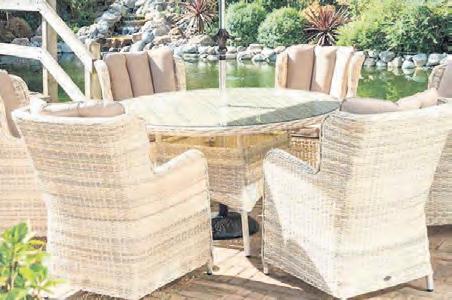
The key to great garden furniture is durability, practicality and, of course, style. Metal is always a good choice for the garden because it’s weather-resistant, although you might want cushions for more comfort. You could also opt for wooden garden furniture.
Add accessories
Introducing a sofa, however, immediately transforms your garden and is a much comfier option that will inevitably encourage you to spend more time outdoors.
There are outdoor sofas of all shapes, styles, colours, sizes and materials. You can find corner sofas which enable you to create separate zones in your garden or sofas with storage underneath where you can store blankets or throws. Sofas can be neutral in colour providing an elegant, classic look or more lively and vibrant. Dark sofas are also arguably the most practical and require less cleaning.
From the colour of the sofa to the throw across the bed, you put a lot of thought into the textiles that help craft the interior of your home, but do you do the same for your outdoor space? Accessories shouldn’t just be for the lounge or kitchen. Your garden can be accessorised with more than just flowers.
Swapping or adding fabric accents is one of the easiest ways to infuse your outdoor living space with colour, add some texture, and create an aesthetic that is cosy and welcoming. This can be done by adding an outdoor rug, hanging some curtains to diffuse harsh sunlight, or simply adding a
You could opt for a decorative wood frame that will add a classic feel however these may require more maintenance. On the other hand, a metal or aluminium frame will provide a more contemporary look and will also be more weather friendly and robust.
With the right furniture and accessories, you’ll create an outdoor retreat that helps you to slow down and appreciate true serenity.
The key to creating an outdoor living room is cultivating a comfortable space that you can relax in. It’s also important to create continuity and flow between your interior and exterior design choices whether that be in texture, colour or style.
www.countrygardener.co.uk 47
It only needs a few vital touches to turn your outdoor area into a usable, comfortable yet vibrant living space



Call 01489 779998 or click hambrooks.co.uk for a no obligation home visit design build maintain Hambrooks Garden Landscaping Creating beautiful gardens for over 50 years CountryGardenerCentreFPMay2023.indd 2 04/04/2023 14:58:13















































































 Graham Wren Portsmouth
Graham Wren Portsmouth


















































































































































































































































